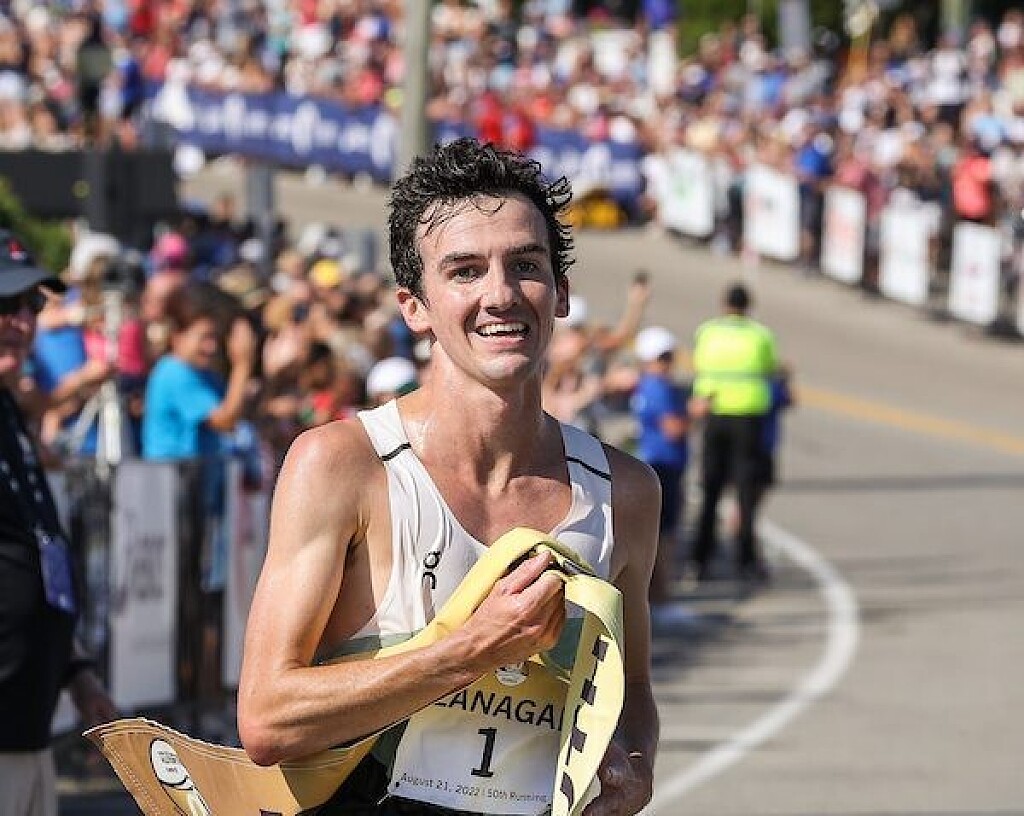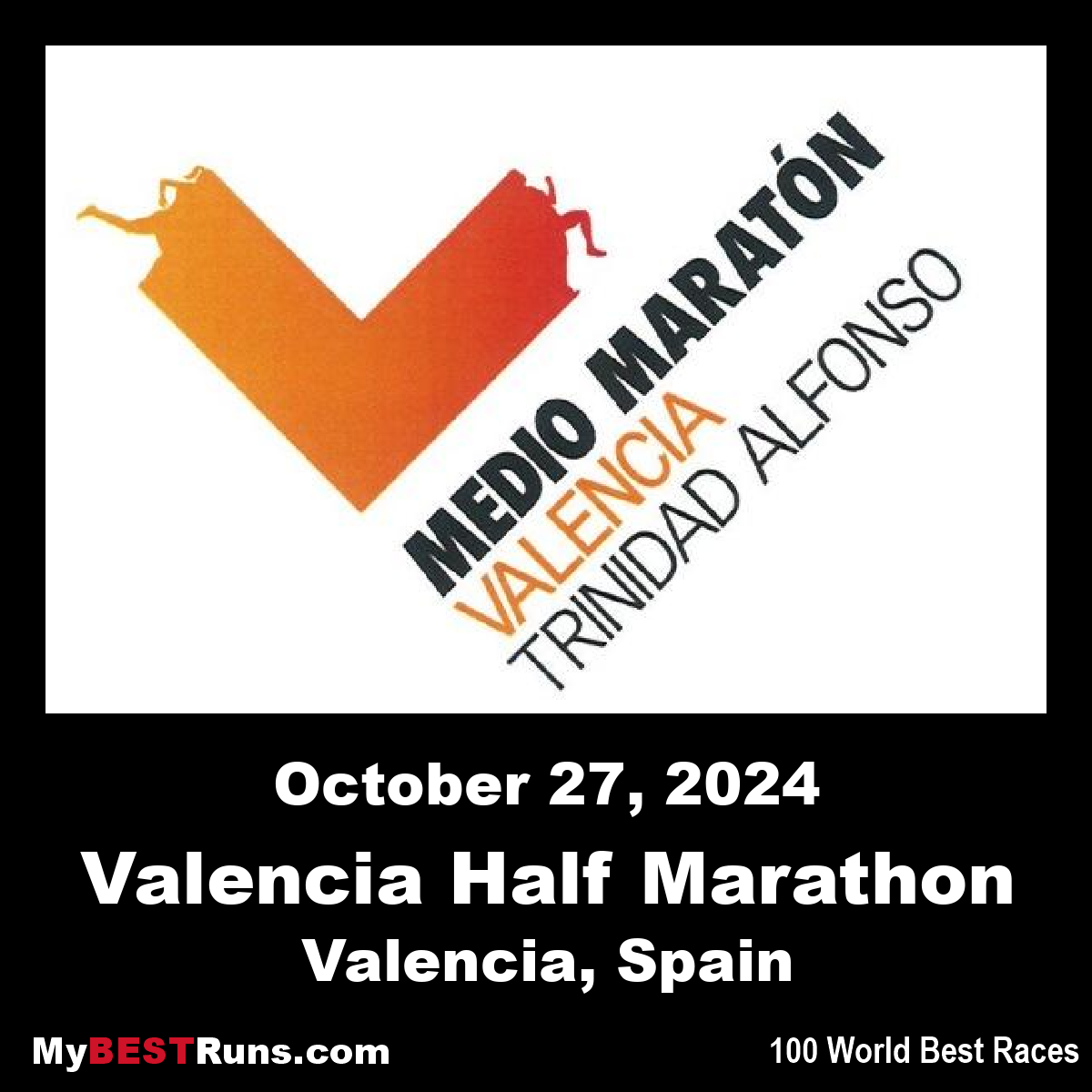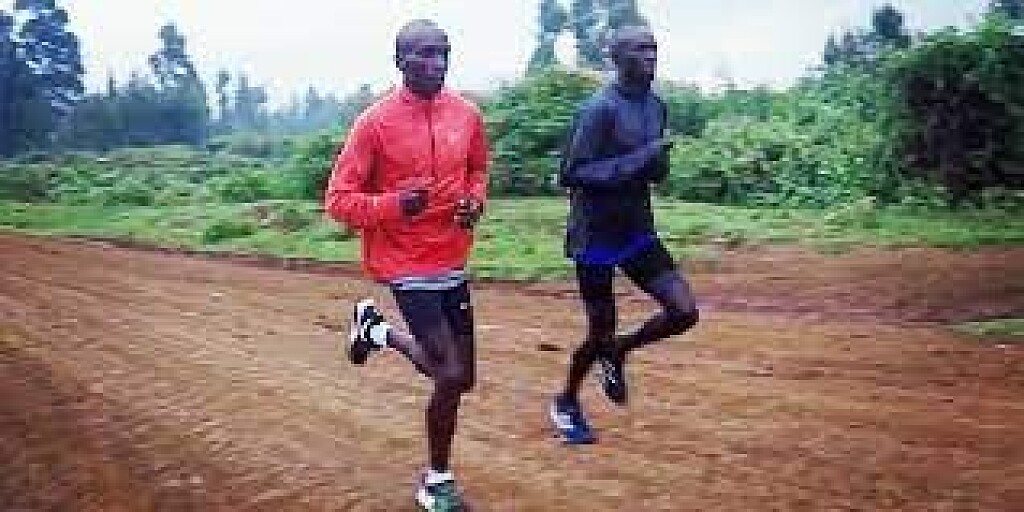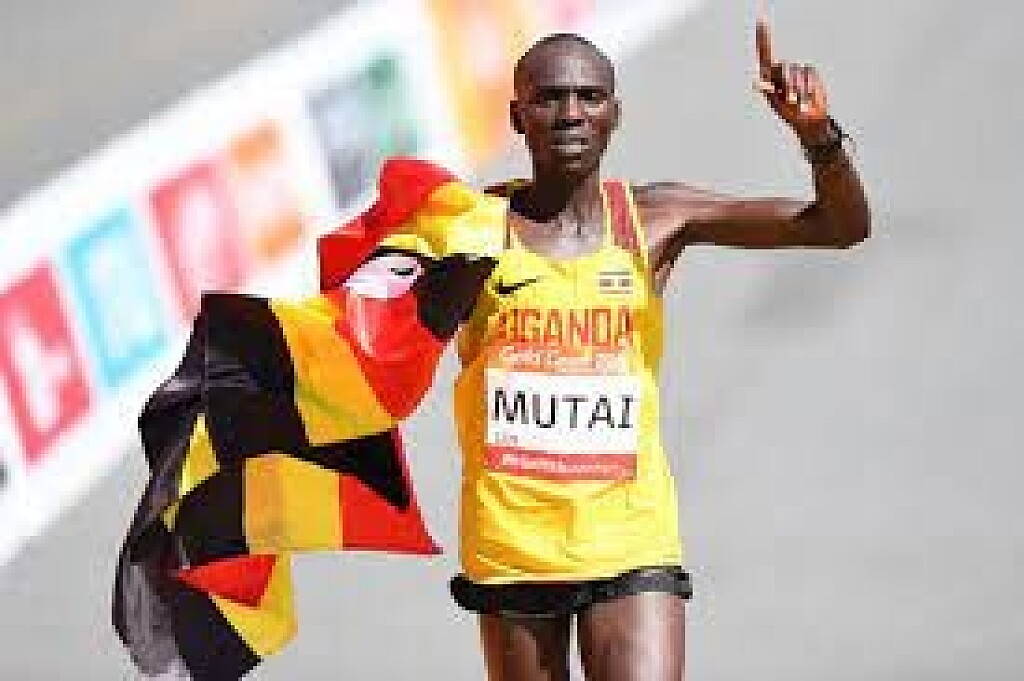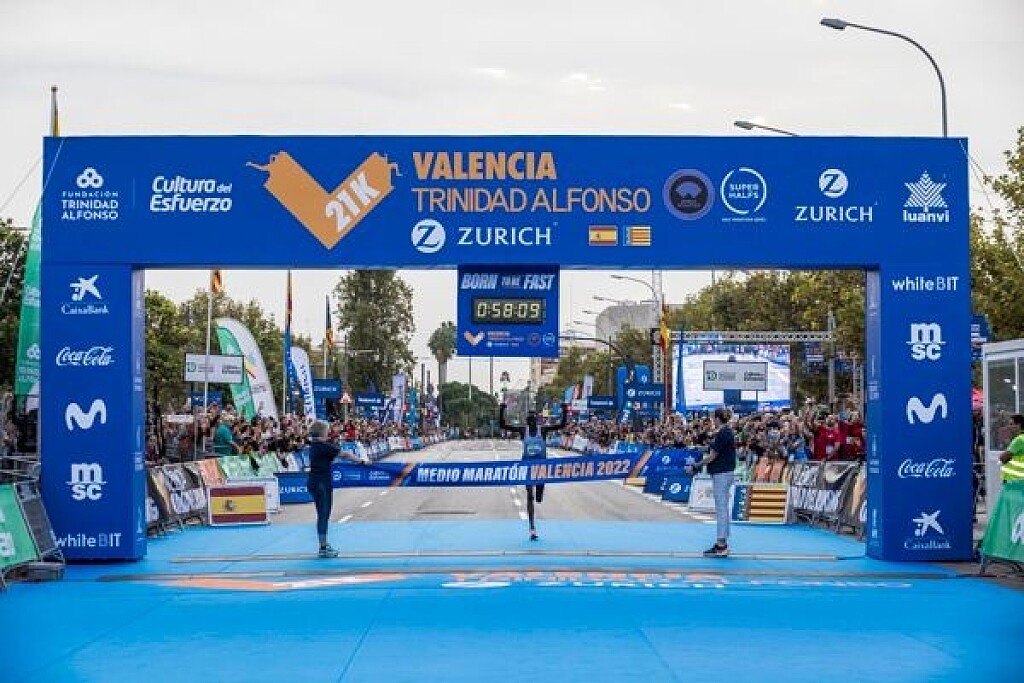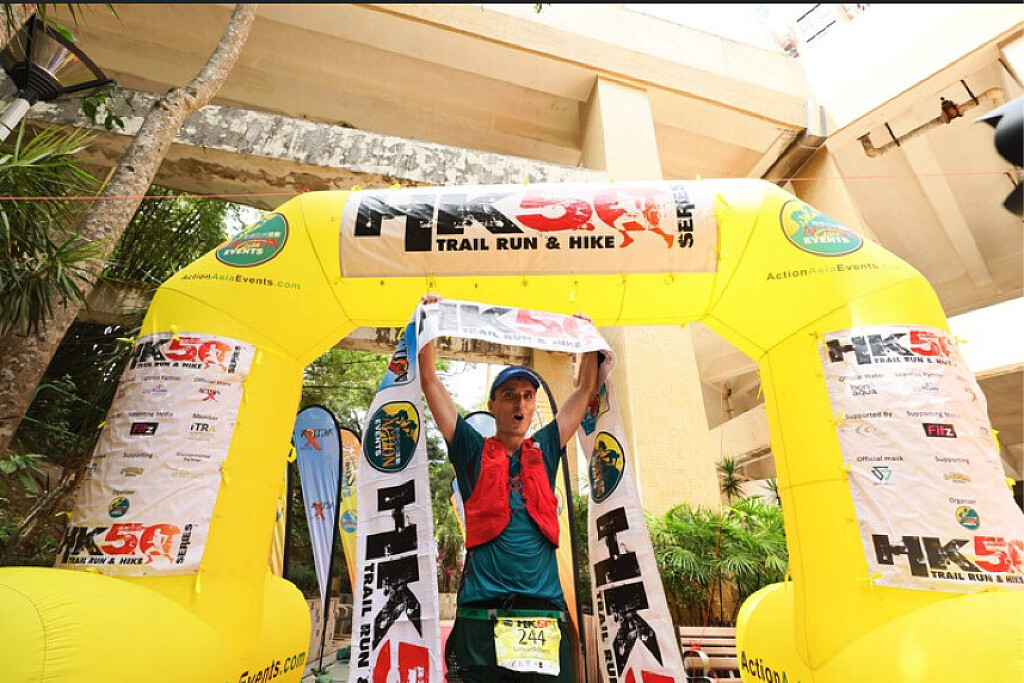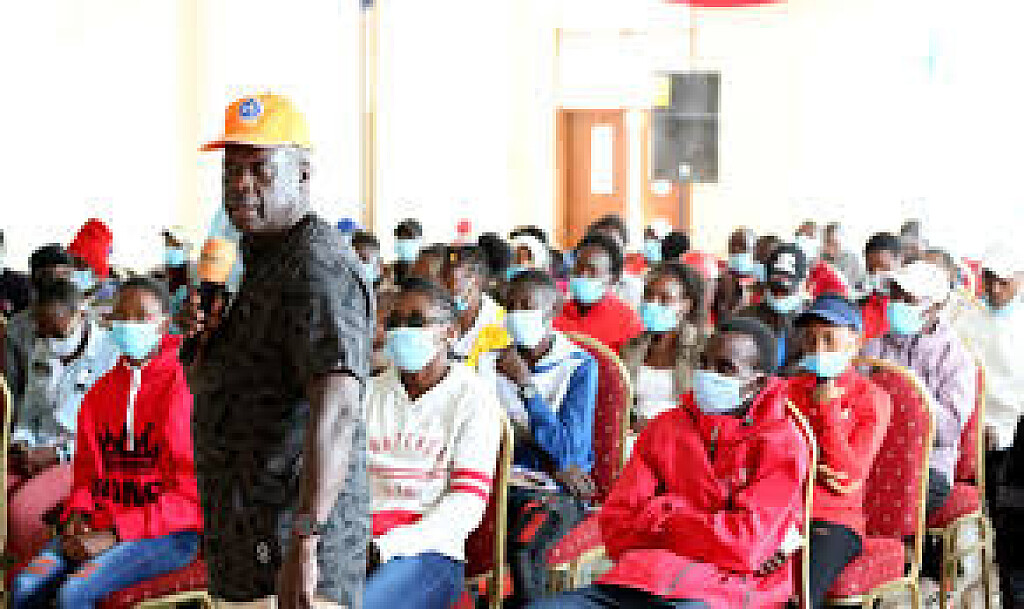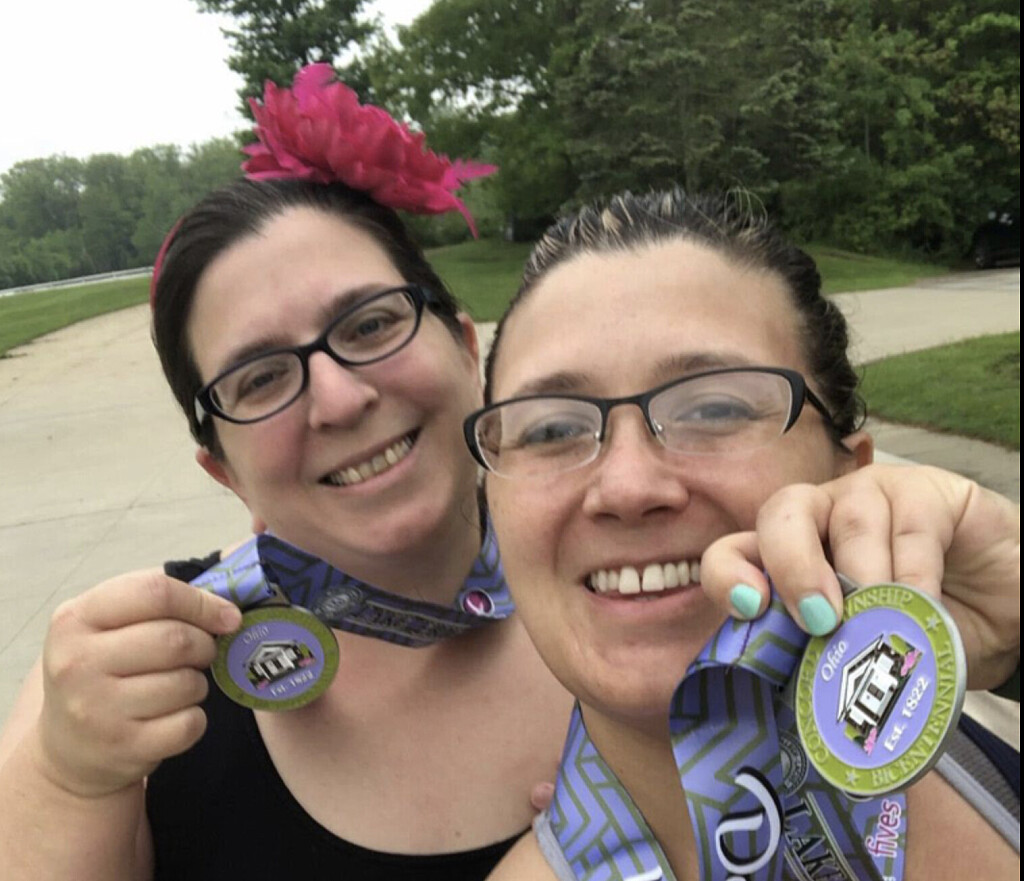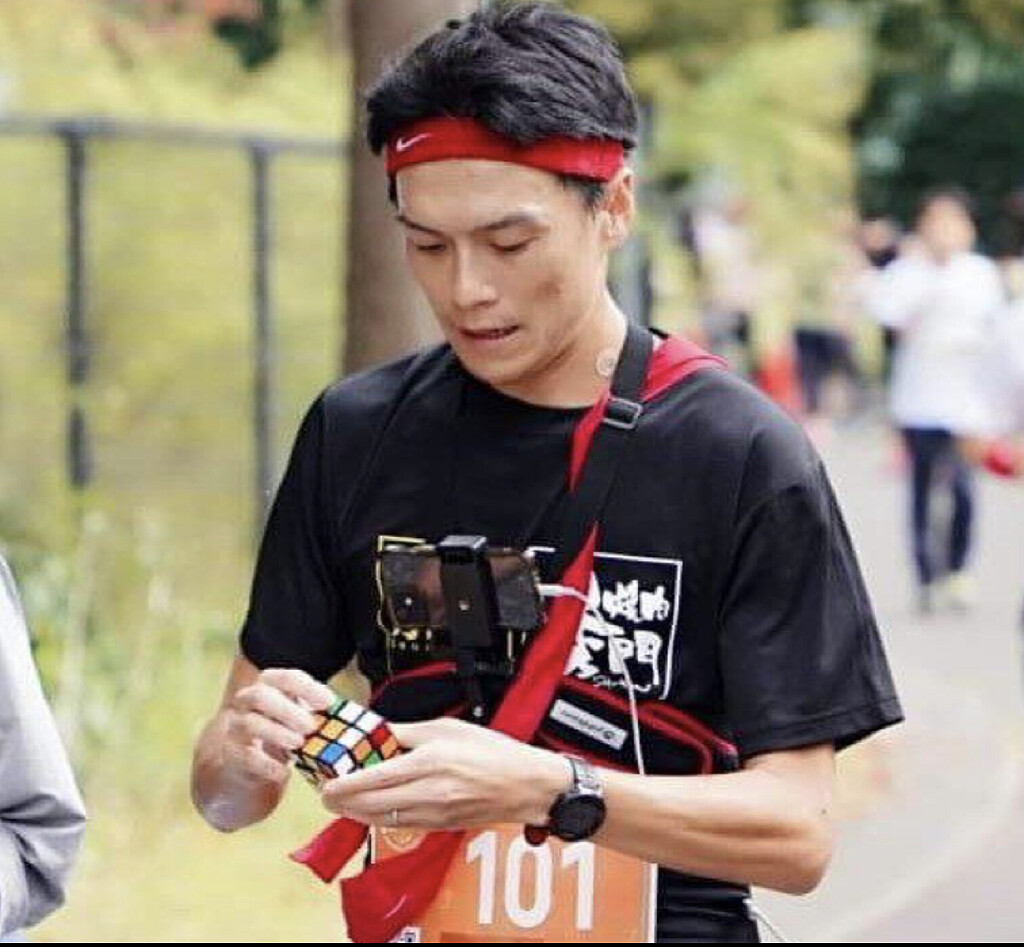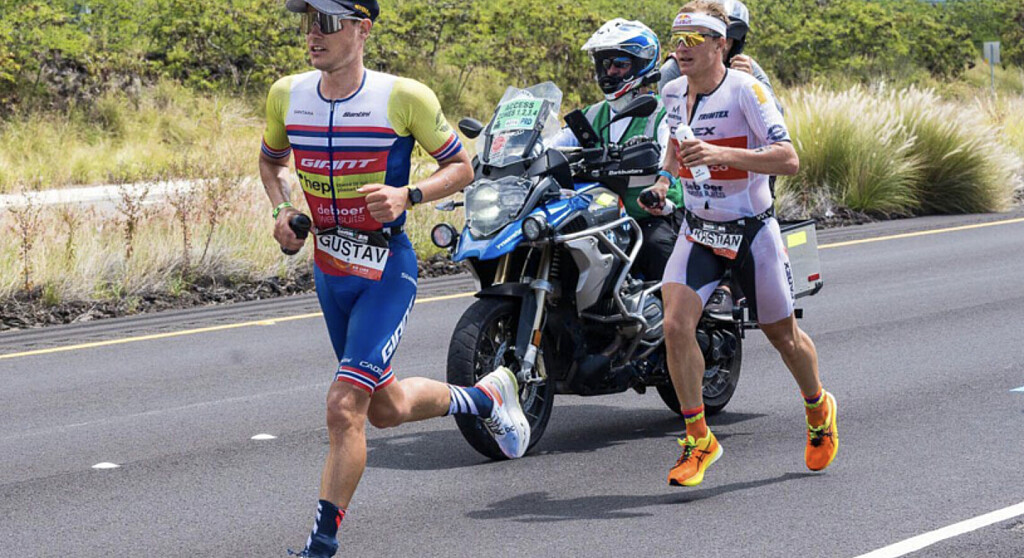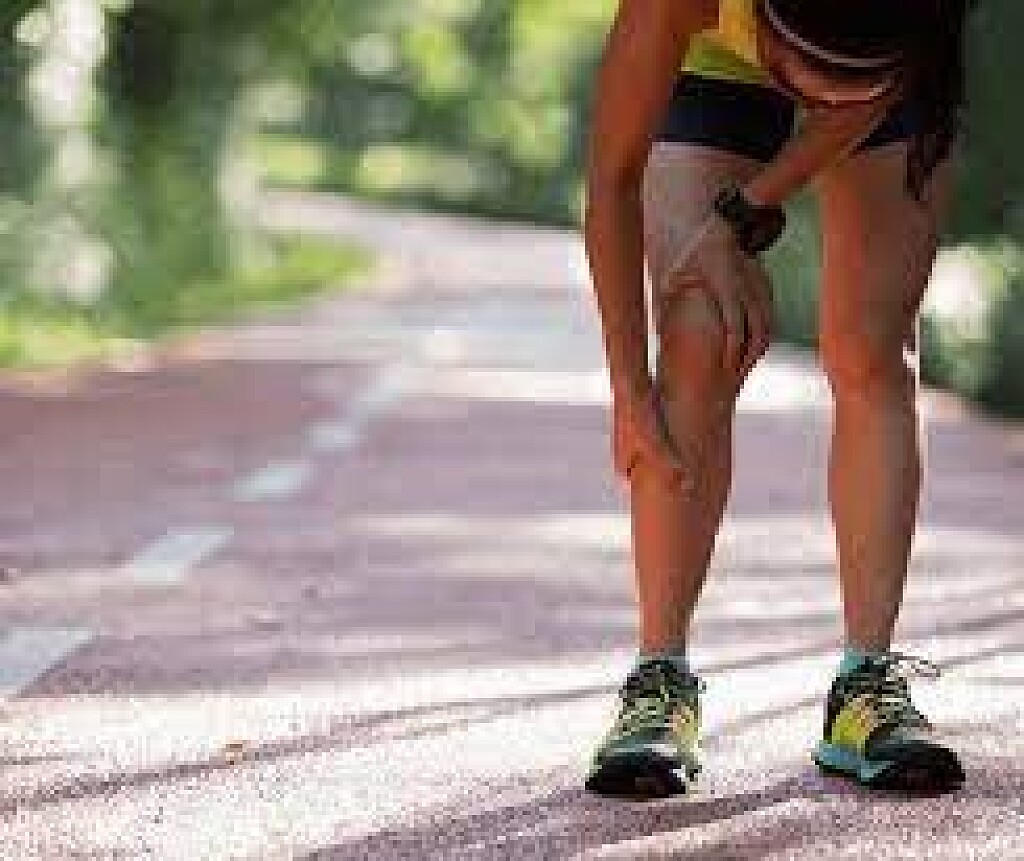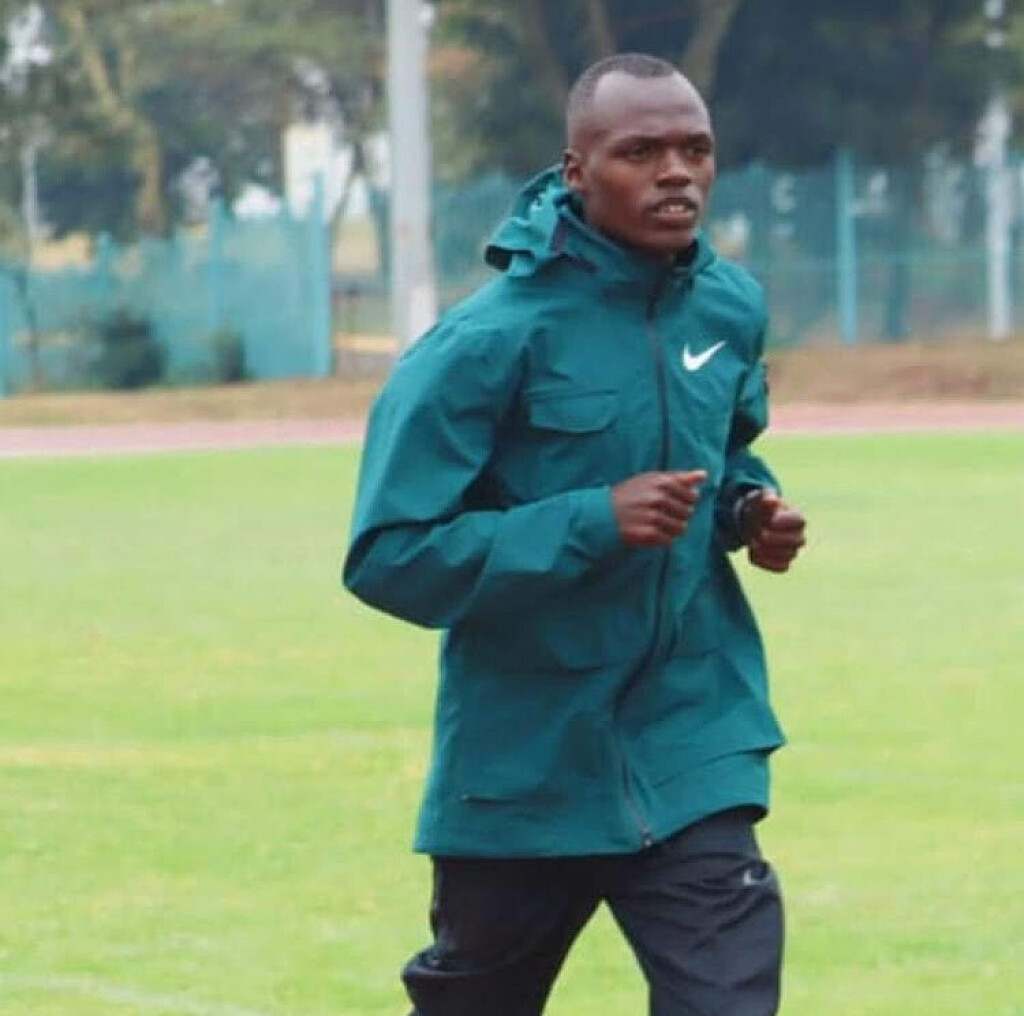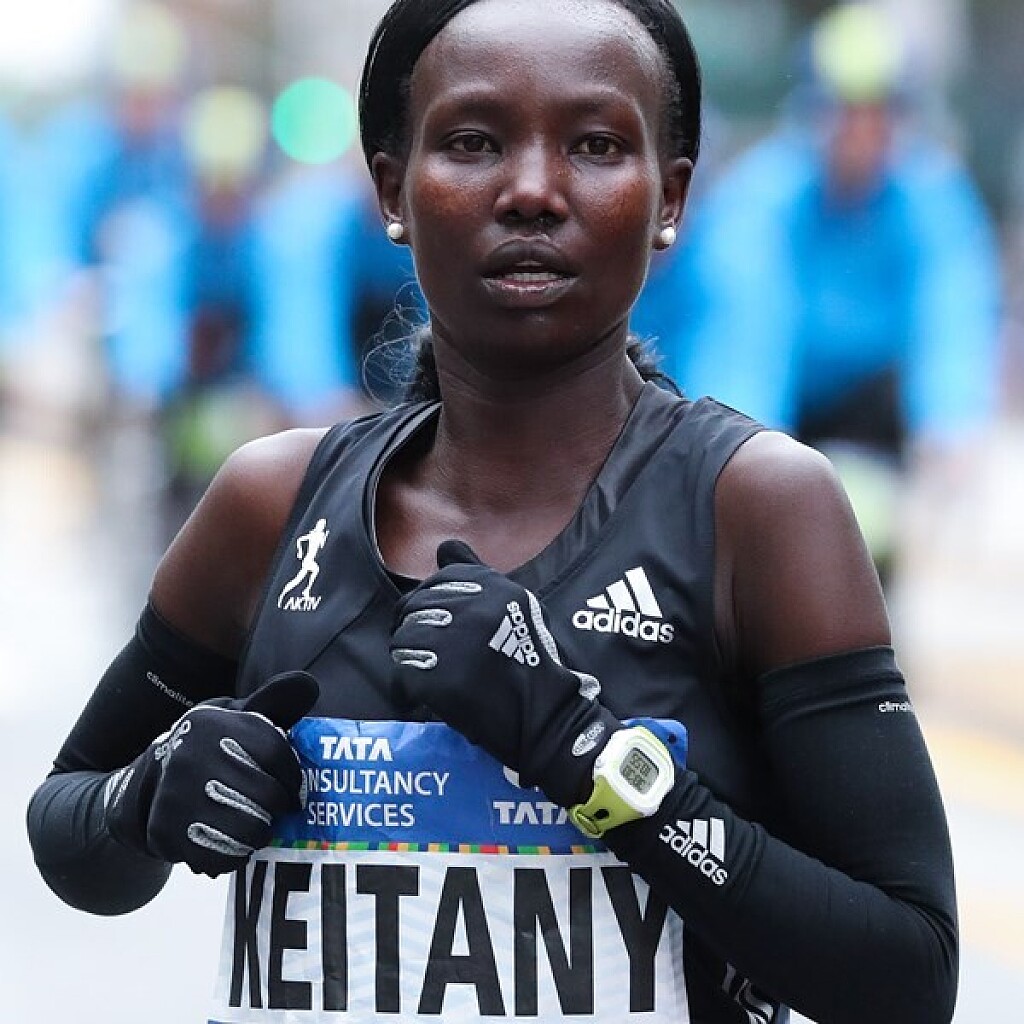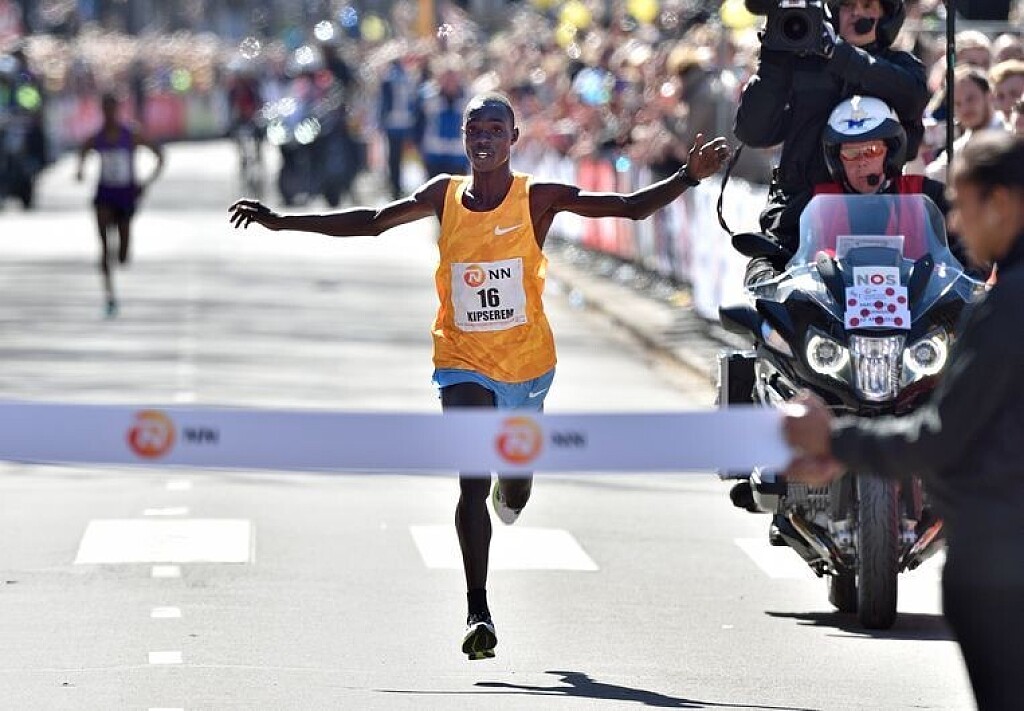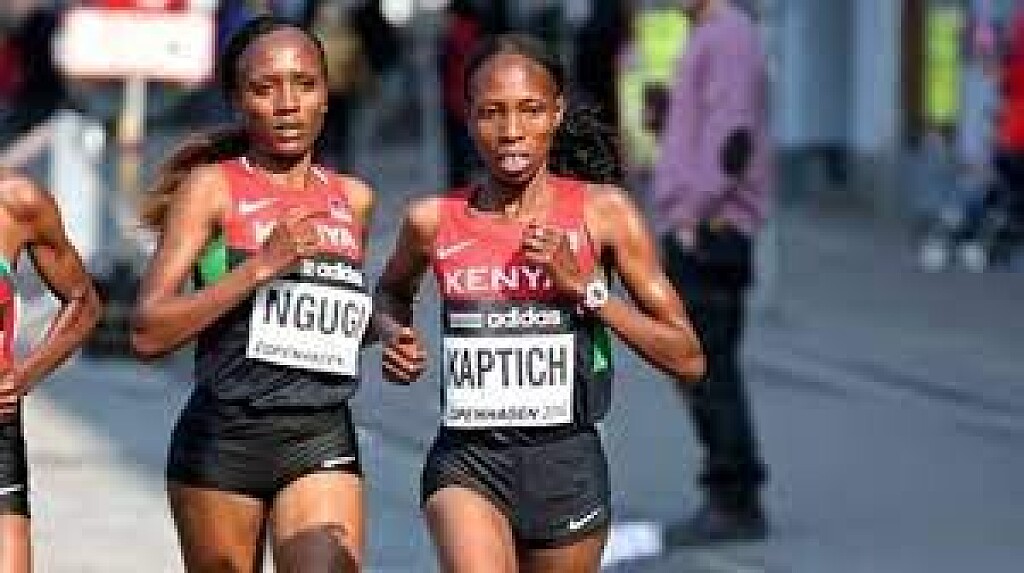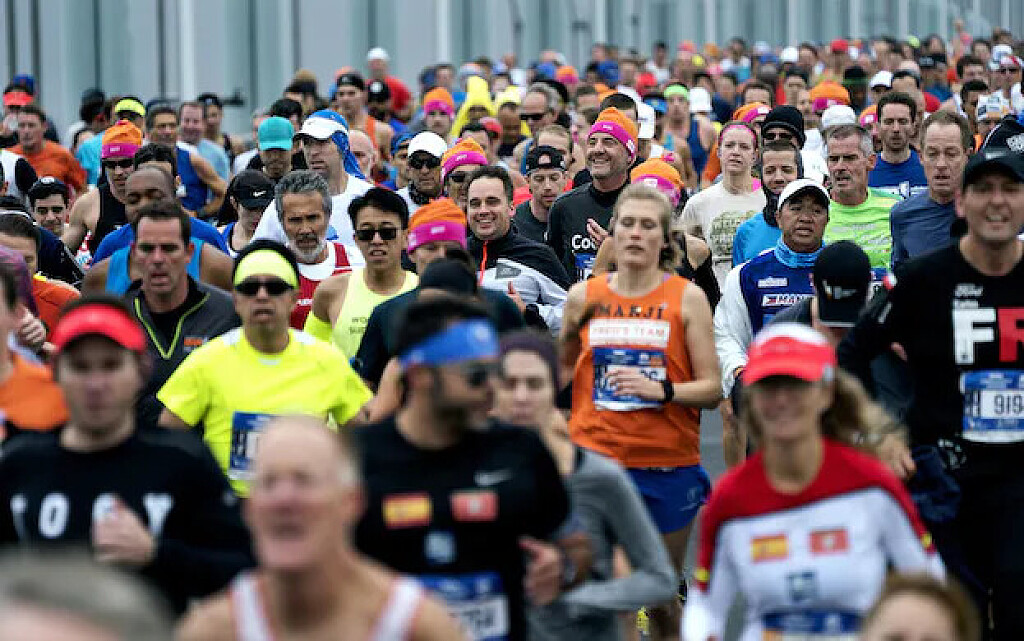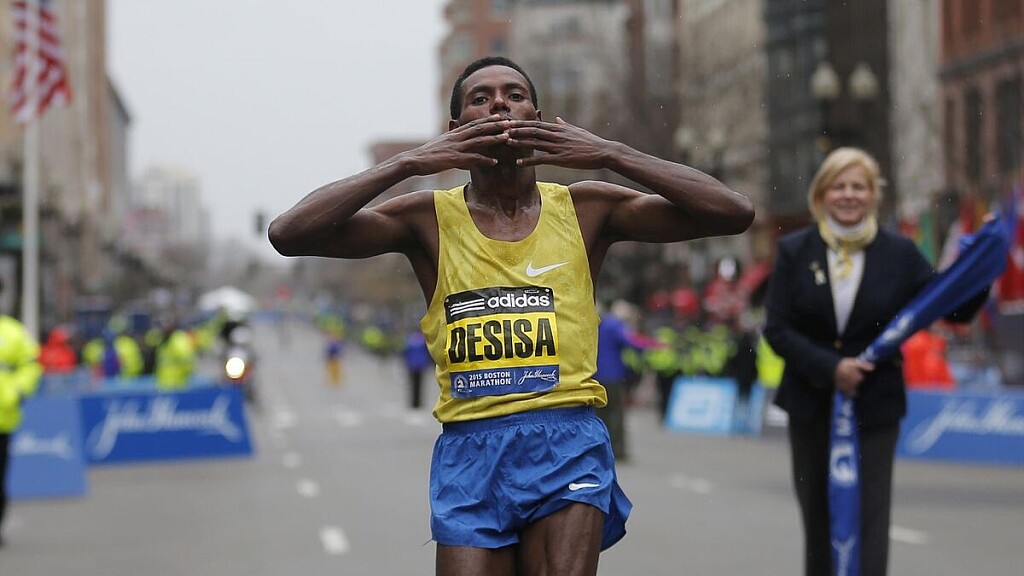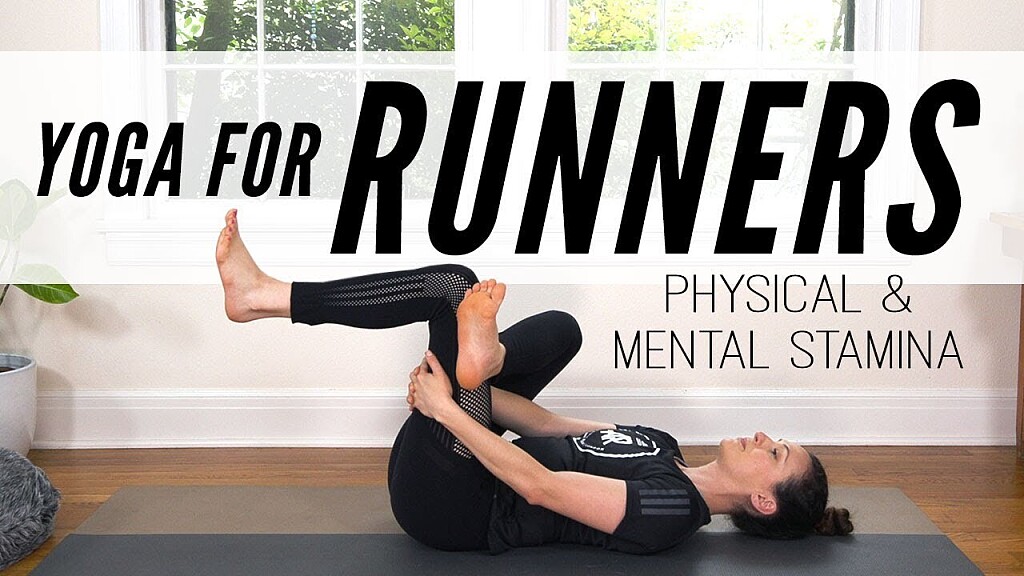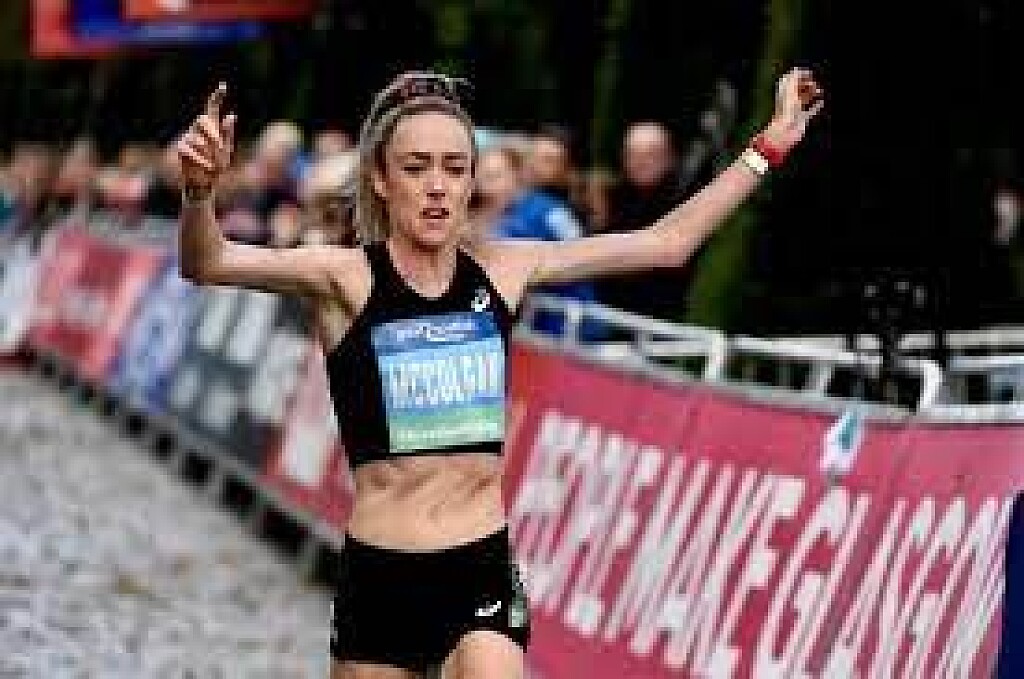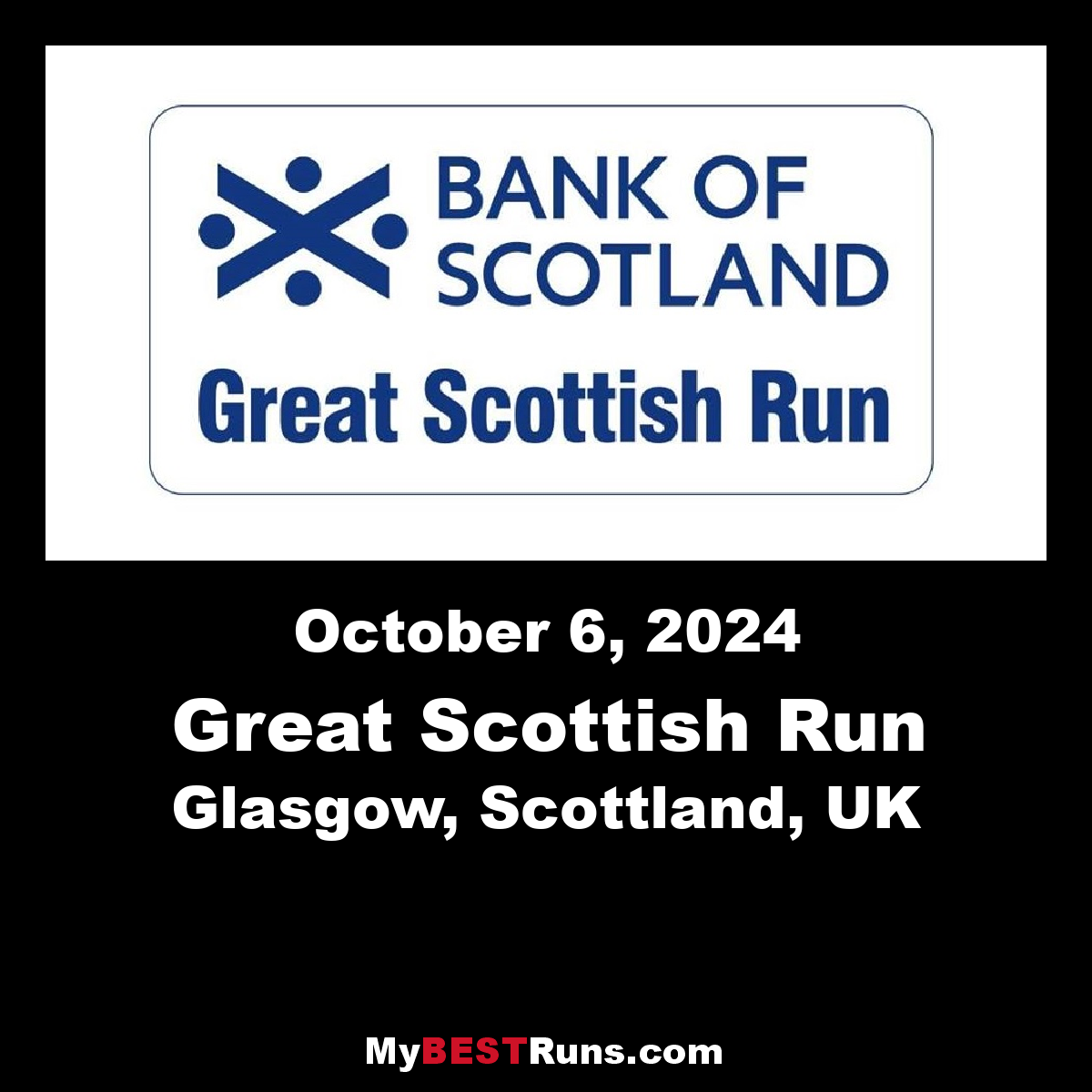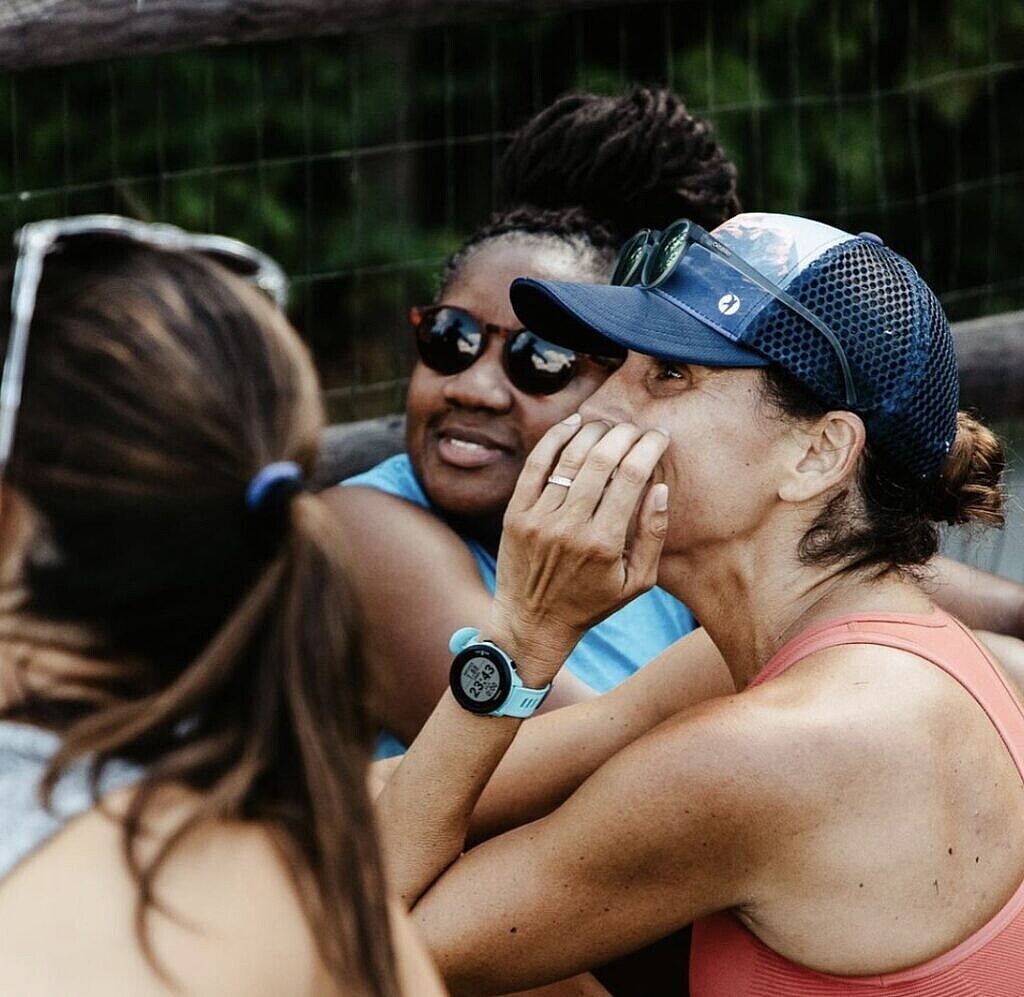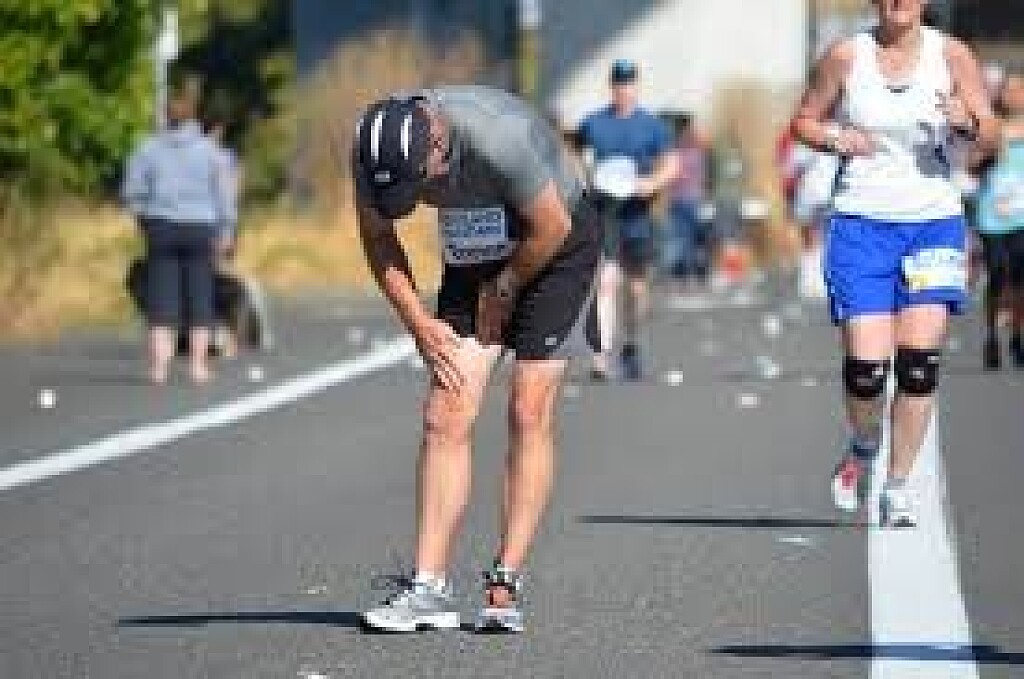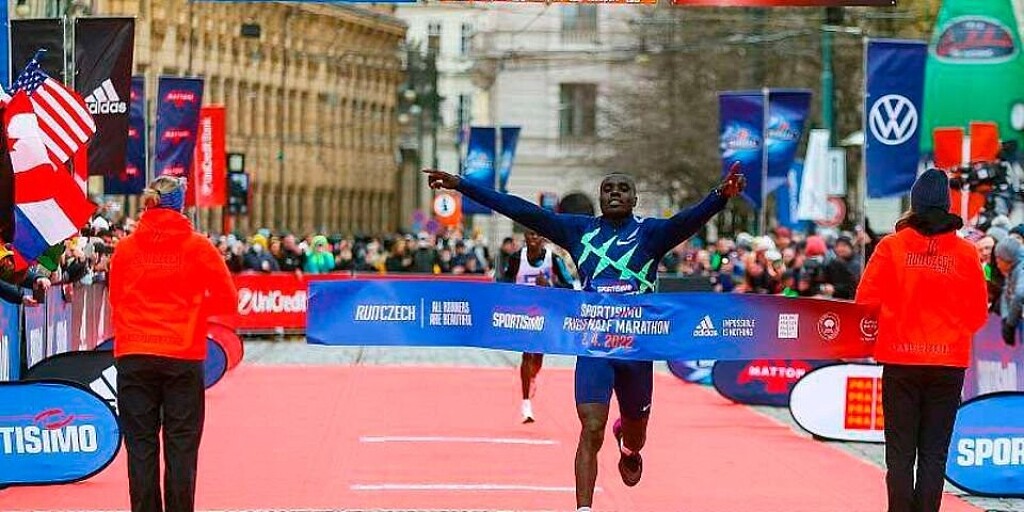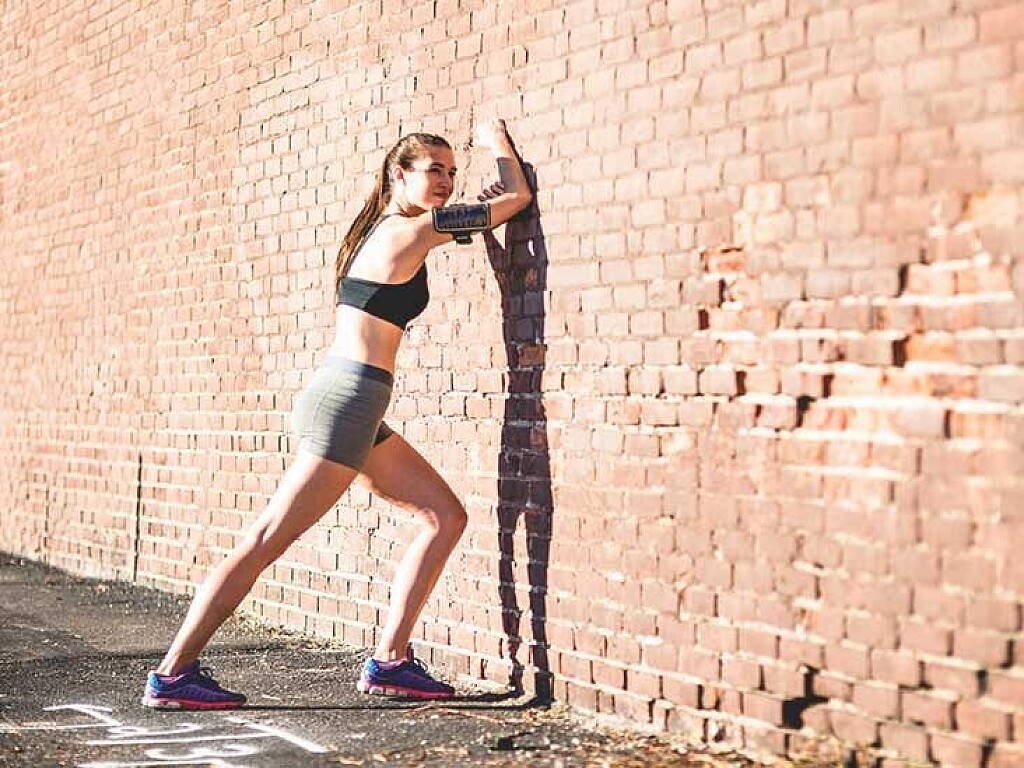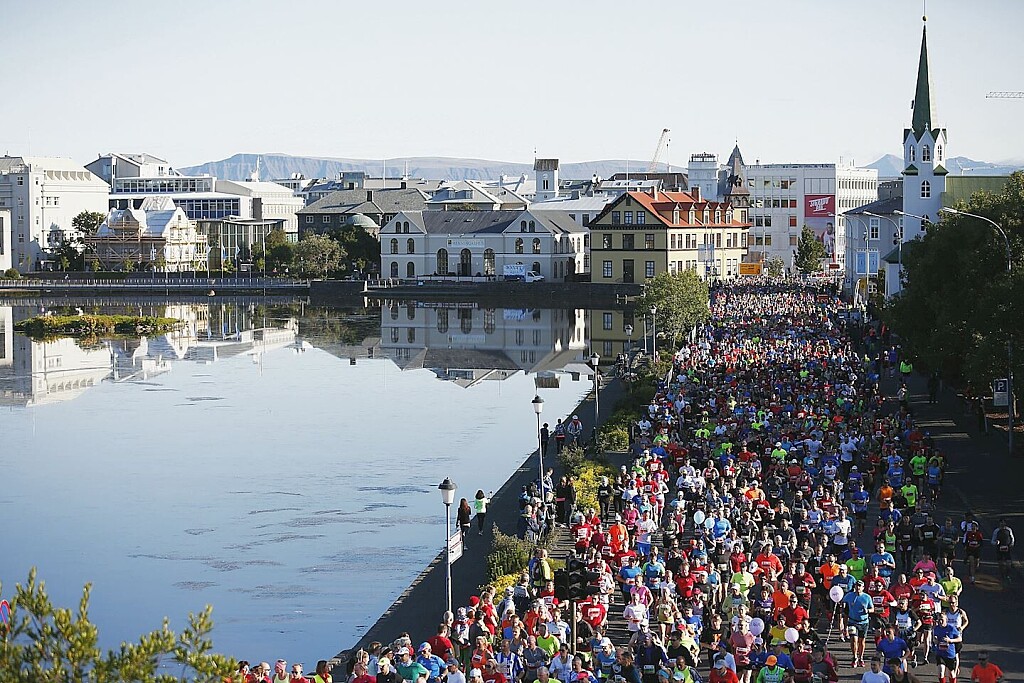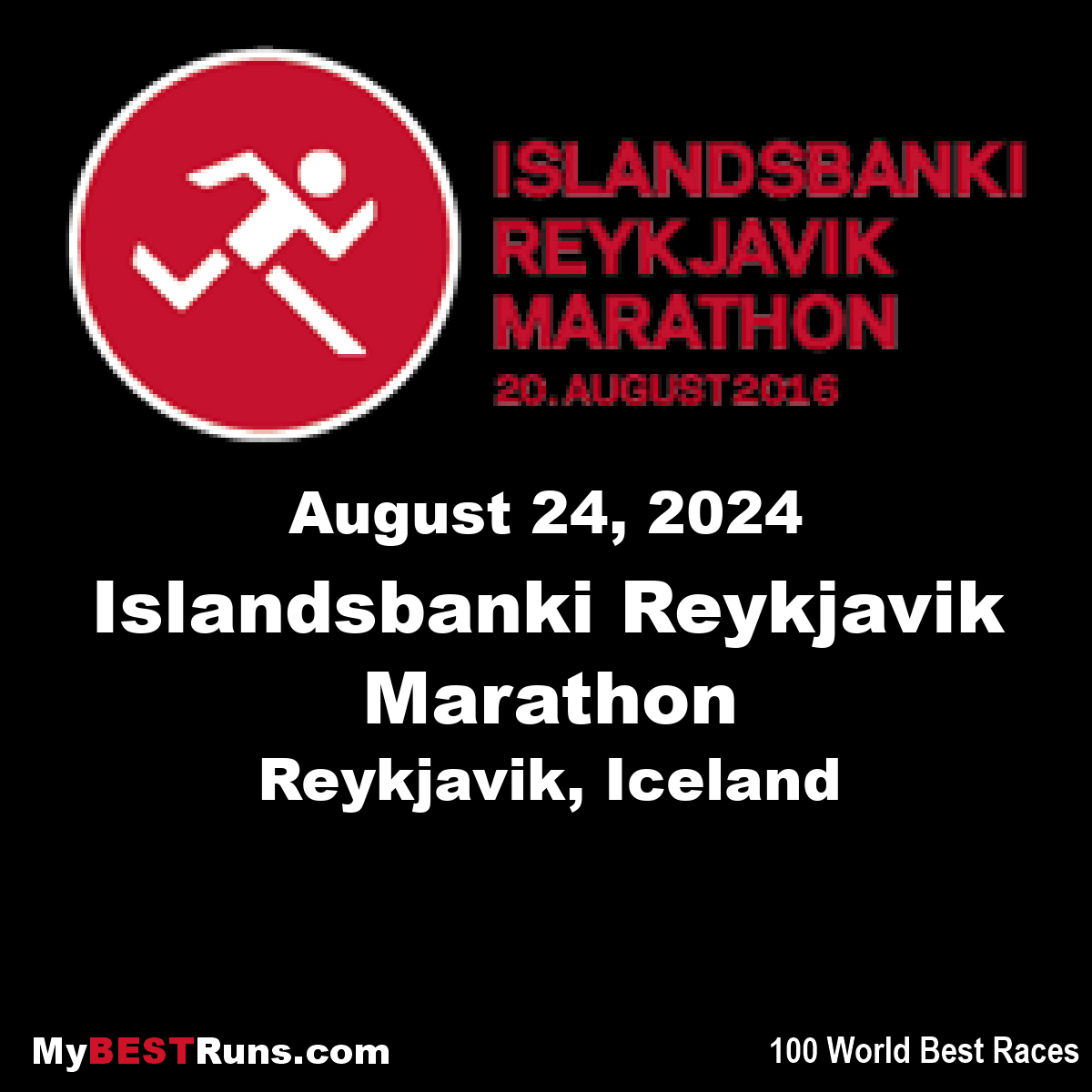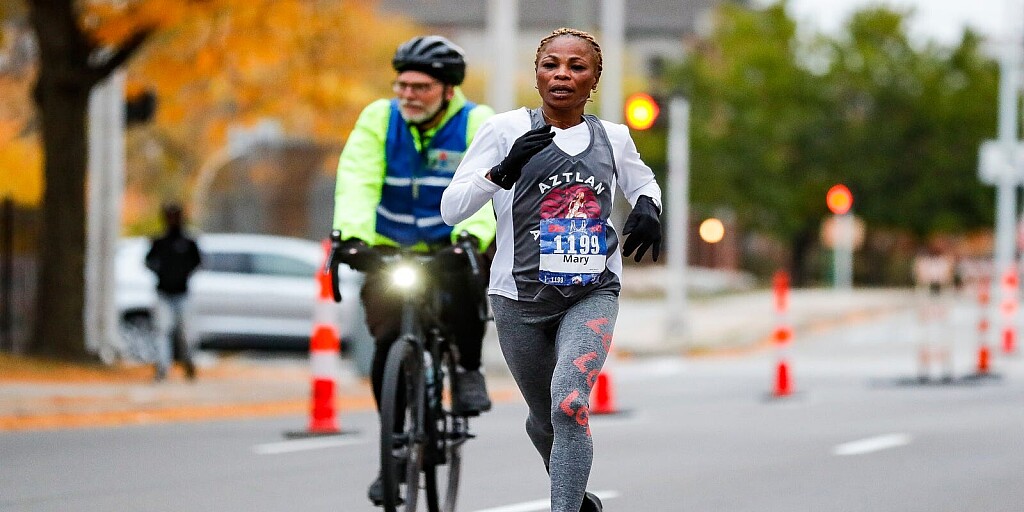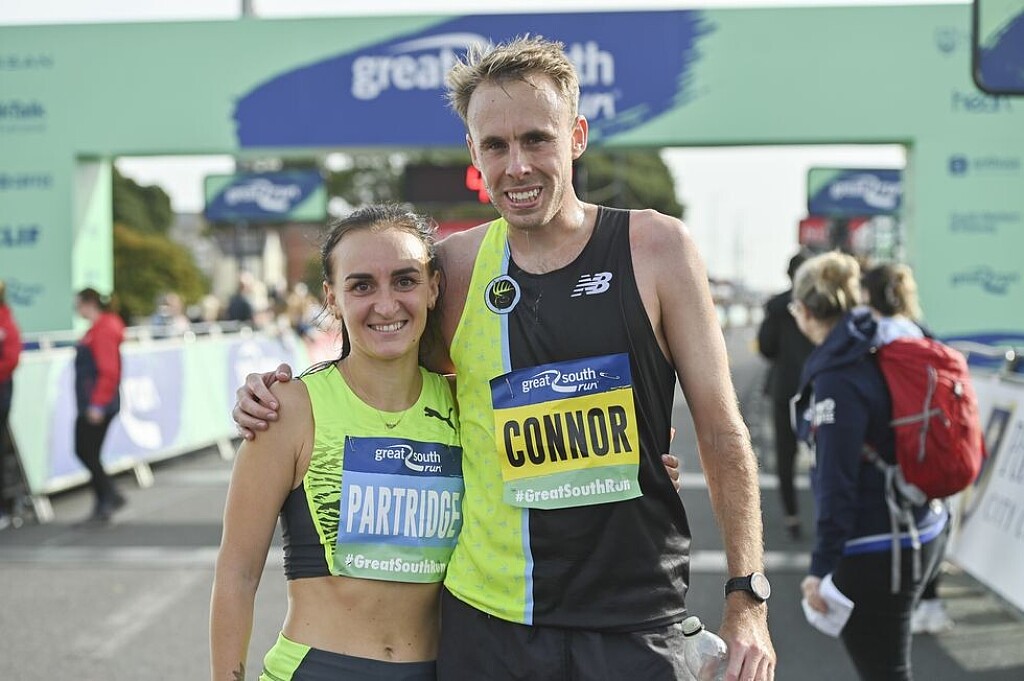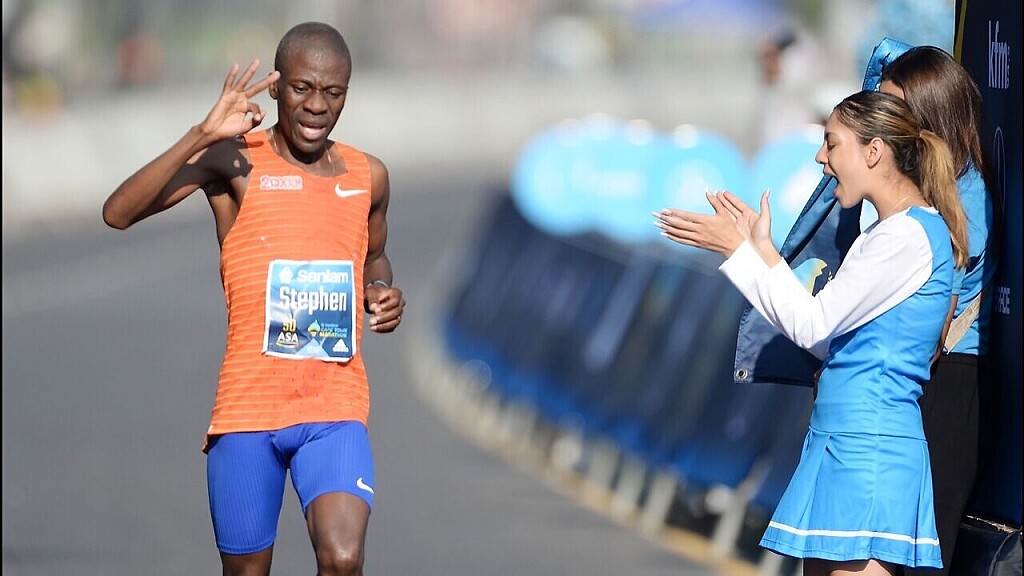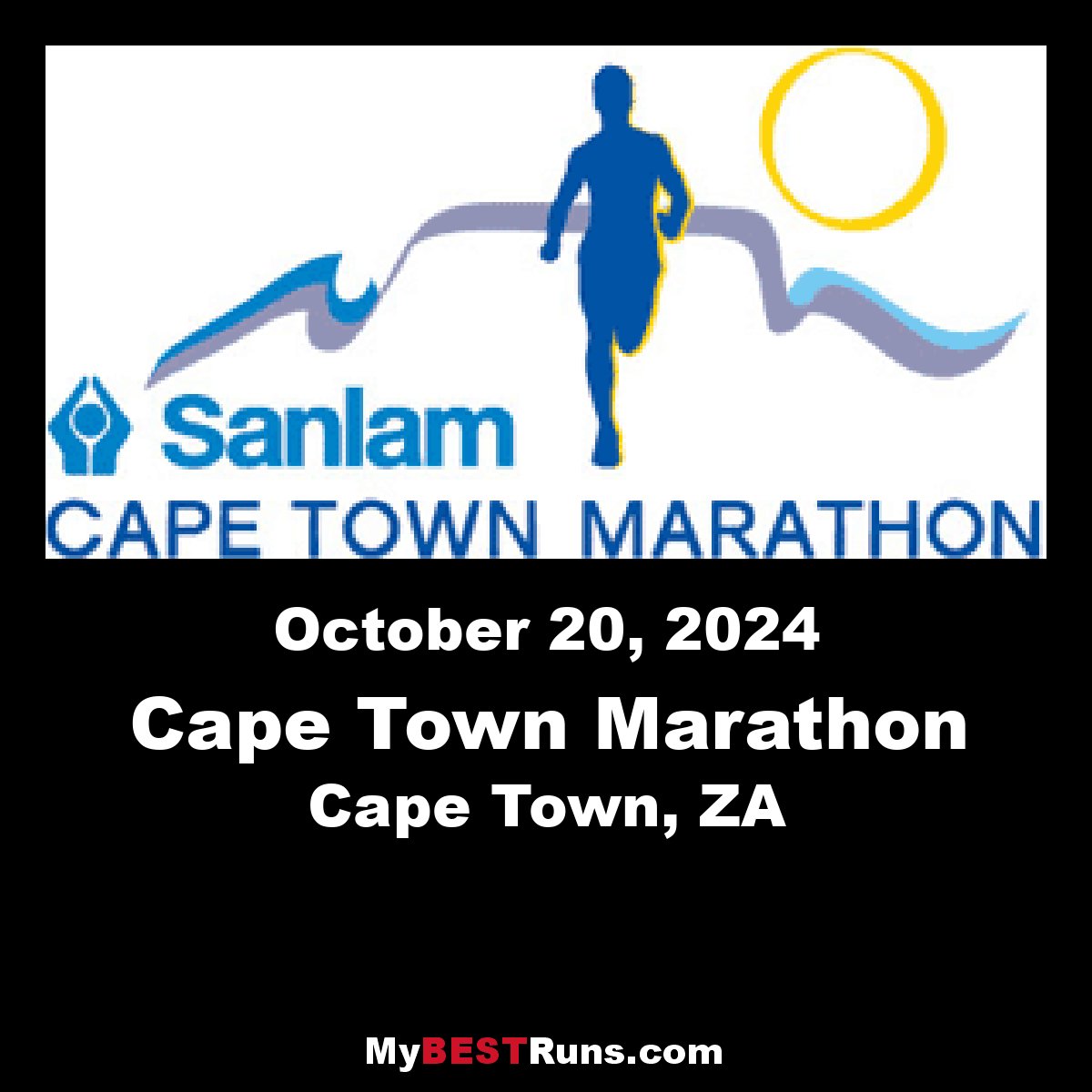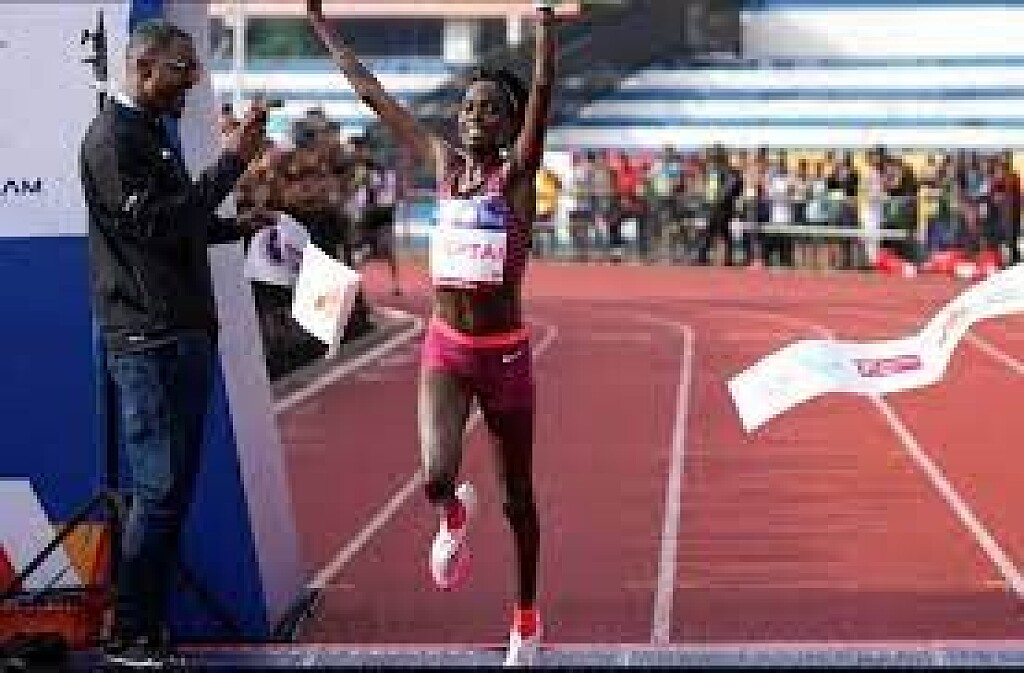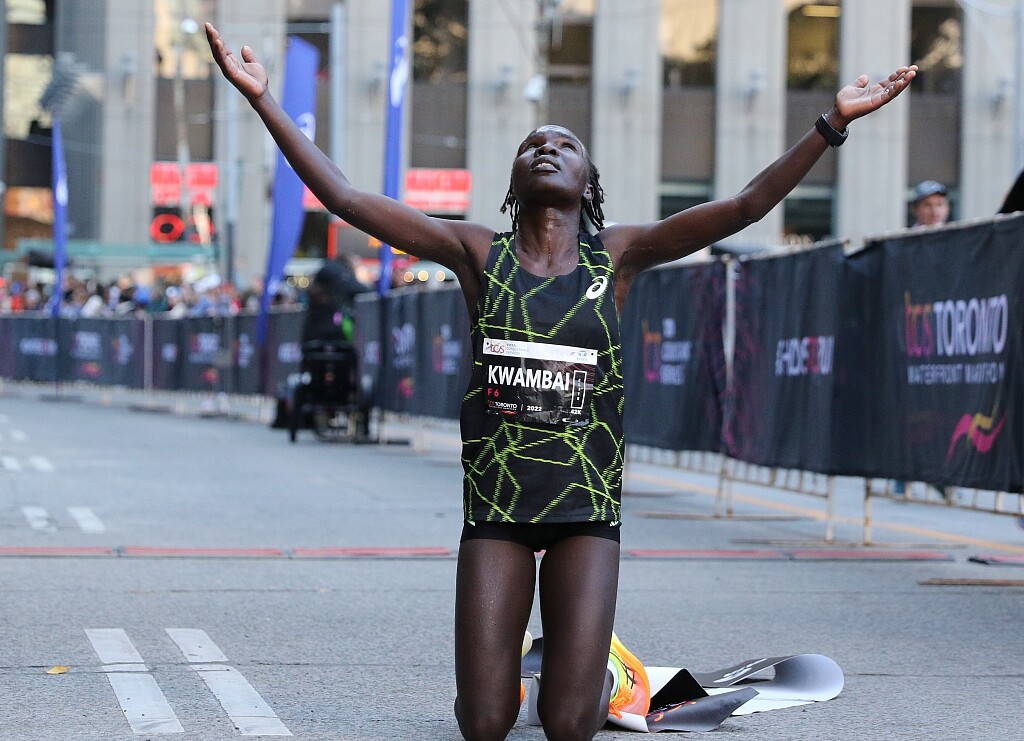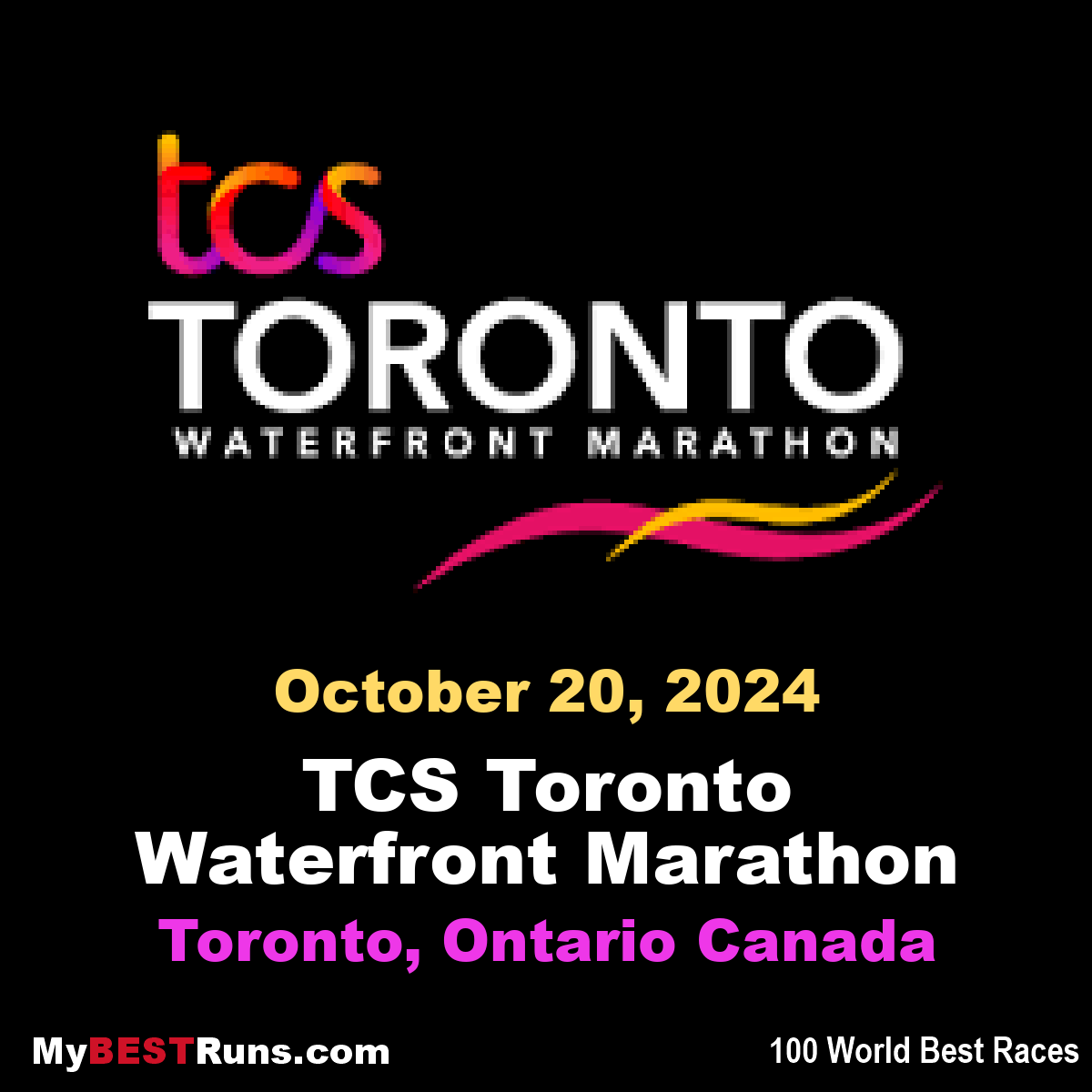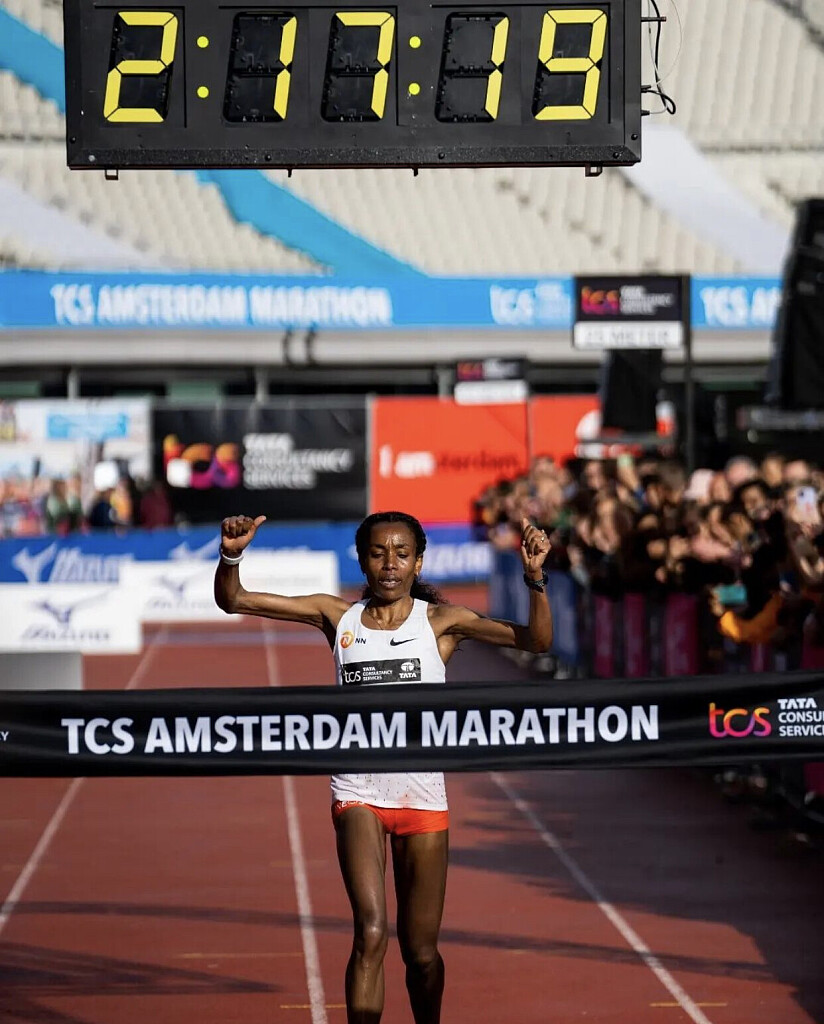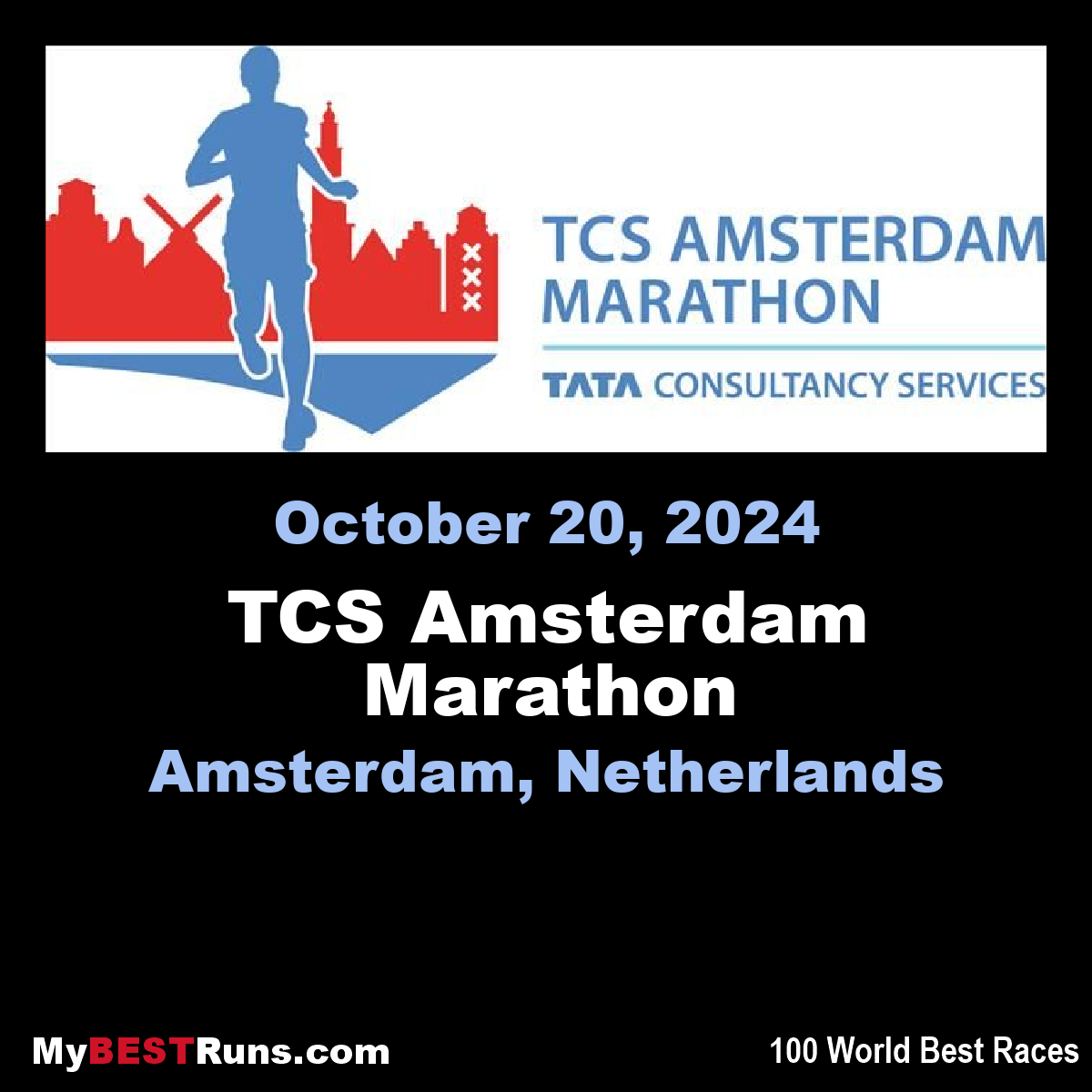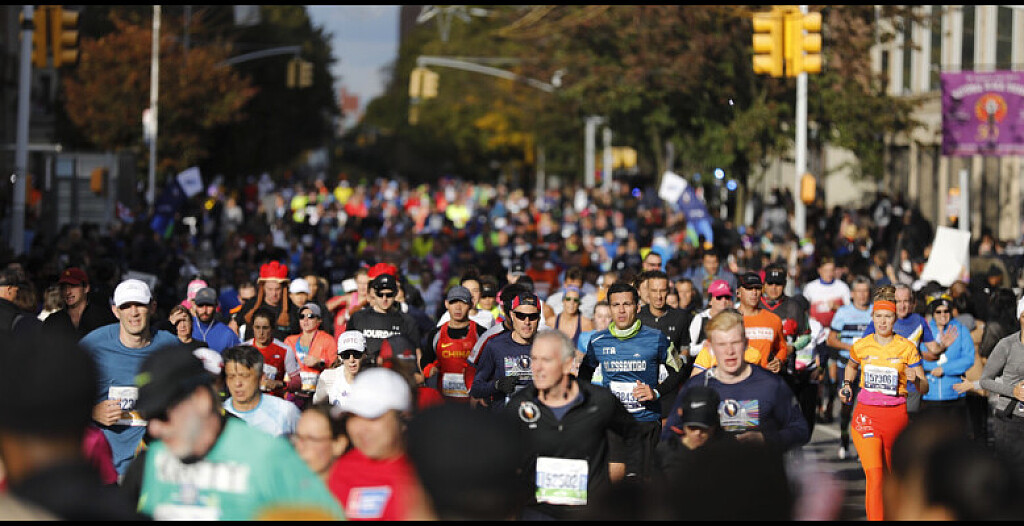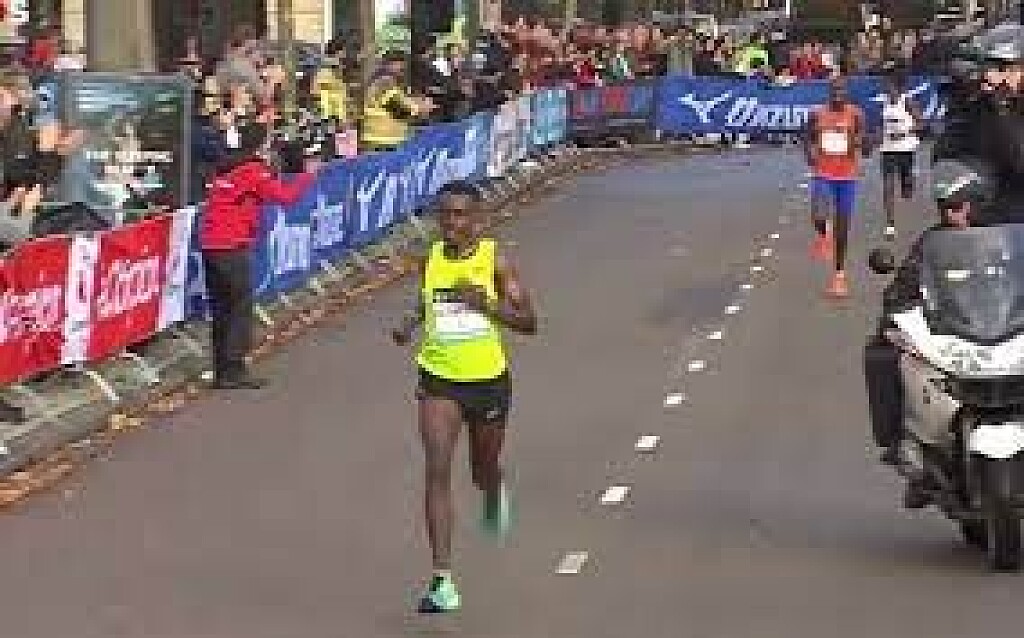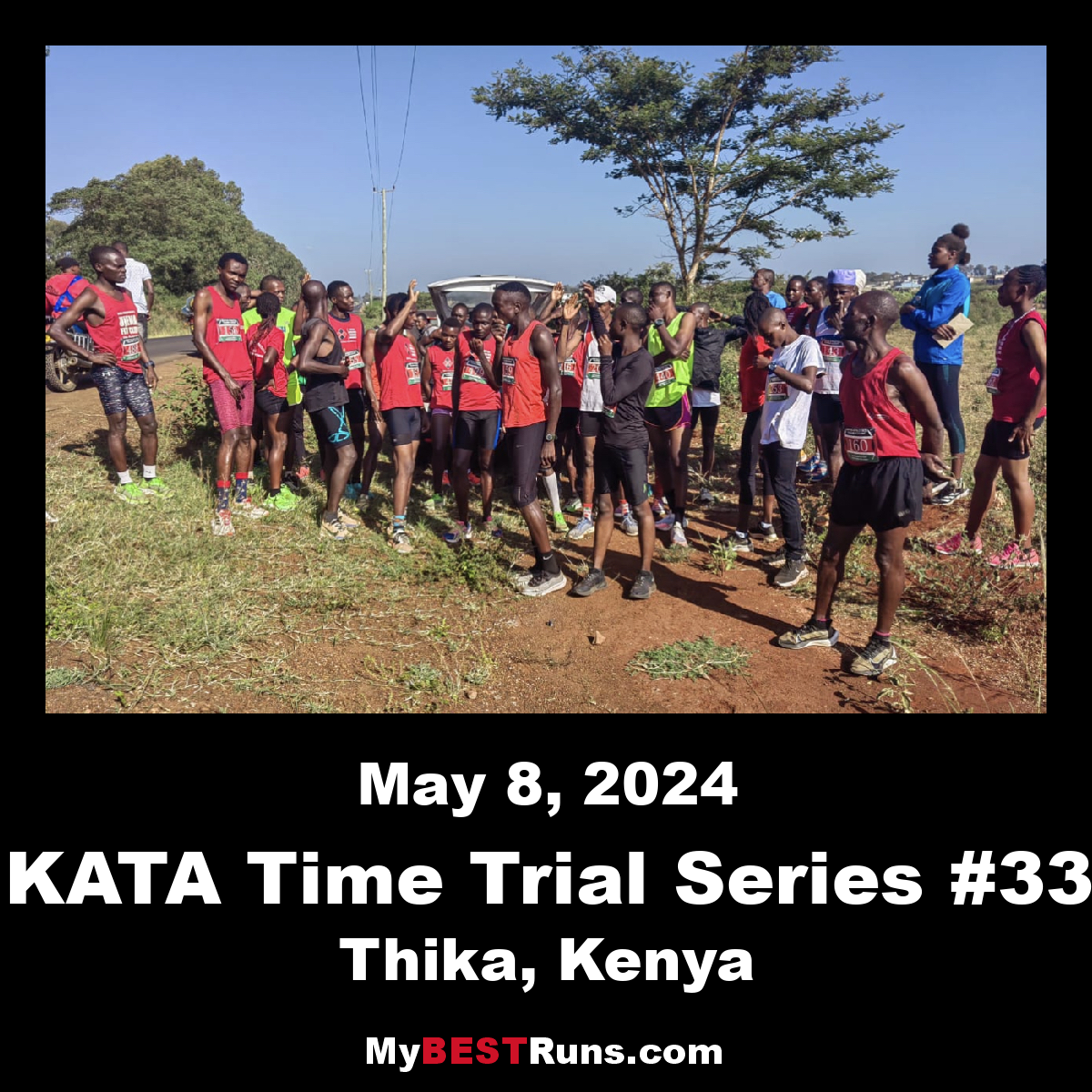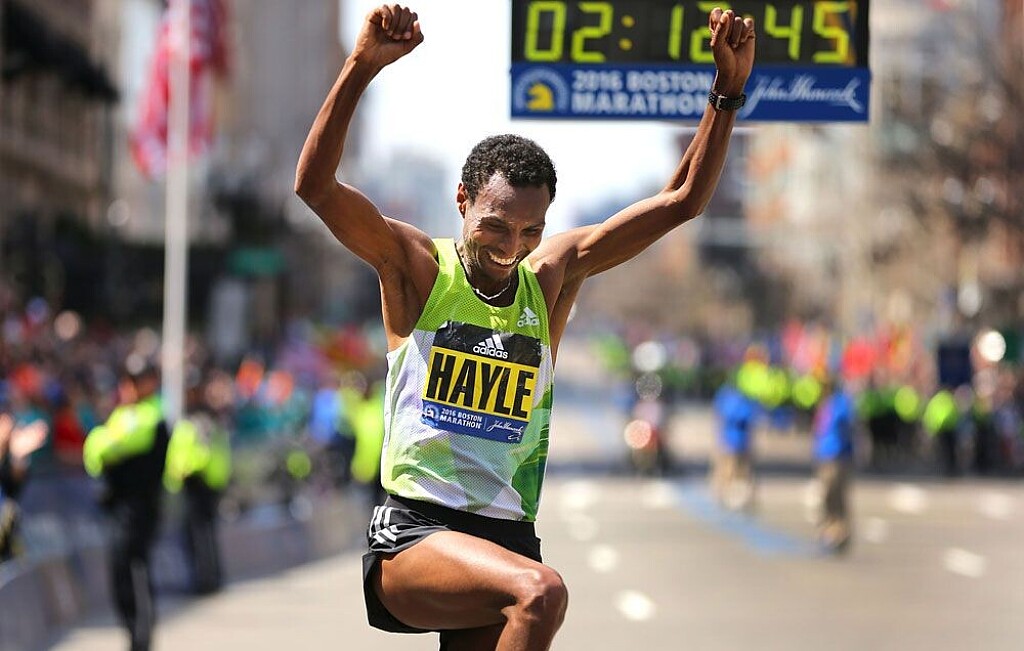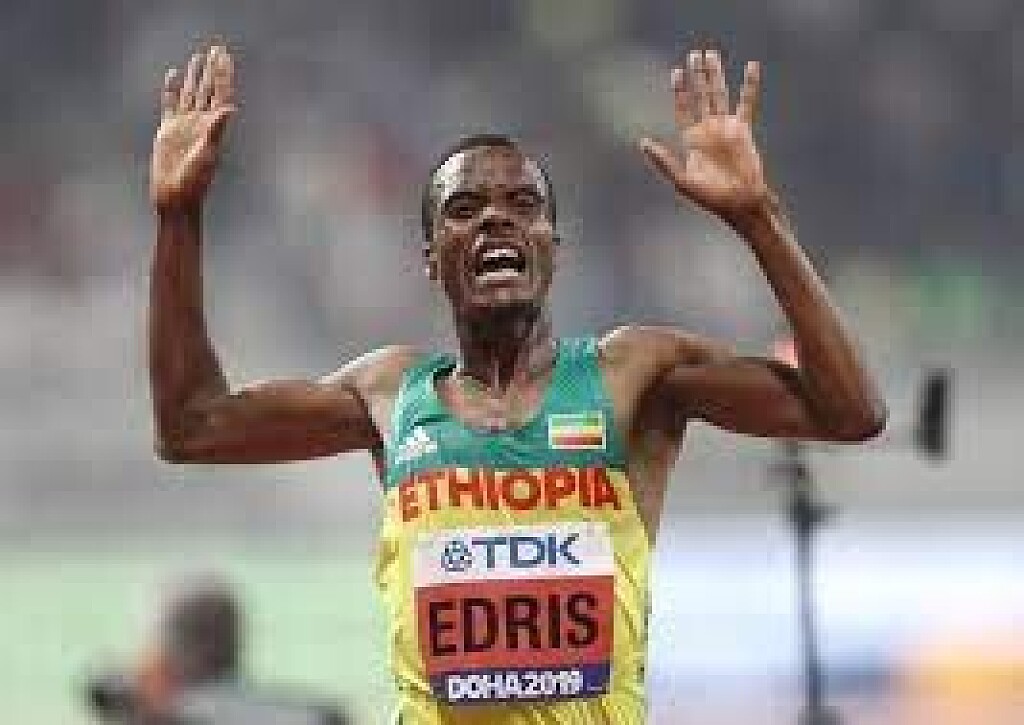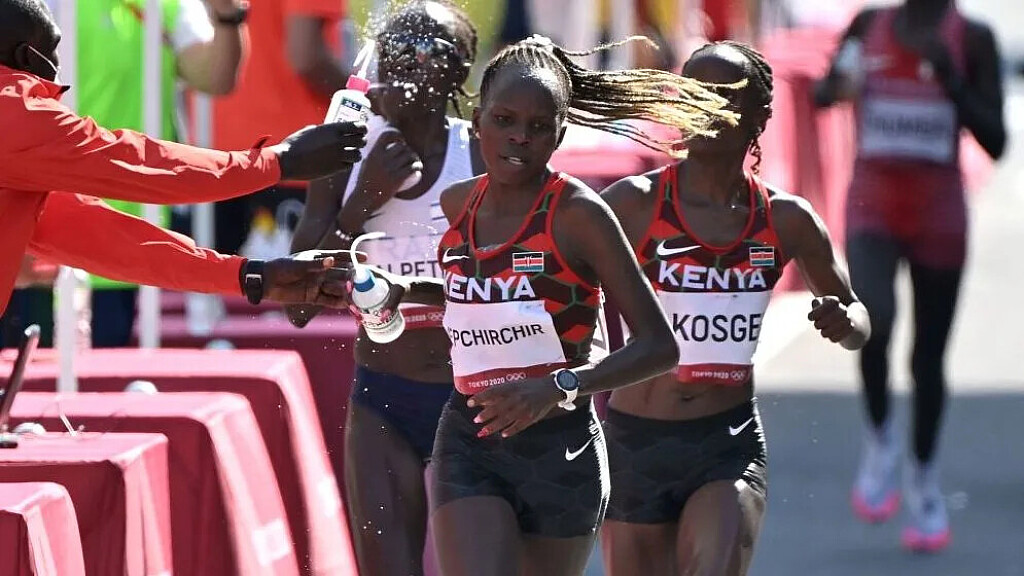Running News Daily
Running News Daily is edited by Bob Anderson. Send your news items to bob@mybestruns.com Advertising opportunities available. Train the Kenyan Way at KATA Kenya and Portugal owned and operated by Bob Anderson. Be sure to catch our movie A Long Run the movie KATA Running Camps and KATA Potato Farms - 31 now open in Kenya! https://kata.ke/
Index to Daily Posts · Sign Up For Updates · Run The World Feed
Ben Flanagan snags Canadian record at Valencia Half Marathon
Two Canadians ran to national records and personal bests at the Valencia Half Marathon on Sunday morning. Ben Flanagan, 27, continued his winning ways on the roads, setting a new Canadian record in the half-marathon in 61 minutes flat. Fellow Canadian and national record holder in the marathon, Cam Levins, 33, finished right on Flanagan’s heels in a new personal best of 61:05.
Levins’s time was the second fastest in Canadian history, and the two athletes finished in 18th and 19th places, respectively. The previous Canadian half-marathon record of 61:08 was set by Rory Linkletter in January, besting a national record that had held for 22 years. Valencia’s record-breaking run was also a 38-second personal best for Flanagan, who became the 2022 Canadian 10K champion in May and 5K champion in September.
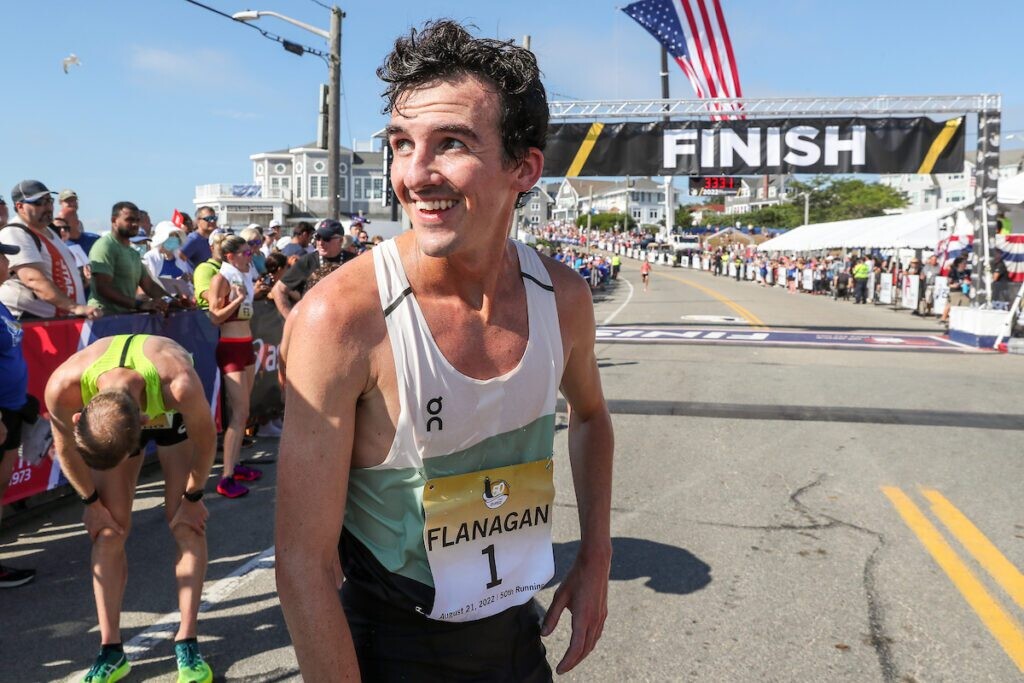
The Valencia Half Marathon is known for its fast course and deep elite fields, and heading into the race, speculation abounded about a possible new world record. The men’s race kicked off slightly slower than expected, with unseasonably high temperatures (17 C) and humidity.
Kenyan’s Kibiwott Kandie and Germany’s Konstanze Klosterhalfen captured the overall victories in the half-marathon. Kandie, who broke the world record here two years ago, broke away from the lead pack to finish in 58:10, followed by Ethiopia’s Yomif Kejelcha in 58:32 and last year’s third-place finisher, Daniel Mateiko in 58:40.
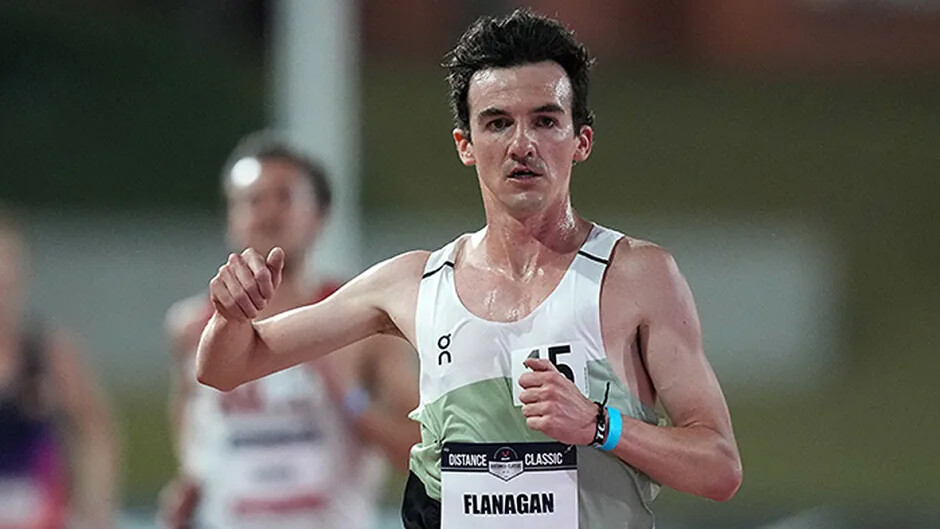
Klosterhalfen finished with a kick in the last kilometer, winning her half-marathon debut in 65:41.The European champion and 2019 world bronze medalist over 5000m told World Athletics: “I chose Valencia because of the fast times set over the previous years and my decision proved to be right today.” She was followed by Ethiopia’s Tsigie Gebreselama in 65:45 and Hawi Feysa (also from Ethiopia) in 66:00.
(10/24/2022) ⚡AMPby Running Magazine
Valencia Half Marathon
The Trinidad Alfonso Valencia Half Marathon has become one of the top running events in the world. Valencia is one of the fastest half marathon in the world. The race, organized by SD Correcaminos Athletics Club, celebrated its silver anniversary in style with record participation, record crowd numbers, Silver label IAAF accreditation and an atmosphere that you will not find...
more...Run like Kipchoge: start applying these principles to your running today
Coach and author Brad Stulberg had a ‘pinch me’ moment watching marathoning GOAT Eliud Kipchoge credit his book, The Practice of Groundedness, as inspiration going into his recent marathon world record in Berlin. Stulberg’s principles are simple and applicable to any runner. Here’s how you can incorporate them into your life and elevate your running game, maybe setting your own personal record (and optimizing the journey along the way).
Consistency is key for improvement (be patient)
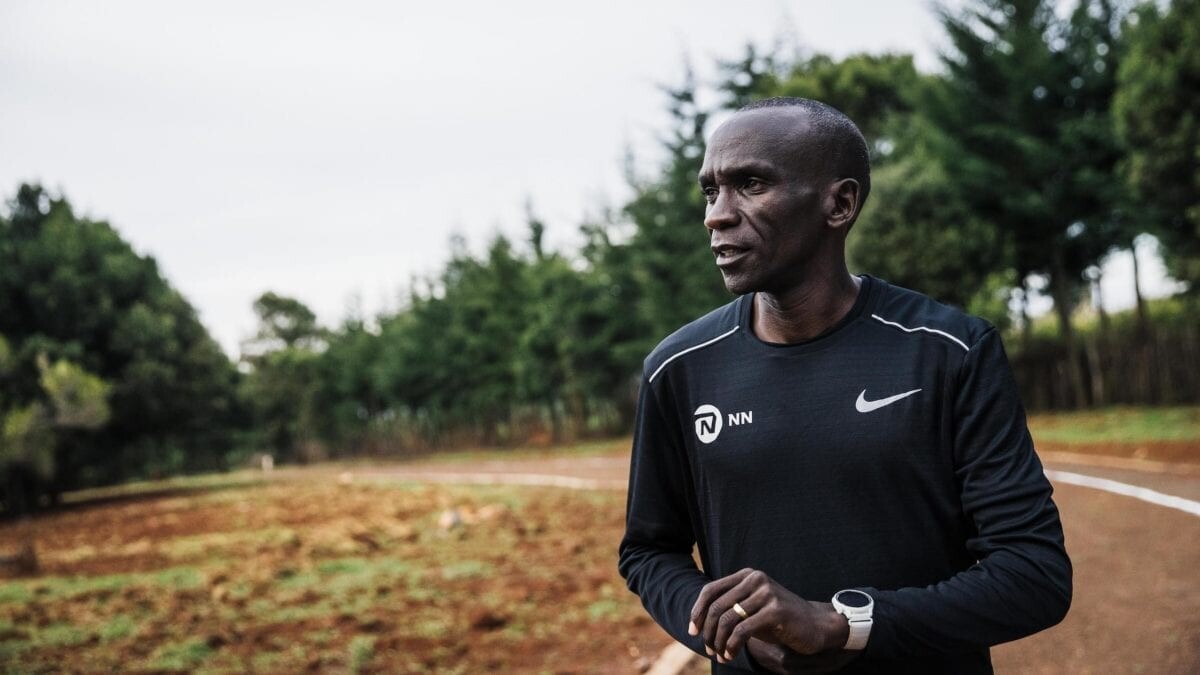
“Small and consistent victories compound over time,” says Stulberg. He uses Kipchoge as an example in his book: the runner is consistent and patient, and trains and acts with ease, rarely pushing his body beyond 80 per cent in practice. “Adopting a mindset that favours consistent small steps may take the excitement out of experiencing massive highs and lows, but it leads to more enduring progress,” Stulberg adds. Far greater than putting in occasional huge performances and risking burnout is keeping your focus on day-to-day consistent efforts and improvements.
Accept where you are to get where you want to be
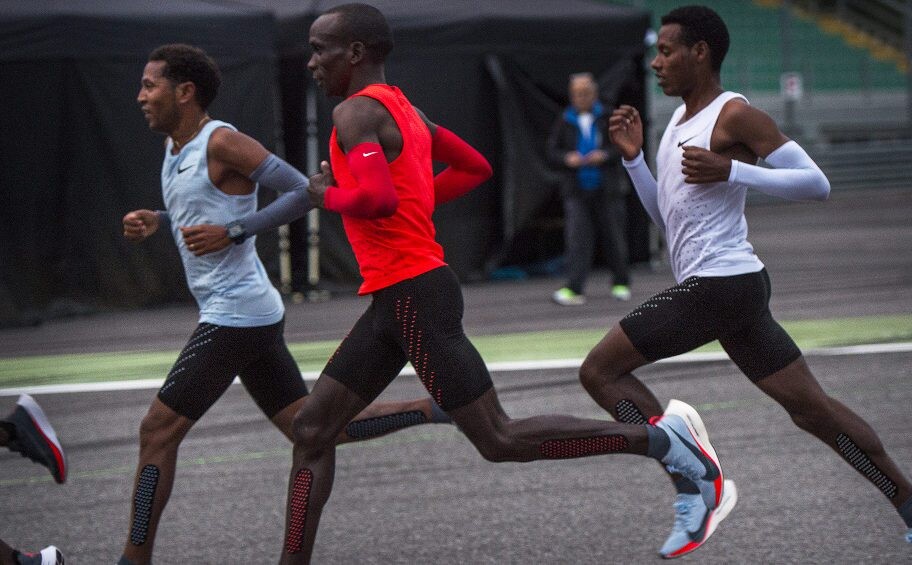
Stulberg suggests you accept where you are, have realistic expectations, and trust your training. Conventional wisdom and practice argues that if you want to be great at something you must be continuously hungry and pushing, setting up a mindset craving specific and measurable results. Progress is not linear, Stulberg argues, and the conventional mindset tells us that only when we achieve the results we are pursuing are we worthy human beings. “The stress and pressure of carrying this weight is miserable,” says Stulberg. Accepting your current abilities and circumstances will allow you to perform from a place of freedom.
Focus on the process, and the outcomes will fall into place
Instead of focusing on the singular achievement of a giant goal, break goals down into parts, and direct your focus on those parts. Stulberg says this serves as an incredibly powerful focusing mechanism. “For most consequential endeavours, long-term progress is less about heroic effort and more about smart pacing; less about intensity on any given day and more about discipline over the course of months, and in some cases even years,” he explains.
By staying consistent over time, accepting where you are at and acknowledging that achieving goals is often non-linear, and keeping your eyes on the process rather than the outcome, you’ll find yourself running with what Stulberg calls groundedness: “unwavering internal strength and self-confidence that sustains you through ups and downs.” You’ll make progress like Kipchoge does, “slowly by slowly.”
(10/24/2022) ⚡AMPby Running Magazine
Ugandan Solomon Mutai breaks Venice Marathon course record
Solomon Mutai is a happy man after beating his fellow African elite competitors to win the Venice Marathon in Italy on Sunday.
The experienced Ugandan gifted himself a day after his 30th birthday by posting a winning time of two hours, eight minutes and 10 seconds at the World Athletics Bronze Label Road Race.
“It was good and challenging,” Mutai said hours after his race. He became the ninth different nationality to conquer the course in Venice after breaking away from Kenyan Emmanuel Naibei and Ethiopian Abebe Tefese.

And the victory produced emotions out of the 2018 Commonwealth silver medallist. Upon crossing the tape, Mutai spread his arms wide and knelt down after being humbled by the feat.
“I am happy because it was not an easy race because there were too many bridges,” he said of the course difficulty.
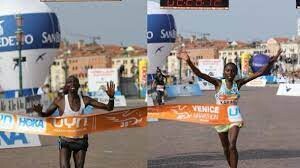
This marks Mutai’s first win since winning his debut 42km race at the 2013 Mombasa Marathon in Kenya and it came with not only a personal best (PB) but also a new course record.
Also, this is Mutai’s best performance post Covid-19 pandemic since he took third place at the Vienna Marathon in Austria with the old PB of 2:08:25.
Previously, he did not complete the Xiamen Marathon in Tuscany, Italy in early 2021 thereby missing out on selection to the Tokyo 2020 Olympics.
When he finished third at the Istanbul Marathon in Turkey last November, it came after a time of 2:10:25 after countering hilly terrain towards the finish.
And early in April, Mutai could only post 2:11:01 in sixth place at the Enschede Marathon in the Netherlands.
On Sunday, Mutai was redefined and even better focused, thereby lowering his PB and also beat the previous course record mark of 2:08:13 set by Kenyan John Komen.
Mutai, a bronze medallist at the 2015 Beijing World Championships in China, was quiet in the mix, the lead group crossing through the 21km mark at 1:03:56.
After 30km, it was down to Mutai and Naibei but when they reached the Liberty Bridge some 4km ahead, Mutai made his move.
He pulled away in style, going around the River Sette Martiri to glory with Naibei clocking 2:09:41 while Tefese coming third in 2:09:54.
Mutai now moves third on the list of male marathoners in search of the three available tickets to the Budapest World Athletics Championships set for next August in Hungary.
(10/24/2022) ⚡AMPby Allan Darren Kyeyune
Venice Marathon
The Venice Marathon is one of the most beautiful marathons known for the historical, artistic and picturesque surrounding in which it takes place. It starts in Stra, a small village located at about 25 km west of Venice, at the beginning of the Riviera del Brenta, a beautiful area near the River Brenta, where the rich and noble Venetians built...
more...Run longer and stronger with tips from trail-phenom Priscilla Forgie
Priscilla Forgie wants you to be more flexible. She doesn’t mean you should hit a yoga class, either–Forgie says adding versatility to her running routine has allowed her to master the art of listening to her body, elevating her performance.
If you aren’t familiar with Forgie after this year’s ultratrail season, consider this your update: the Edmonton-based athlete has had a record-breaking year, winning almost every race she has entered and demolishing course records at the Near Death Marathon (where she also was the overall winner) and Squamish 50/50. She’s also fairly new to the ultratrail scene and is open about the setbacks and learning curves she’s experienced so far.
“When I discovered I had a stress fracture in January I realized I hadn’t truly been listening to what my body needed,”she says. Forgie says that key to optimizing her running this year was taking preventative action to care for her body in her day-to-day life, becoming more flexible with training and mileage. Here’s what Forgie suggests you try, so that you, too, can break personal barriers and crush your goals, all while staying healthy.
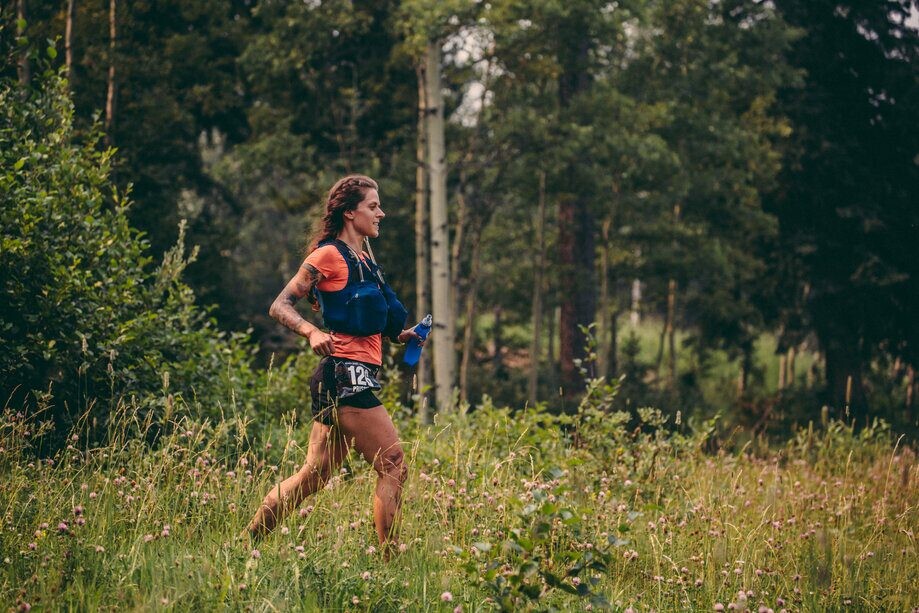
Have flexibility in your training plan
Forgie says that opening ourselves up to the possibility of not sticking to a regimented training schedule is key. “I can appreciate that a training plan can help hold us accountable and keep us motivated, but no plan can take into account the complexities of our everyday lives and what our bodies are asking for each day,” she says. While Forgie doesn’t follow a strict plan, she acknowledges that it works for some people, and suggests that runners try to remain adaptable.

Forgie suggests making the change from a km/day goal, and instead giving yourself a distance or time range to shoot for each day, adjusting throughout the week as needed. “This allows us the opportunity to rest when needed and free up time if life gets in the way,” she says.
Get comfortable with switching things up
Forgie says this is particularly important for your key workouts. “You want your body to be feeling its best during these sessions, so pushing through speedwork after a lousy sleep will not help you reach your goals,” she explains. If you have a challenging workout planned but are feeling under the weather, far better to head out for an easy run or take a recovery day, and do the speedwork when you’re well-rested.
Another form of switching it up that Forgie loves: hit the trails instead of running hill repeats or road-based speedwork. While trails are where Forgie’s passion lies, they’re a great addition to any runner’s repertoire. “Who doesn’t need more trail time?” she says.
Tap into your inner couch potato
“A huge part of listening to our bodies is recognizing when we need rest,” says Forgie, adding that it’s likely more often than a lot of us allow. She suggests following the 80/20 rule (keeping 80 per cent of your workouts easy, 20 per cent hard). “Letting our bodies recover with good food, sleep, and slow miles will result in our bodies thanking us later,” she says.
With so many athletes reporting stress fractures or being diagnosed with RED-S syndrome, recovery is something every runner should personally focus on.
Try running doubles (but not Ingebrigtsen-style)
Forgie advocates breaking up a long-run session into a double. “Double run days are my favourite,” she says. “Doing this gives your body a bit of a break, frees up some time in your schedule, and definitely helps when you’re really ramping up those kilometres in peak weeks.” Doubling has made headlines recently due to its popularity among elite athletes like Jakob Ingebrigtsen, who will run two hard training sessions in a single day. Forgie’s format is a gentler version, a way to adapt a long workout, or to increase mileage when training for a big race.
Being open to trying new things in your running schedule is a fantastic idea for all of us, and Forgie’s success on the trails demonstrates how well it has been working for her.
(10/24/2022) ⚡AMPby Keeley Milne
Hot and humid slowed Kandie and Klosterhalfen in Valencia
Kenyan's world half marathon silver medallist Kibiwott Kandie and Germany's Konstanze Klosterhalfen captured the victories at the Valencia Half Marathon Trinidad Alfonso EDP – a World Athletics Elite Label road race – on Sunday (23).
Kandie, who broke the world record here two years ago, effectively ended the race in the 14th kilometre to finish like a train in 58:10, while half marathon debutante Klosterhalfen made her move in the last kilometre, winning in 1:05:41.
Likely due to the unseasonably high temperature (17C) and 75% humidity, the men’s race kicked off slower than expected. Led by pacemakers, the leading group went through the opening 5km in 13:56, right on schedule for a 58:40 finishing time with all the main favourites such as Kandie, Sabastian Sawe, last year's third-placed Daniel Mateiko, Rodgers Kwemoi, Ethiopia's two-time world indoor 3000m champion Yomif Kejelcha and his compatriot Tadese Worku, who was making his debut over the distance.
Ten men remained in the lead group by the 10km checkpoint, which was reached in 27:51 to virtually rule out a sub-58-minute final clocking.
The key movement came shortly after the 13th kilometre when Kandie broke away with incredible ease to gradually open a sizeable gap over Mateiko, Kejelcha and Worku. After a swift 14th kilometre of 2:39, the 26-year-old Kenyan maintained his speed to reach 15km in 41:17, having covered the previous 5km segment in 13:26. By then he had built a ten-second margin over the chasing trio.
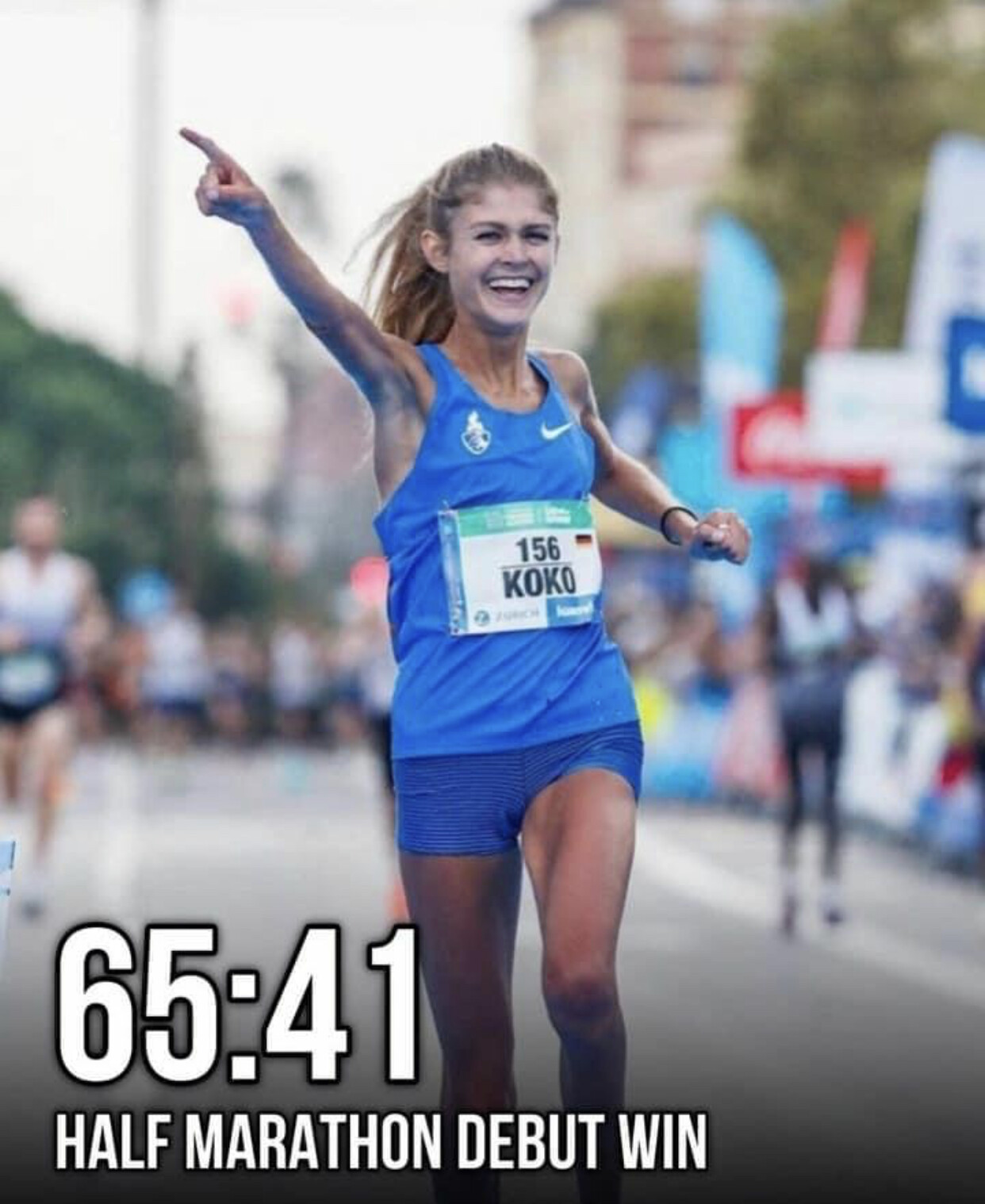
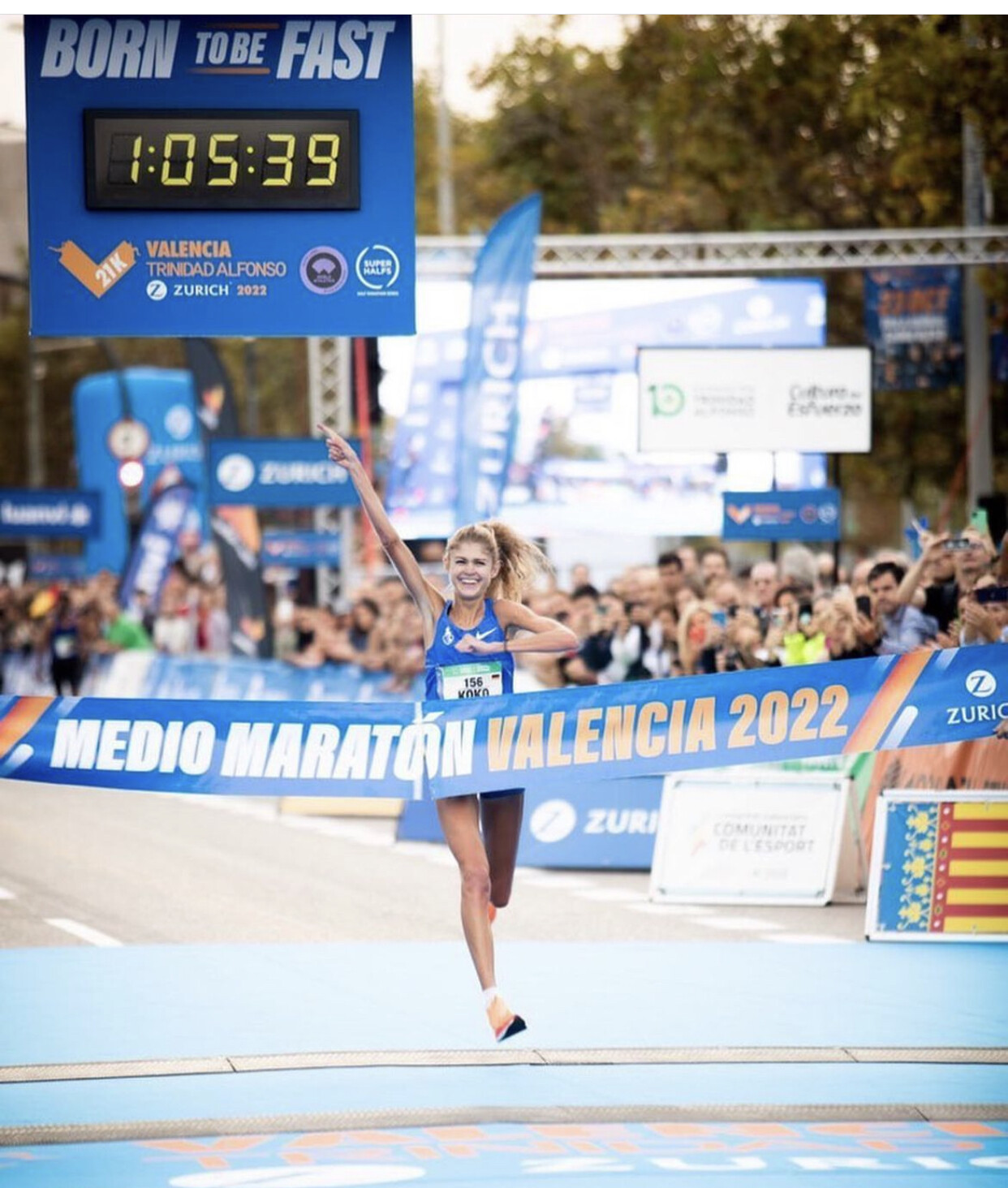
Despite a decrease in pace in the closing stages, Kandie continued to increase his lead and he had a 23-second margin by 20km. He romped home unopposed in a season’s best of 58:10, the third fastest time in the world this year. Taking advantage of his track pedigree and speed, Kejelcha managed to finish ahead of Mateiko to grab the runner-up spot in 58:32 and fulfil his pre-race target of breaking the Ethiopian record. Mateiko completed the podium eight seconds behind Kejelcha while debutant Worku finished in 58:47.
“I have been preparing so hard for this race over the last two months and that effort has paid off today,” said Kandie. “Despite the humidity, I felt great throughout and decided to increase the pace after midway, I'm quite satisfied with my performance.”
The women’s race was of a similar high standard with the first three athletes finishing in 66 minutes or quicker.
Perfectly paced by Kenya's Jeremiah Cheserek, the main group went through the opening 5km and 10km checkpoints in 15:29 and 31:08 respectively, slightly inside 1:05 finishing pace. The eight-woman lead pack included Klosterhalfen, Kenya's world 10,000m bronze medallist Margaret Chelimo Kipkemboi, Vicoty Chepngeno, Agnes Ngolo and Ethiopia’s Hawi Feysa and Tsigie Gebreselama.
There were no major changes over the following 5km section, which was covered in 15:35, but with two kilometres remaining, only Klosterhalfen, Feysa and Gebreselama were left at the front. In the closing stages, the 25-year-old German managed to open up a gap on her rivals to win in 1:05:41 while Gebreselama set a PB four seconds in arrears and Feysa came third in 1:06:00.
“I'm both surprised and delighted with what I've managed today and definitely I'll try to improve on my time next time and hopefully break the German record,” said Klosterhalfen, the European champion and 2019 world bronze medallist over 5000m. “I chose Valencia because of the fast times set over the previous years and my decision proved to be right today.”
Leading results
Women1 Konstanze Klosterhalfen (GER) 1:05:412 Tsigie Gebreselama (ETH) 1:05:453 Hawi Feysa (ETH) 1:06:004 Agnes Ngolo (KEN) 1:06:385 Margaret Chelimo (KEN) 1:06:506 Magdalena Sahuri (KEN) 1:07:077 Irine Kimais (KEN) 1:07:108 Purity Komen (KEN) 1:07:279 Yasemin Can (TUR) 1:07:4510 Vicoty Chepngeno (KEN) 1:07:54
Men1 Kibiwott Kandie (KEN) 58:102 Yomif Kejelcha (ETH) 58:323 Daniel Mateiko (KEN) 58:404 Tadese Worku (ETH) 58:475 Kennedy Kimutai (KEN) 59:046 Sabastian Sawe (KEN) 59:237 Ronald Kirui (KEN) 1:00:108 Isaac Kipkemboi (KEN) 1:00:119 Edward Cheserek (KEN) 1:00:1310 Weldon Langat (KEN) 1:00:28
(10/23/2022) ⚡AMPby Emeterio Valiente (World Athletics)
Valencia Half Marathon
The Trinidad Alfonso Valencia Half Marathon has become one of the top running events in the world. Valencia is one of the fastest half marathon in the world. The race, organized by SD Correcaminos Athletics Club, celebrated its silver anniversary in style with record participation, record crowd numbers, Silver label IAAF accreditation and an atmosphere that you will not find...
more...Kibiwott Kandie wins the Valencia Half Marathon in 58:11
Kenya’s Kibiwott Kandie is the new Valencia Half Marathon champion.
Kandie on Sunday reclaimed the title he lost last year after crossing the finish line in 58:11 ahead of Ethiopia’s Yomif Kejelcha.
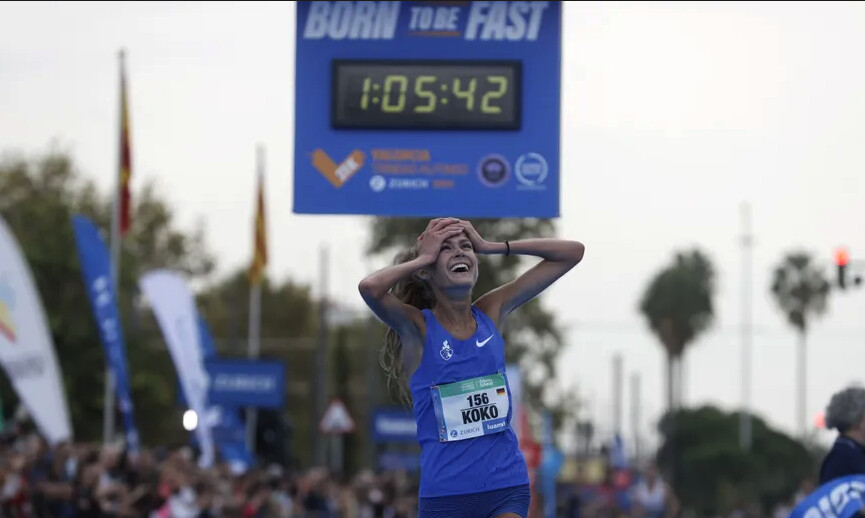
Kibiwott missed his earlier personal best of 57:32 which was a world record time he set in 2020 before Uganda’s Jacob Kiplimo lowered it by one second at the 2021 Lisbon Half Marathon.
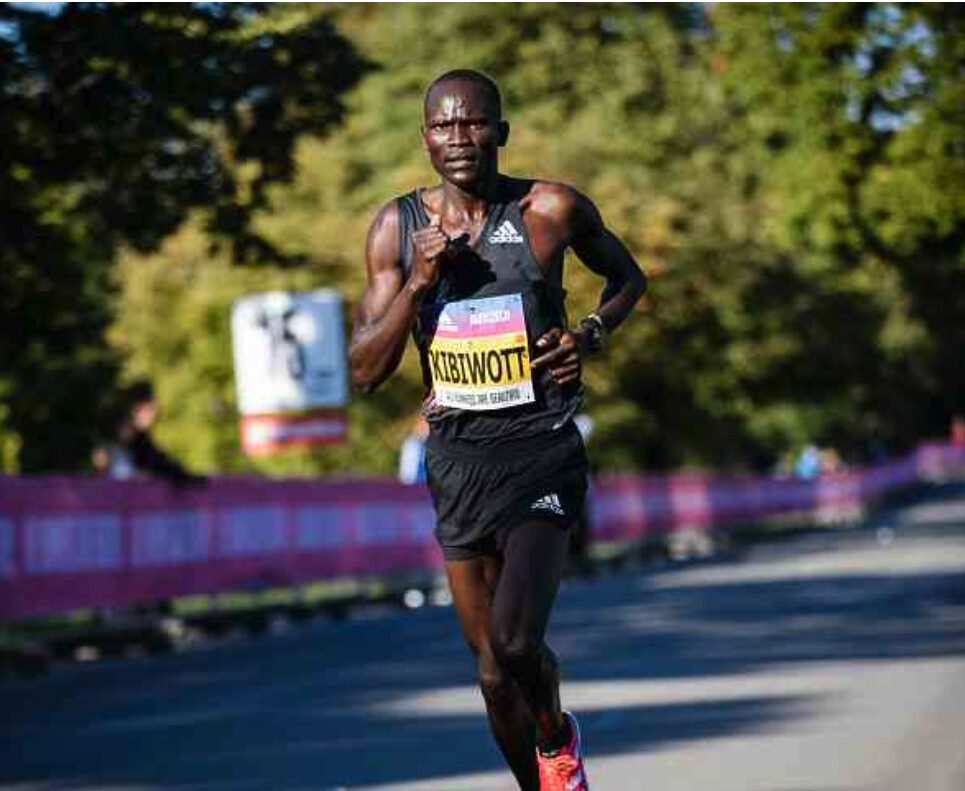
Kejelcha clocked 58:32, while another Kenyan Daniel Mateiko was third in 58:40.
Kennedy Kimutai (59:04), Sebastian Kimaru (59:23), Ronald Kiprotich (1:00:10) Isaac Kipkemboi (1:00:12), Edward Kimutai (1:00:14), and Weldon Kirui (1:00:28) were in fifth, sixth, seventh, eighth, ninth and 10 positions respectively.
The women’s race was won by European 5000m champion, German Konstanze Klosterhalfen who clocked 65:41 on her debut.
Kenyans missed the podium positions with Kapsabet-based Margaret Chelimo finishing fourth in 1:06:50.
Irene Kimais (1:07:12), Purity Komen (1:07:29), Vicoty Chepngeno (1:07:55) and Dorcas Kimeli (1:08:17) were sixth, seventh, ninth and 10th.
Ethiopians Tsigie Gebreselama (1:05:46) and Hawi Feysa Gejia (1:06:00) placed second and third respectively.
(10/23/2022) ⚡AMPValencia Half Marathon
The Trinidad Alfonso Valencia Half Marathon has become one of the top running events in the world. Valencia is one of the fastest half marathon in the world. The race, organized by SD Correcaminos Athletics Club, celebrated its silver anniversary in style with record participation, record crowd numbers, Silver label IAAF accreditation and an atmosphere that you will not find...
more...'Gray Zone' Running Could Be the Reason You're Not Getting Faster—Here's How to Get Back Into the Green
Easy pace is a runner's bread and butter. As a general rule of thumb, coaches recommend logging 80 percent of your runs at a conversational pace and 20 percent at higher speeds that send your heart racing. But, as any pavement-pounder knows, telling yourself to run easy pace and actuallyrunning an easy pace are two very different things.
Generally speaking, easy workouts should be run at a pace that allows you to talk throughout the entire run. (If you're someone who likes scales, think of this at a three out of 10 effort.) However, it's likely that you're actually taking on these training runs at something closer to a six or a seven effort. This common mistake is called running "in the gray zone" and it can lead to a frustrating plateau.
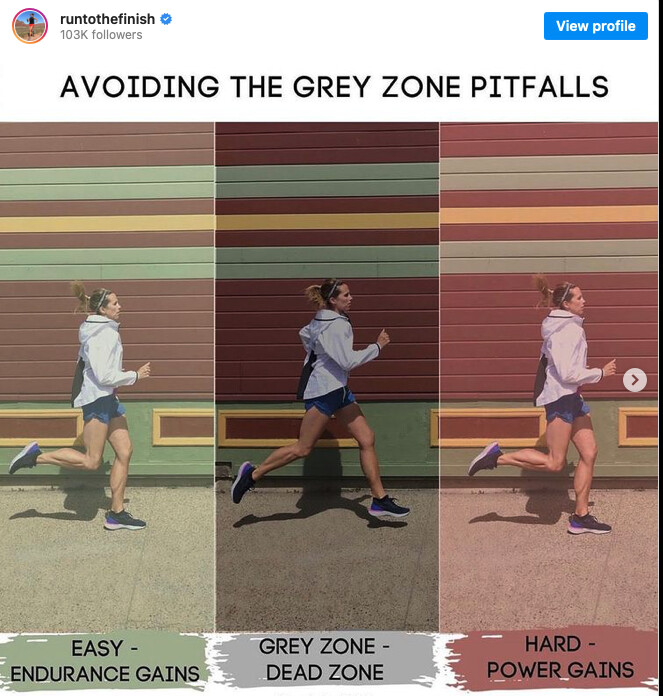
"Grey zone running is when you’re using pace as your guide, rather than effort. It usually means you’re running slightly too hard on your easy days then not able to go hard enough on speed days," wrote running coach Amanda Brooks in a recent Instagram post.
This probably sounds familiar, right? Maybe you go a little too hard on a recovery run and the next day's speed workout feels awful."If you're running your recovery runs or easy runs too hard, what tends to happen is that you start creating this low-level fatigue that you might not realize it's there, but is compromising some of your faster workouts," says Eric Orton, co-author of Born to Run: The Ultimate Training Guide.
The good news: It doesn't have to feel this way. In fact, the vast majority (remember: 80 percent) of your running should feel almost as easy as strolling around your neighborhood.
Now, you may be thinking: If I'm running easy for four out of every five runs, how will I possibly get faster? It's a good question, and according to Brooks, the answer is because of that killer combination of easy, peasy training and speed runs.
"Hard miles are building power, activating fast-twitch muscles, and refining race pace," she explained on her Instagram post. Meanwhile, those stress-free runs up your aerobic fitness. This means that, over time, your easy pace will naturally become a little faster for you. For example, if you're running a 10-minute mile in the recovery runs at the beginning of training for a half marathon, there's a good chance that, if you let your body recover enough on easy days, training speed and stamina could bring you down to a 9:45 or 9:30-mile pace over time. Cool, right?
Now, if you're deeper into your training plan and feeling ready to step your speed up, Orton recommends trying a hybrid version of these two workouts where you combine effortless running with effortful intervals. "So instead of taking your long, easy run, you maybe try four by 10 minute [hard intervals], followed by 90 minutes of easy running and ending with a fartlek," he says. For the uninitiated, a fartlek is any speed play where you're toggling through different paces. Here's an example version of Orton's workout that you can follow once you're feeling really confident in your speed runs and easy runs:
Warmup
4 x 10-minute intervals at 10K pace (6 out of 10 effort) with one minute of rest in between each interval
45 minutes of easy running (3 out of 10 effort)
Fartlek: 3 x 30 second intervals at 1-mile pace (9 out of 10 effort) with one minute of rest in between intervals
Cooldown
The number one rule here: Stayoutof the gray zone. Instead, think about the purpose of your run before you run it. If today is an easy run designed to build endurance and help you recover from yesterday's speed work, don't make it harder than it needs to be. We're not reinventing the running shoe here, after all.
(10/23/2022) ⚡AMPDutchman Lodewijk Adriaan Vriens wins first race in Hong Kong 50 ultra marathon series
Hong Kong 50 ultra marathon got off to a blistering start with Dutchman pipping local favourites in the men’s division, while Cheung dominated the women’s field
The second leg of the four race series takes place on Lantau on December 10, with HK50 West and Sai Kung 50 taking place in early 2023


The Hong Kong 50 ultra marathon series got off to a solid start on Sunday, with Dutchman Lodewijk Adriaan Vriens storming a field of almost 500 runners to claim line honours.
While Vriens battled strong competition from Chan Ka Keung and Wong Kwok Wai – who came in second and third respectively – the Dutchman paced himself early in the race but surged in the second half to extend his lead and finish with a time of 4 hours and 47 minutes.
“Today’s race was really, really cool and a really phenomenal feeling,” Vriens said. “It’s a really tough course, but I had a lot of fun. The organisers did great, really good spirit out there and some really good competition.”
Chan, one of Hong Kong’s top up and coming runners, had a very strong finish, putting the hammer down on the final 1km to squeeze by Wong for second place with just a few hundred meters remaining.
“I was happy with a strong finish catching Wong Kwok Wai who tried very hard also at the end. The race was really exciting and the scenery on the last 20km was beautiful which made the change of scenery from my home training area in Tsuen Wan very different,” Chan said.
“Coming down Jardine’s Lookout I took a fall kicking a step, but brushed it off and kept pushing as was top three at the time.”
Crossing the finish line in 3rd overall in the Men’s 50km was Wong Kwok Wai who ran a fantastic race leading and trading places for almost half. He came within striking distance of the Dutchman and Chan, but did not have the legs in the last few hundred meters to mount a full tilt attack.
Karen Cheung Man-yee dominated the women’s field to win in a comfortable 5 hours 30 minutes 38, almost 30 minutes ahead of her nearest rival Wong Mei Ying, who took second place.
“Overall, the race was great,” Cheung said. “I thought my run was very smooth. The weather was good and I was happy with my performance. I am very happy to be able to run in a physical race like this as I enjoyed it so much being around others in competition.
Third on the women’s 50km podium was South African Deena Schwan who took up ultra running just over a year ago.
The second leg of the four race HK50 series will take place on Lantau on December 10, with HK50 West and Sai Kung 50 taking place in early 2023.
(10/23/2022) ⚡AMP5 Reasons Why Athletes Can Embrace Aging
My grandfather lived until he was 94. By the time he died in 2009, he was the sole survivor of 13 siblings. His secret? For as long as I can remember he used to say, with a gusto I have yet to match, "You just have to keep moving!" And with every passing birthday he'd also remind me: "Getting older is better than the alternative."
Those two pearls of wisdom have continued to serve me well. But it has also occurred to me that since I became a masters runner (defined as 40 and older), I've focused primarily on the negative aspects of aging-albeit, mostly factors that my grandfather never had to experience. Women face a lot of challenges in mid-life that make it hard to maintain a cheery disposition, even as that simple advice to "keep moving!" holds true.

The decline of estrogen levels has an effect on just about everything, including mood, sleep, body composition, bone density, muscle mass, and more. It's a lot to navigate-especially for those of us who've been athletes for most of our lives. We have to adjust expectations and relearn how to properly train our bodies that have new needs and capabilities.
It's natural to fixate on what we're potentially losing as the years go by. But what if we explored the ways that aging serves us, instead? I'm not trying to pollyanna our way out of perimenopause, but taking a little time to reflect on the happier sides of getting older might entice some of us to relish this phase instead of fear it.
So I called Selene Yeager, host of the podcast Hit Play Not Pause and content manager for Feisty Menopause, a site that covers training, nutrition, and lifestyle advice to help women maximize performance during menopause and beyond. She shared some expertise and insight on how athletes can find hope and enjoyment during the second half of their active lives. Out of that conversation and many others over the years with runners who have experienced longevity in the sport, I came up with five reasons to embrace masters running.Perspective.
It is impossible to acknowledge or appreciate the bigger picture when you're younger. Every botched workout, every missed PR, every off-pace long run seems like a big deal. But then life expands in wild ways. Whether it's a spouse or children or career or aging parents, everybody seemingly needs something from you for quite a while.
The upside? Those important people who need you can also put performance into perspective. Before running the Berlin Marathon in September, Keira D'Amato, 37, who was trying to improve her American record during the race (2:19:12, which has since been broken by Emily Sisson at the Chicago Marathon in 2:18:29), remarked that while her goals are a priority, her results actually don't matter much in the grand scheme.
"At the end of the day, no matter what happens, I'm still going to come home to two kids who will ask me what's for dinner," D'Amato said during a pre-race interview.
Similarly, Yeager remembers when her daughter was younger, she felt a pivot in her outlook, too. "You're not sitting there ruminating about yourself anymore-it's a similar sort of transition phase in a woman's life that can bring that better head space."
The even better news is that eventually a lot of those people become less dependent as we enter midlife, leaving new-found time to focus more on your own endeavors.
"The shedding of those ovarian hormones that have you nurturing everybody but yourself gives you the brain space to look at what you need and want," Yeager says. "And that is a great thing. Not that nurturing is bad, but it's time for you."Liberation.
The older we get, the less we care. In a good way. In the best ways, really. As Yeager puts it, "You can say it however you want, but you get to this point where you don't actually give a f*ck and it's very liberating and empowering."
You don't care what people think when you try something new, like mountain racing. You don't care what your time is and realize that nobody else does either (spoiler alert: nobody ever did care what your personal bests or weekly mileage were). You start to realize that the performances and goals can be broader and more creative than ever before-your effort can go toward something besides qualifying for the Boston Marathon, for example.
Look no further than somebody like Deena Kastor, who won the Olympic marathon bronze medal in 2004. Now 49, she still trains at a high level, but has continually redefined what success means to her, whether it's going after age-group records or racing all the World Marathon Major events, a goal she just completed when she finished the Berlin Marathon a few weeks ago, in 2:45:12.
"There's lots of empowerment that comes with midlife, especially around 50," Yeager says. "It takes some time and it might take hormonal changes-I don't know; they're still doing their research-to really accept and embrace that you are the only one thinking about you as much as you're thinking about you."Community.
Not long ago I spoke with Kathryn Martin, who at 70 years old had just taken a five-year break from competing on the masters track scene. She has two dozen age-group American records and a dozen world records, but was feeling a little burned out from the high-intensity pursuits. During that break, she didn't stop running, but she did cease serious training. What brought her back? Aside from a renewed desire to tackle more records, she missed all the friends she made on the circuit.
"What I really missed was the camaraderie. Masters runners are so unique," Martin told me. "You can be warriors on the track, but prior to and immediately afterward, everybody's hugging. We're just so happy to see each other and be in each other's company."
While you don't have to grow older to appreciate the running community, Martin is right. The masters category hits a little different. Yeager sees it, too-and hears about it from plenty of women she interviews.
"Even if you're really competitive still, there's a genuine appreciation for your peers," Yeager says. "We've seen a lot of shit in our lives at this point and that creates a lot of camaraderie. You're also just more secure in your skin and not having all your self-worth wrapped up in beating another person."Technology and research.
Sara Hall, 39, is the poster woman for longevity. She started having the best races of her career in her mid-30s, now one of the fastest U.S. women at the marathon (2:20:32). Many factors have worked in Hall's favor, but one thing she's continually given credit to is the advancement in shoe technology-not just the way in which they've elevated everybody's performances, but also how they've reduced the pounding on her legs and allowed quicker recovery between big efforts.
The generation entering its 50s now is the first to grow up in a post-Title IX world, with increased access to sports for their entire lives. As Yeager says, we aren't in the "Golden Girls" era anymore. Women remain competitive and active for far longer than they ever have not only thanks to that critical piece of policy, but also because of the technology (think: gear, nutrition, recovery tools, etc.) that keeps us healthier, longer. The research on all phases of the female athlete lifecycle still has plenty of catching up to do, but as it advances and we know better how to care for our maturing bodies, the possibilities will only increase.
"Everything we thought we knew about women after they had babies or when they go through the menopause transition-really about women at any stage-is being rewritten and discovered," Yeager says. "It's a huge thing, when performance and fitness is exponentially different because we've started and built it all from the time we were adolescents, many not stopping during pregnancy, either. Are you kidding? We're just different human beings than the women back in the Golden Girl time."Reinvention.
Ever want to try different distances? Different terrain? Are you triathlon curious? Have you heeded the often repeated advice to start lifting weights (seriously, you need to lift weights)? After all is said and done, if you're still not convinced that growing older as a runner can become an equally enjoyable experience, then reinvent yourself. Try something new and see the comparisons to your former self disappear.
Yeager, for example, didn't start CrossFit until she was 48 years old, when "it was time to start 'lifting heavy sh*t' as they say.'" Desiree Linden, 39, winner of the 2018 Boston Marathon, has said she's looking forward to exploring trails and ultra-distance races after she retires from competitive road racing.
"If you are open to expanding your horizons, it makes all the difference in the world," Yeager says. "You have nowhere to go but up. You're learning new things and experiencing something for the joy of it again. That's enormously positive."
It looks like my grandfather had a point. All you have to do is keep moving
(10/23/2022) ⚡AMPby Trail Runner Magazine
Four Helpful Tips for Anyone Who's Just Starting to Run
As a long-distance runner for almost 15 years, the most common comments I get from nonrunner friends are “I wish I could do that” or “I can’t even run a mile.” But the truth is, that’s actually normal when you’re starting to run. In fact, most seasoned runners also didn’t knock out a quick mile on their very first go.
I first started running as a high school sophomore, slowly building up a few laps on the track at a time. The next semester, I joined the track and cross-country teams. I kept up with consistent shorter runs through college before eventually running my first half marathon when I was 21 and my first full marathon when I was 23, eight years after I got started. I credit my very gradual buildup with helping me stay injury-free and letting me ease into the sport so I could actually enjoy it (instead of end up resenting it).
When you’re excited about starting a new activity, like running, it’s easy to get ahead of yourself and pile on too much too soon. After all, it seems logical that pushing yourself hard will help you jump right into it and get better faster. But when it comes to running, that’s definitely not the best approach—in fact, this mind-set is a big reason why many optimistic beginners ultimately end up not sticking with a running routine. If you set your expectations high and then fail to meet them, it’s easy to think “I’m just not a runner”—when really, you just needed to start a little slower and expect to get better gradually.

Here are a few tips from professional coaches on how to approach running as a first-timer without ending up intimidated or discouraged by the sport. I promise, once you feel comfortable doing it, running is a lot of fun.
1. Alternate between running and walking your first few weeks.
One of the biggest things coaches stress to brand-new runners is to simply focus on spending time on your feet and not get caught up in the numbers. Most would agree that you shouldn’t start out running more than a few minutes at a time, with walk breaks in between.

Jimmy Balmer, a certified running coach with Strait Speed in the Philadelphia area, recommends beginner runners start with a run/walk three times a week, in which they run for one minute and walk for 90 seconds for a total of 20 minutes per session.
Many long-term training plans aim to have runners increase their total mileage by 10 percent each week, but Balmer maintains that this doesn’t pertain to runners starting from scratch. “I recommend these runners stay at the same volume for three weeks before beginning to gradually increase the volume and duration of their runs every fourth week,” he says. “Realistically, you should expect to still be doing walking intervals for the first six weeks of this routine.”
Another approach: “A simple and attainable goal is to just add a minute per week to each run segment,” adds Rebekah Mayer, a USATF Level 1 coach and national training manager at Life Time Run in Minneapolis. “If you were already very active, you will find you can increase your mileage more quickly.”
If you are already cross-training with another activity such as cycling or swimming, you already have a base level of cardio conditioning, which will give you a leg up when you start running. “Cardiovascular activities like indoor cycling or Step aerobics classes can help to get the heart and lungs ready to take the next step and add running, while having a foundation of muscle strength can help with injury prevention,” Mayer says. “But if you’ve just been doing strength work, it’s not wise to be overconfident and attempt to knock out an hour-long run right from the start.”
Strength training experience is still helpful, though. Having a foundation of strength will help you to take on additional activity with less aggravation and soreness. You are in a better position than being totally sedentary in that you are less likely to get injured, Balmer says. “Either way, I would still recommend new runners start with the run/walk routine instead of just running in the beginning,” he says.
2. Choose a realistic first training goal.
Building up to a 5K with little to no stopping within about eight weeks after beginning to run is a realistic time frame, Mayer says. She recommends waiting about two years before considering training for a longer race like a half marathon.
Another key in tackling a longer distance—regardless of how long you’ve been running—is to make sure you’re running enough of a base before your new training plan starts, Mayer says. This means, for example, you should be able to run an easy 6 miles before beginning a training plan for a half marathon, and an easy 8 to 10 miles before beginning a 16-week training plan for a marathon.
“One of the most frustrating things as a coach is to get a call from someone wanting to start training for a marathon 12 weeks out, yet they are only currently running 3 to 4 miles max,” Mayer says. “That is the type of coaching request I would decline, as it’s too risky. I would rather protect a runner from getting injured by helping them reframe their goals to run something shorter along the way to the eventual bigger goal.”
3. Consider joining a social running club for one of your weekly sessions.
These days, it’s not hard to find a free group running option in just about any city or town, whether it’s hosted by a gym, running store, running club, or even a local pub. The beauty of these runs is that they attract runners of all levels because they are more focused on enjoying the sport rather than grinding out the speed. If you’re feeling insecure about how far you have or haven’t run, a social run is a great place to start because you’ll find many people in the same boat as you, making it easier to relax and feel confident.
“Social runs are very beginner-friendly and are a great way to meet people to build your motivation and chase your goals with,” Mayer says. You might just walk out of there with a new running buddy who can help keep you motivated and excited about logging miles.
4. Be patient when it comes to noticing progress.
It’s important for new runners to remember that it can take weeks before they’re running without needing walk breaks and before running actually feels more comfortable.
“There are always going to be plateaus, peaks, and valleys with starting a new program,” Balmer says. “Don’t get discouraged if you feel like you’re not seeing immediate results while you adapt to those first few weeks of stress on the body.” If you keep at it, you’ll start to notice your body adapting eventually, meaning that running will feel easier and you’ll be able to run faster or longer than you did at first.
It’s also important to remember that while consistency is key, occasionally missing a planned session because life or bad weather gets in the way won’t make or break your progress, Balmer says. (This is true for both beginners and for seasoned runners.) “It’s also key to prioritize rest and recovery and enjoy days off both physically and mentally.”
And if you ever feel discouraged, remember this: Just getting out there and starting to run is a huge success in itself. Being patient with yourself, and giving your body the time it needs to get used to this new sport, will pay off down the road. Just think about how great it will feel to look back in a few months and see how far you’ve come.
(10/22/2022) ⚡AMPby Emilia Benton
Anti-doping: AK warns complicit coaches, officials
Athletics Kenya has warned coaches and games teachers who condone doping, sexual and gender-based violence among young athletes of dire consequences.
Speaking on Friday on the first day of a two-day AK seminar that brought together trainers and games teachers from primary and secondary schools from the Central region in Nyeri town, Athletics Kenya’s Vice President in charge of competitions Paul Mutwii told coaches to promote clean sport and warned those found culpable of dire consequences.
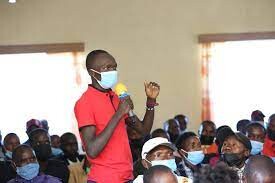
He said coaches will be held liable should their athletes fail drug tests.
“We are the handlers of these runners. Can we find out who is out to spoil the reputation of our sportsmen and women?” he said.
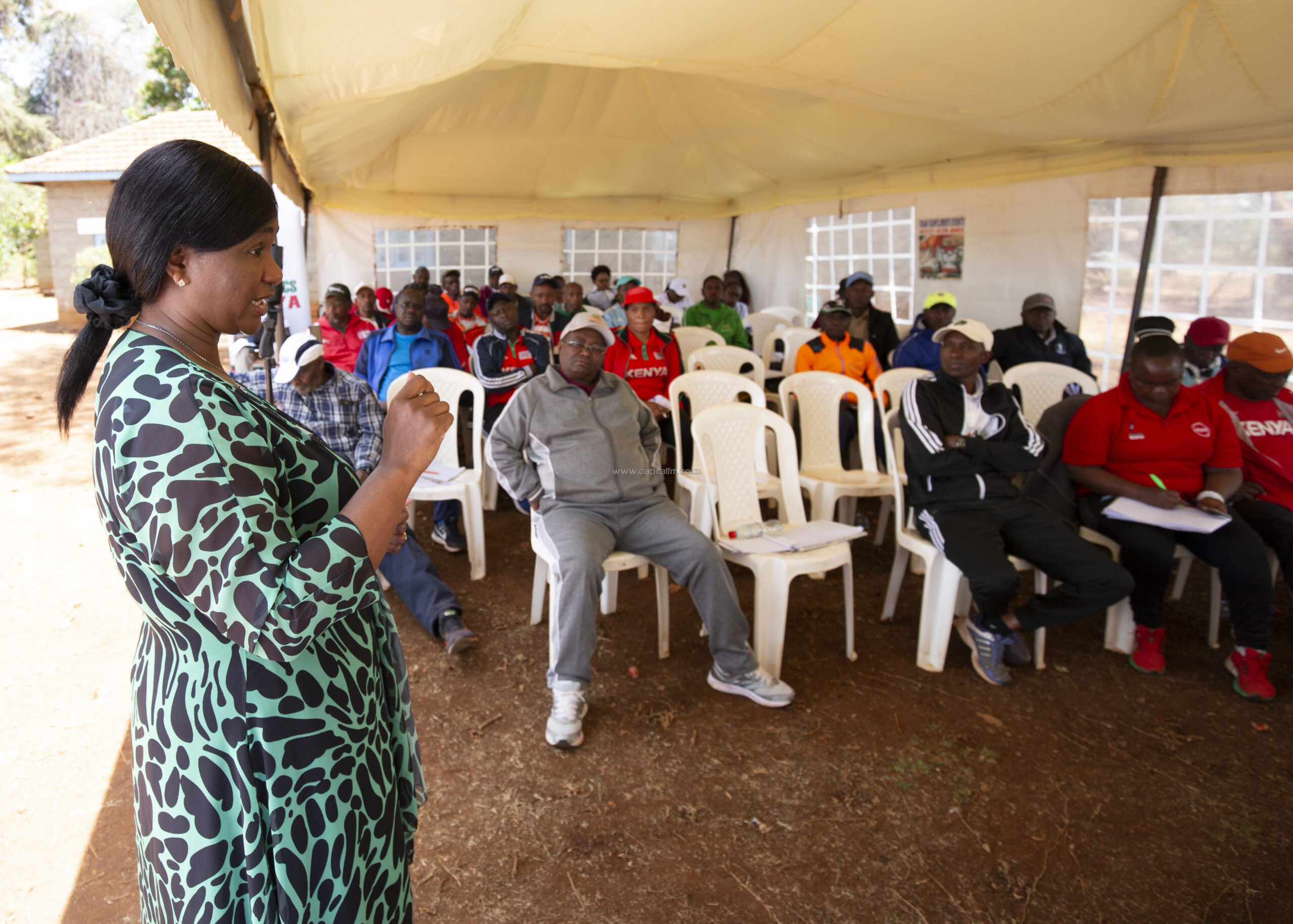
Over 30 Kenyan athletes have been flagged down for various doping offences this year alone.
Speaking at the same forum, AK Chief Administrative Officer Susan Kamau urged trainers to encourage athletes to go through the Kenya Doctors Network to ensure they take the right medication when sick.
(10/22/2022) ⚡AMPby Joseph Kanyi
Runner Collides With Deer, Almost Loses Ear: ‘Like Getting Hit by an Asteroid’
During a space-themed 5K race in Ohio, Rebecca Heasley was struck by a deer, partially detaching her ear.
Earlier this month, a mid-race deer collision left Ohio runner Rebecca Heasley, 40, with a partially detached ear. The bizarre incident occurred while Heasley was participating in the Geauga Park District's Space Race.

The inaugural event, which took place on October 1, gave runners two hours to complete up to sixteen- 0.85-mile loops as they “traveled” through the solar system. Finishing the first loop, runners made it to Mercury, then Venus, then Earth and so on.
Heasley of Willowick, Ohio, was running with her sister Victoria Heasley. With 15 minutes left in the race, the duo decided to tackle another loop to “get to Uranus.” Trying to beat the clock, Heasley jogged a bit ahead of Victoria. Shortly after, as Heasley was exiting a patch of woods with bushes on either side, she was struck by a deer.
“I thought a runner came up and hit me on the side and knocked me to the ground,” said Heasley, who later discovered that a deer’s hooves were the culprit.
The force from the deer caused Heasley to smack into a bush before falling onto her hands and right knee. On the ground, Heasley said she had a momentary freakout when she noticed her ear was not where it was supposed to be.
“I started to see that I was bleeding, and I immediately put my hand up to my head, and I realized that my ear wasn’t all the way attached. It felt like it was sliced right in the middle of the top of the ear,” said Heasley, who remained conscious despite losing a significant amount of blood.
Another runner tried calling for help but did not have reception on the trail. Realizing it would take a while for medical assistance to arrive, Victoria and several EMT trainees walked with Heasley, who was holding her ear in place, to the finish.
Although the freak accident caused Heasley to miss the official time cutoff, the race still gave her a ribbon for making it to Uranus and even offered her a custom award, which she declined.
Paramedics secured and wrapped Heasley’s head and transported her in an ambulance to University Hospitals downtown Cleveland where stitches were used to reattach her ear and close the gash on her head.
Heasley, who remained calm and positive throughout the incident, said she thinks it could have been much worse. Because she was wearing earbuds, she didn’t hear others warning about deer in the woods. She suspects that if she had turned her head and looked left in response to their warnings, the deer may have hit her directly in the face.
“I’m grateful it’s just my ear,” Heasley said. “The scar will be in my hairline and the inner part of my ear.”
At her first check-up, she said her doctor was surprised by how quickly she was healing and gave her clearance to run again.
In a month, Heasley will have another check-up, and in the meantime, her other sister Melissa created a GoFundMe to help raise money for ongoing medical expenses.
Heasley said that she won’t let this experience keep her from racing in the future and plans to compete in the Cleveland Turkey Trot.
“I’m not going to be afraid to get back out there. Deer are everywhere in Northeast Ohio,” she said.
Heasley, who started running 5Ks in 2015, describes herself as a “novelist runner” and said she likes to compete in races to raise money for charity and to see her improvements from previous years. She typically runs in two races a month from May until September, and one race in October, November and December, weather permitting.
She and Victoria have finished countless races and fun runs together over the years, including several trail runs through woods, glow in the dark runs, and even a 5K obstacle course that required runners to carry a pineapple during the entire race.
Even with so many unique race experiences, she said the Space Race is one she will always remember.
“I’ll have a story to tell for the rest of my life that’s for sure,” Heasley said. “We joked around the whole time that I got hit by an asteroid.”
During your next race or run, make sure to stay alert and heed Heasley’s advice: “Pay attention to your surroundings when you’re out there.”
(10/22/2022) ⚡AMPby Runner’s World
Japanese runner solves 420 Rubik's cubes during marathon
The Rubik’s cube is known as one of the toughest puzzles, which can be unscrambled in millions of ways. Kei Suga of Japan made deciphering the puzzle a little harder, solving a mind-blogging 420 cubes while he ran a marathon in his hometown of Kashiwa City, Chiba Prefecture.
Suga had a time limit of five hours to break the previous Guinness World Record of 254 cubes. He took four hours and thirty minutes to finish the marathon while completing a Rubik’s cube every 100m.
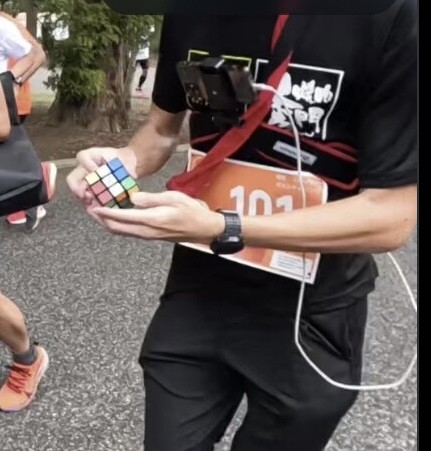
“I have been training for this record for 10 years,” says Suga. When he began running with Rubik’s cubes, he found he was able to solve one in 30 to 50 seconds. Since 2013, Suga has competed in several marathons each year.
Suga solved the Rubik’s cube for the first time in 2006. In the same year, he competed in his first World Cube Association event.
“My goal for the marathon was to solve and collect one every 100m on the course,” says Suga. He had a friend filming the challenge, as well as someone running beside him and passing him 30 different Rubik’s cubes on rotation. Suga used 60 cubes in total and ran 14.5 laps of a three-kilometre course.

“At the end of each lap, I exchanged 30 solved cubes for 30 scrambled cubes,” says Suga.
The previous record of 254 cubes was set by New Zealand’s Blair Williamson at the 2017 Christchurch International Marathon.
“I know I can’t solve the Rubik’s cube as fast as others but I question if I am the fastest runner among people who can solve Rubik’s cube,” Suga said on his motivation behind the record.
Suga’s new world record is currently unofficial and pending certification from Guinness World Records. According to Suga, the record is scheduled to be certified in early 2023.
(10/22/2022) ⚡AMPby Running Magazine
Ironman World Championship champion's "chunky" shoes spark controversy
Last week at the Ironman World Championship in Kona, Hawaii, Norway’s Gustav Iden ran a 2:36 marathon after a 180-kilometre bike and 3.8 km swim, earning his first world championship title. Iden ran a new marathon record on the Kona course in a unique pair of On’s carbon-plated running shoes, the Cloudboom Echo 3, which have a reported stack height of 50 mm, which is outside of World Athletics legal stack height rule of 40 mm for road-running events.
Iden was allowed to wear these shoes in competition, since professional triathletes do not have to comply with any rules over their choice of running shoes, World Triathlon has confirmed.
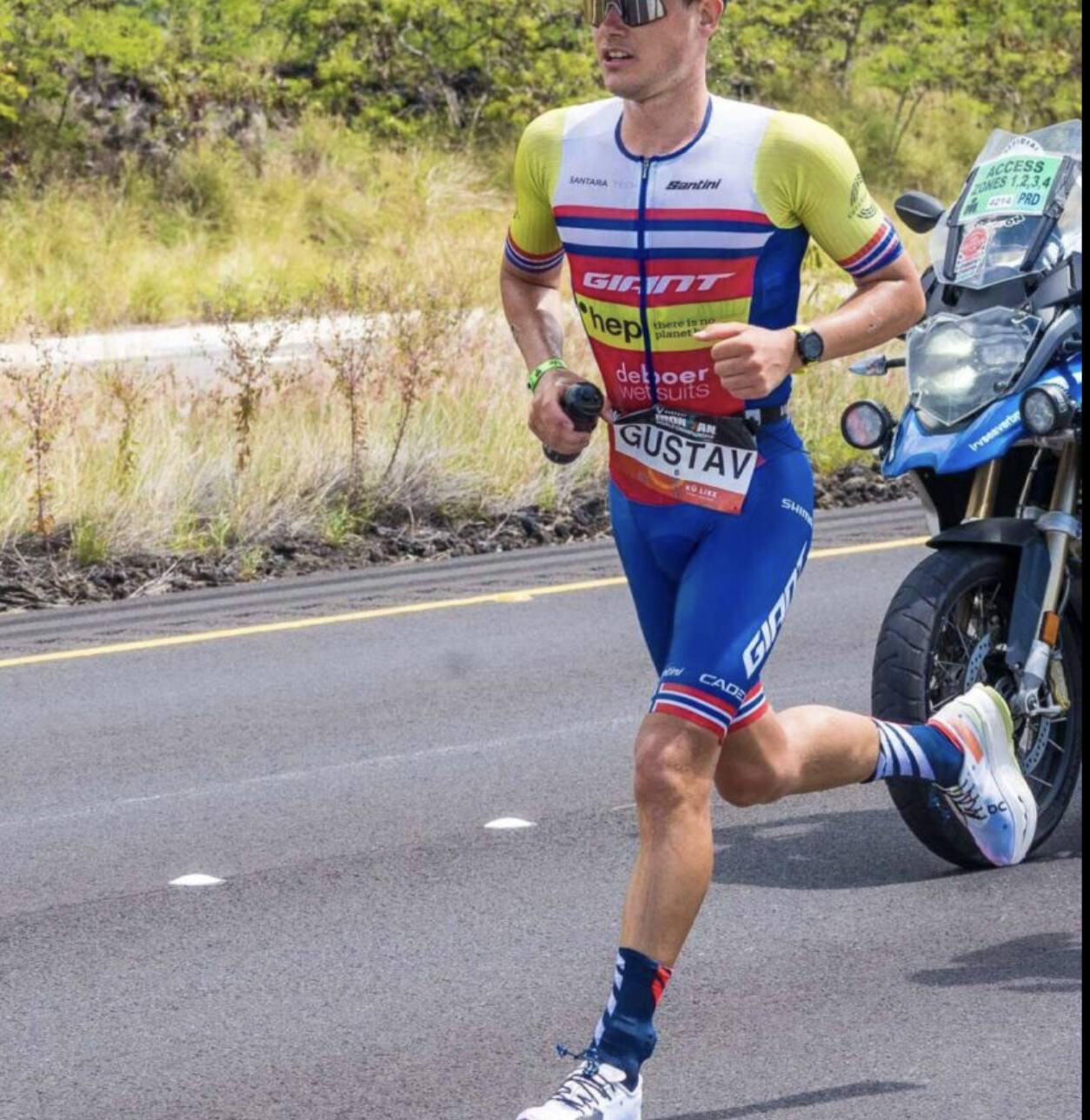
Despite regulations in athletics governing shoe technology–such as limiting the sole thickness–World Triathlon stated they will not follow World Athletics standards and no checks are being made on any of the footwear being worn.
Some fans of the sport are calling for World Triathlon to follow suit in controlling stack height for competition. The second-and third-place finishers, Sam Laidlow of France and 2020 Olympic champion Kristan Blummenfelt, both wore the WA-legal shoes Nike Alphafly Next% and Asics Metaspeed Sky 2.
Iden said this in a post-race interview with his sponsor On:
World Athletics rules state the sole must be no thicker than 40 mm and that the shoes must not contain more than one rigid or embedded plate that runs the full length of the shoes. The Cloudboom Echo 3 has a single carbon plate that runs the full length of the shoe.Canada’s Ben Flanagan also wore the Cloudboom Echo 3 during his win at the 2022 Falmouth Road Race.
Since the seven-mile road race is not sanctioned by World Athletics, elites are allowed to wear shoes which are normally not allowed at national championship road races.
Iden won in the Ironman World Championships in his Kona debut with a time of 7:40:24, taking 11 minutes off the previous course record time from 2019. On, who signed Iden in the week leading into the race, was given a green light from Ironman for the Norwegian to wear the shoe.
(10/22/2022) ⚡AMPby Running Magazine
What Is the Average Walking Speed and Jogging Speed?
Plus, how to pinpoint the pace that works for you.
Getting started with a new walking or jogging routine can be exciting and a little nerve wracking. It’s only natural after a walk or two to wonder, “Am I doing this right? Am I walking fast enough? Should I be jogging or running, instead? How do I compare to other walkers and joggers? What even is the average walking speed?”

Before you get too caught up in the comparison game, remember that any walk or jog you do is better than doing nothing at all. In fact, increasing your daily step count (regardless of pace) can help improve overall health and reduce the risk of chronic diseases like heart disease, diabetes, and even some cancers. So you’re doing your body good no matter your speed or intensity.
That said, knowing how to gauge your progress and make improvements to your walking and jogging speed over time can lead to more advantages. So here’s what you need to know about the average walking speed and jogging speed, as well as when and how to change up your own pace.
The average walking speed and jogging speed in the United States
First and foremost, it’s important to recognize that “average walking speed” and “average jogging speed” are just that—the average. That means some people go faster, and others slower. So when you’re just starting out, it’s important to pay attention to how you’re feeling on your walk or jog, rather than getting caught up in what you should be doing based on averages.
Also, it’s important to note that averages are different for males and females, and that average walking speed and jogging speeds tend to slow with age. In other words, a 20-year-old man is likely to walk faster than a 60-year-old, and may walk faster than his 20-year-old female counterpart, as well.
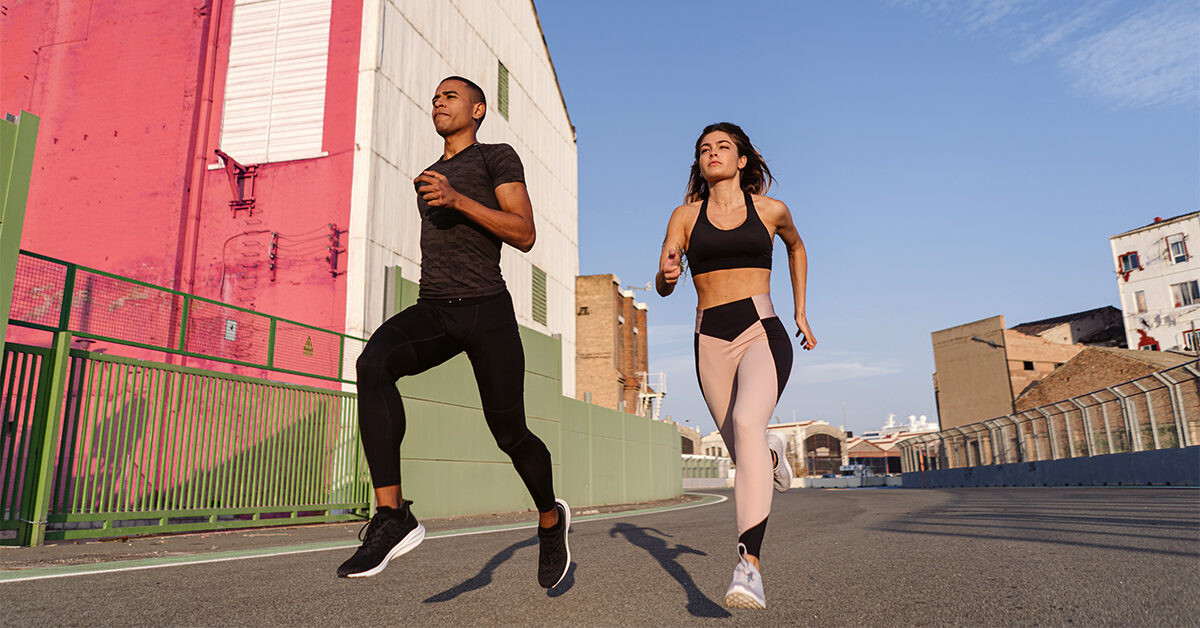
What the research says about average walking speed
In a 2011 study published in PLOS ONE, researchers used accelerometer data to measure the walking speed of participants in their day-to-day life. The results found that participants walked between 2.3 and 4.6 miles per hour, with a median walking speed of about 2.8 miles per hour. Of course, this is just a single study, and it measured walking in everyday life, which could vary from ambling slowly from the couch to the refrigerator to speed walking to an elevator to catch it before the door closes.
A systematic review and meta-analysis published in 2021 in the journal Sports Medicine, researchers looked at outdoor walking speeds across 35 different studies. Based on the results, researchers broke the average speeds down into categories of slow, usual, medium, and fast, with results averaging 1.8, 2.9, 3.3, and 3.8 miles per hour, respectively.
So if you’re using national averages to assess how fast you should aim to walk while exercising, anything from about 2 to 4 miles per hour is a good goal, depending on your fitness level and age.
What the research says about average jogging speeds
When it comes to jogging, judging averages is a little trickier simply based on the idea of “what are we averaging?” Most people don’t just jog around in daily life, unless they’re trying to run to catch a plane, stop their child from running into the street, or the like. So the information available is largely gathered from compilations of data found on fitness and running apps. This means it’s from people who are jogging (or walking or running) for distance on a regular basis, biasing the sample size toward those who are more consistently training for distance running, rather than an average that includes all possible demographics (like perhaps the less-competitive newbies).
This is further confused by the fact that “jogging” and “running” are technically two different things. Jogging is typically considered speeds between 4 to 6 miles per hour (a 10- to 15-minute mile), while running is considered anything faster than 6 miles per hour (a 10-minute-per-mile pace).
That said, based on stats released by Strava in 2017, the average speed to complete a mile was 9:48—that’s slightly more than a 6-mile-per-hour pace, which technically crosses over into the “running” category of speeds. In other words, this implies the data gathered skews more toward runners than joggers, further highlighting that it’s hard to pinpoint an “average” speed when it comes to lower-intensity jogging because it’s hard to find a good data set.
The 2021 Strava report points to a similar average pace, based on the average run length and distance. So if you’re just getting into jogging, aiming for any speed between 4 to 6 miles per hour is a good bet. And if you gradually want to work your way into running at faster speeds, know the average pace tends to hover just above 6 miles per hour.
How to find your ideal walk or jog speed
Averages mean very little when you, an individual, are starting a walking or jogging routine. It’s most important to find a pace that works for you, rather than to worry about what is or isn’t the “average.” And finding a good speed takes a little trial and error.
Here’s how to help you find what works for you:
The “Halfway Test”
“My personal favorite tip for finding your perfect pace is the ‘halfway test,’” says Erin Beck, C.P.T., director of training and experience for STRIDE Fitness. “The first half of your walk should feel like, ‘Hey, I got this. I could keep this up for a while.’ Once you hit halfway (either of the time you’ve set aside for your walk, or your halfway distance), you should start to feel like, ‘Uh-oh, I may not have this. I’m going to need a break pretty soon!’”
This is essentially a reminder not to start out too fast and furious—it’s okay to pick a doable pace, as long as you do a mid-point check-in. “If you’re starting to feel tired halfway through, try to hold your speed for the second half. Or, if your heart rate is still fairly calm and you think you can increase your speed, go for it,” Beck says.
If the “halfway test” feels a little nebulous to you, it’s not the only way to self-monitor your speed. In fact, there are a couple other good ways to do so, whether you’re walking or jogging.
The “Talk Test”
“With my clients, I like to use a cue I call ‘conversational pace,’” says Heather Hart, RRCA-certified running coach and co-founder of Hart Strength & Endurance. “I tell them to imagine they’re running with a friend they haven’t seen in a long time, and they’re catching up with a conversation. They should be running (or walking) at an effort where they can speak in short sentences, without feeling winded or out of breath.”
This is a particularly helpful way to gauge your intensity if you are, in fact, walking or jogging with a buddy. Without having to clock your speeds or pay attention to distances or times, you can determine whether you’re maintaining a reasonable pace.
Rate of Perceived Exertion (RPE)
To determine a good walking or jogging speed for you, Hart also suggests considering your personal rate of perceived exertion, or RPE. This is a sliding scale of exertion based from 1 to10. “One is fast asleep in bed. Three is a super fast walk to try and get to your gate on time at the airport (but there’s no need to run). Seven is ‘this is a pretty hard run, but I can keep going for a little longer.’ Ten is running for your life from a bear,” explains Hart. That basically means your “sweet spot” for a walk or jog should range from a 3 to 6, and if you’re jogging, specifically, “a good easy pace to build endurance is usually around a 4 to 5,” says Hart.
Increasing your average walking or jogging speed—the right way
Maybe you want to walk faster, or maybe you want to gradually move from a walking workout to a jogging routine—either way, there are two factors that play a role. This includes when you should increase your speed, and how you should go about doing it.
When to increase your walking or jogging speed
One of the best ways to end up injured is to start doing too much, too soon when it comes to your workout. Increasing your speed, distance, or even the number of workouts you’re doing each week before your body is ready for it won’t do you any long-term favors.
“I prefer to have my new clients build up to the point where they’re comfortable with three to four workouts a week, for around six to eight weeks, before incorporating speedwork,” says Hart. And while she’s referring specifically to jogging or running clients, she emphasizes that the same parameters apply to walkers. “This allows the client time to begin making the physical adaptations necessary before adding the increased stress of speed. It also gives them time to work on fine-tuning other aspects, such as finding the right shoes, becoming familiar with pacing and effort, and feeling comfortable with form.”
If, after six to eight weeks of consistent walking or jogging workouts, you’re starting to feel like your workouts are getting easier, and you’re getting better at gauging your effort, you might want to consider adding some speed sessions to your weekly schedule to help bump up your personal average pace.
How to safely increase your walking or jogging speed
Once you’ve determined you’re ready for speed work, embrace the mantra, “slow and steady.”
“When clients are ready to start speedwork, we start small,” emphasizes Hart. How she does that: “One speed workout per week that includes a sufficient warmup and focuses on shorter, faster intervals. This workout does not have to be long or taxing.”
It’s important to remember “speedwork” and “faster intervals” are all relative to your starting point. “For beginners, it’s a great idea to just start by incrementally increasing the amount of time you set out to jog (or walk faster) versus your standard pace. The faster intervals should still be at a fairly easy pace. When you start to feel winded, it’s a good idea to switch back to your original speed, until you feel ready to speed up again,” says Serena Marie Hunt, RD and RRCA-certified running coach.
If you need a little more guidance on how to go about implementing intervals, Hunt suggests a loose form of Fartlek training. “Fartlek runs (or walks) can be done by simply choosing a point in the distance and speeding up to reach it. You should feel tired but not totally exhausted when you complete your interval,” she says. You repeat that push to a tree, car, or other landmark a few times throughout your workout, allowing recovery intervals in between, before you wrap it up.
The benefit of adding “bursts” of speed to your walks or jogs
Keep in mind: More speed isn’t necessarily better, and small, consistent changes will really pay off, both for your performance, and your health. In fact, even if you’re having a hard time meeting walking goals related to distance or time (like 10,000 steps per day, or 30 minutes of activity per day), implementing occasional bursts of increased walking speed may carry many of the same health benefits, according to a study published in the journal JAMA Internal Medicine and another in JAMA Neurology.
The first study focused on daily step count and walking intensity and the associated risk of incidence of cardiovascular disease and cancer, as well as mortality from these conditions and all-cause mortality; the latter focused on daily step count and walking intensity and its association with incident of dementia. Both examined UK Biobank data, which involves more than 78,000 individuals.
“Walking pace is tied closely with intensity, and this is tied to heart rate. Walking at a faster pace will lead to an increase in intensity. For adults who may not be very active, increasing walking intensity (pace) for short periods during the day can improve aerobic capacity,” explains Matthew Ahmadi, postdoctoral research fellow at The University of Sydney’s School of Health Sciences and an author on both JAMA studies.
Ahmadi says the goal should be to walk a little faster than your comfortable walking speed. “This can improve your overall cardiovascular health which will lower your risk for cardiovascular disease, [it will] help maintain brain health by lowering the risk for vascular dementia, and [it will] improve body inflammation and immune responses, which can lower the risk for cancers,” he explains.
In other words, a little bit of effort, and a slow and steady approach to your walking or jogging program, can go a long way.
The bottom line on average walking speed and jogging speed
While knowing the general population’s average walking and jogging speeds can help motivate you to move more, it’s smart to focus on your own average pace and consider working to improve upon that pace. The key, though, is gradually getting faster.
“One of the biggest mistakes I see new exercisers making is making all of their workouts too difficult. It’s incredibly important to include recovery and ‘easy’ days, so that in turn, you can make your harder workouts hard enough. The recovery aspect of training is equally as important. Those who make the most progress are those who truly learn the discipline to go easy when they need to,” Hart says.
(10/22/2022) ⚡AMPby Runner’s World
Should I Run With Sore Legs?
Whether you have just started or been running for years, sore legs are something runners deal with every week. But the question that often runs through our mind is – Should I run with sore legs?
Knowing when to push yourself and when to hold yourself back is the solution to preventing sore legs after a run. So balancing the right amount of recovery into your training is key to keeping you running without any pain or soreness.
Delayed onset muscle soreness (DOMS) is a common occurrence within the endurance community. Symptoms can differ from tenderness in the muscles to unrelenting pain.

Deep thigh pain after running, sore hamstrings, and tender quadriceps are caused by micro-injuries. These injuries are often experienced by runners returning to training following a period of rest or reduced running. For more experienced runners, DOMS can occur when introducing new sessions, certain types of workouts, and increasing the volume too quickly.
SHOULD I RUN WITH SORE LEGS?
To determine if you should run with sore legs, first figure out if it is soreness or acute pain. If your legs are just tender it’s ok to run. If you find that you have acute pain or can barely walk after running, then you need to rest yourself from running.

Soreness often occurs after a race or tough workout. While it may only put you out from running for a couple of days, it is important to allow full recovery. Otherwise, you may find the soreness starts affecting your running form. Running with sore legs will force you to overcompensate, adding more load to the part of your body that does hurt. This can cause injuries, delay recovery, and prevent you from continuing to train at the required level.
Even if you can push through the pain, running with sore hamstrings, quadriceps or calves isn’t a wise decision. You should first distinguish what is causing this pain and discomfort.
– Is it from lack of recovery?– Have I introduced any new workout?– Is it caused by the surface I run on?– Is it just because I started running?
All of these questions can help you understand why your legs ache after running. It can also help you to re-structure you’re training to prevent it from happening in the future.
If you are experiencing a small amount of soreness after running, you still might find it possible to run the next day. If this is the case, make sure it doesn’t affect your running form. If your running form isn’t affected by the soreness, contact a masseuse to help relieve any tension or soreness in the muscles asap. Alternatively, if you don’t have access to a masseuse, try spending 30 minutes on the foam roller. Both can help speed up the recovery process and prevent further damage to the muscles while the legs are still sore after running.
LEGS SORE AFTER RUNNING FIRST TIME
Even if your fit and active, it is likely that you may experience sore legs after running the first time. The reason can be because:
You haven’t exercised for some time. Not used to this level of strenuous activity. You overdid it during the initial stages of running. You’re used to a different type of sport (example: cycling or swimming)
Either way, muscle soreness the days after a run occurs from small tears in the muscle fibres. When you experience this for the first time, the body’s defence mechanism kicks in, causing fluid to occupy the muscles, causing swelling and pain. This swelling often peaks around 48 hours after your initial run. That is why you may feel fine after a run, but the next day you struggle to walk.
To prevent your legs from getting sore, the number one rule is not to overload the body too soon. That means for any new runner starting, it is best to include a combination of running and walking while the muscles adapt. Once your body gets accustomed to the impact and stress from running, you can slowly increase the amount of running you do.
DEEP THIGH PAIN AFTER RUNNING
If you have been running for a while now, you’ve most likely at some point felt deep thigh pain after running. Although this is common, it is not always normal. Luckily your not alone. Deep thigh pain is a common complaint within runners, and it can affect not only your running technique but training as well.
Knowing what causes this and the best treatment protocol is the first step in getting back on the feet again.
Deep thigh pain often improves during the run, but then comes back worse once you have finished. This is usually caused by the body adapting to the training. By allowing adequate rest, you can usually be back running in a few days.
However, sometimes deep thigh pain can be a sign of strained quadriceps or even a femoral stress fracture. Both of these can put you out of running for long periods. Quad strain pain is often present in a specific part of the muscle. On the other hand, a femoral stress fracture feels like a deep pain in the thigh.
Either way, it is important to take some time off from running and focus on lower body strength training. Of course, if you have incurred a stress fracture you must allow time for recovery.
Exercises like squats and leg presses can help strengthen the thigh muscles before starting back running. But, make sure you focus on light loads and short range of motion loading first. Then focus on keeping your cardiovascular fitness by cycling or swimming, until you can run again.
As for returning to running, there should be a full range of motion and no localized pain before starting running again. Your strength should be back to normal and ideally given the green light from a physio.
(10/21/2022) ⚡AMPDaniel Mateiko seeks to lower his PB in Valencia this weekend
Daniel Mateiko has said he is looking to lower his personal best time of 58:26 at the Valencia Half Marathon on October 23.
During last year’s edition, Mateiko settled for third place in his personal best time. He said the position will not count for him as he achieves his target of a new PB .
“Everyone goes into a race with a spirit of winning but for me, the position doesn’t matter at the moment. I just want to lower my personal best,” Mateiko said.
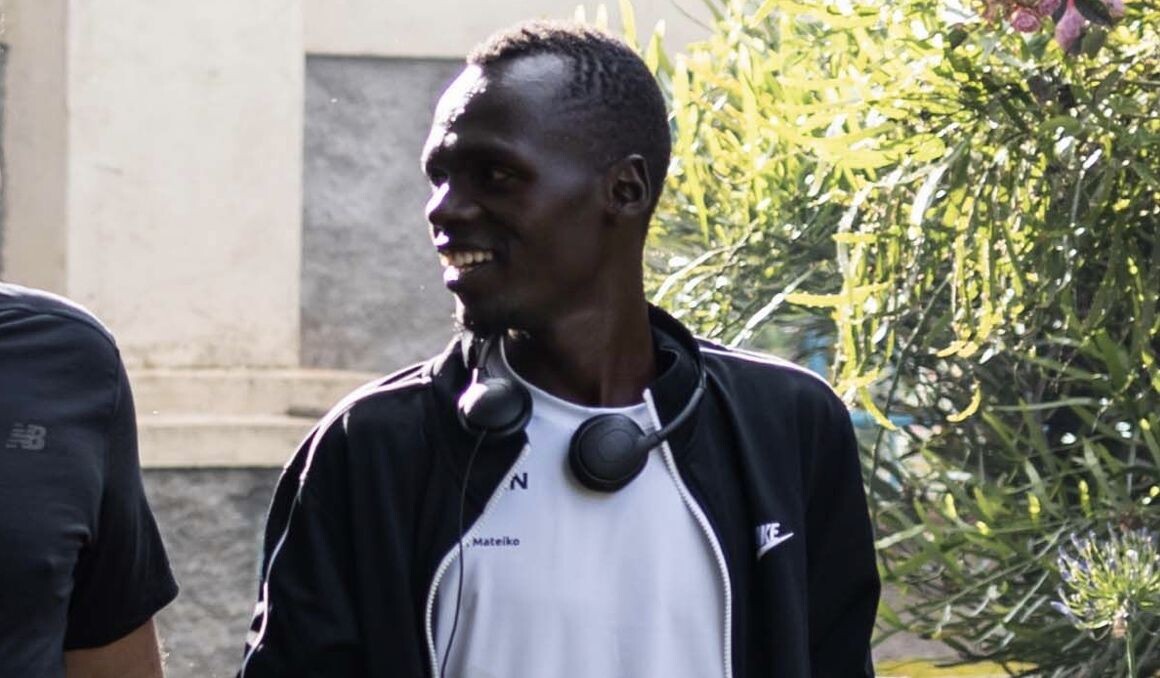
Mateiko said he has been training well and he is bullish that he will attain his goal. He said he had a small injury which was treated and he is now okay. “I am fine though, I feel some kind of pressure,” he added.
Mateiko added that after the race, he will take a short break before resuming training for the World Cross-country Championships in Bathurst, Australia.
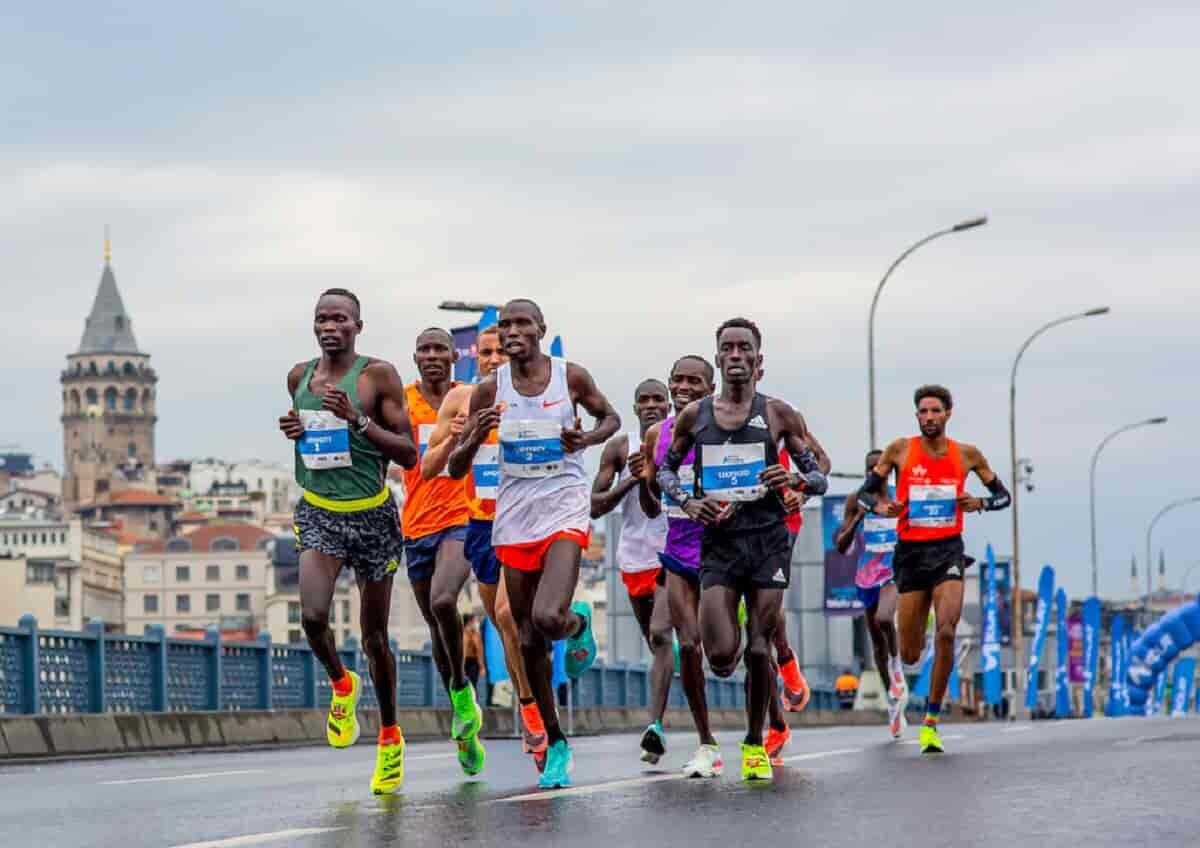
He is also hoping to make a cut for the World Championships in Budapest, where he hopes to compete in the 10,000m.
“This is my last race of the season. After resting, I intend to begin intensive training in preparation for the cross country and World Championships,” he said.
Mateiko narrated how his experience at the World Championships, where he was placed eighth in 10,000m in 27:33.57, had boosted his morale.
“I got to learn that if you have to win, you have to fight hard. It was a whole good experience and I was happy to get that kind of exposure,” he said.
Mateiko revealed he looks up to world marathon record holder Eliud Kipchoge, who is also his training partner at Kaptagat.
“We have been close since I started running and he has always been my adviser. He also motivates me because of what he has achieved so far and he is a down-to-earth kind of person,” Mateiko concluded.
(10/21/2022) ⚡AMPby Abigael Wuafula
Valencia Half Marathon
The Trinidad Alfonso Valencia Half Marathon has become one of the top running events in the world. Valencia is one of the fastest half marathon in the world. The race, organized by SD Correcaminos Athletics Club, celebrated its silver anniversary in style with record participation, record crowd numbers, Silver label IAAF accreditation and an atmosphere that you will not find...
more...Kenyan Mary Keitany to be inducted into New York Marathon Hall of Fame
Women's only World marathon record holder Mary Keitany will be inducted into the 2022 New York Road Races Hall of Fame in USA on November 4.
The ceremony will come two days before this year's New York Marathon which will take place on November 6.
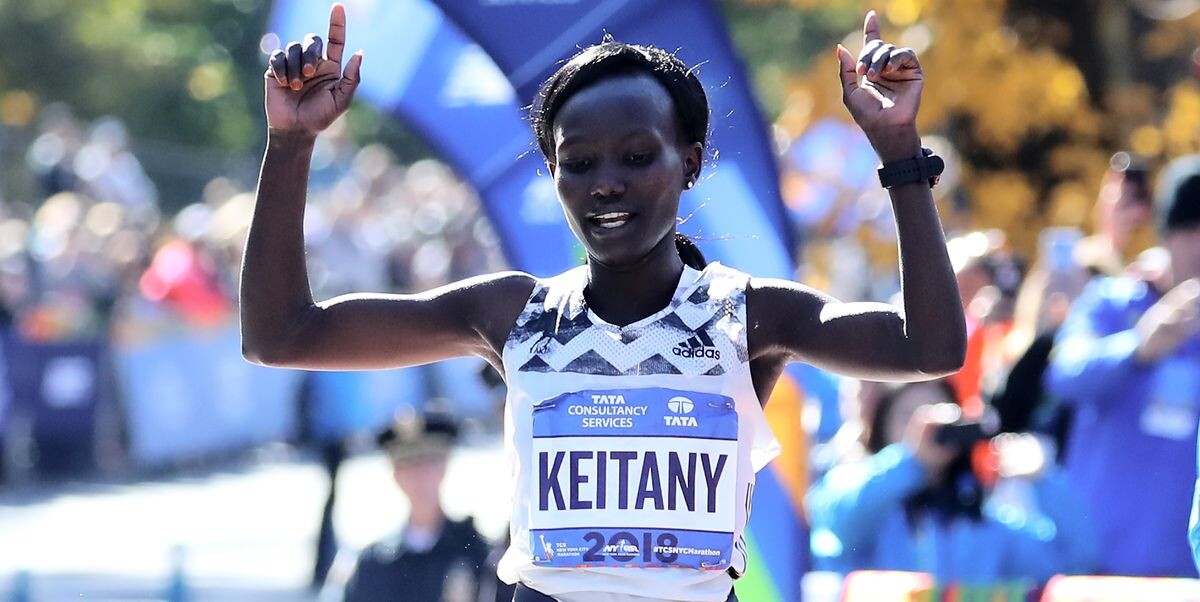
Keitany told Nation Sport that it is a big honour for her to be inducted into the Hall of Fame in New York.
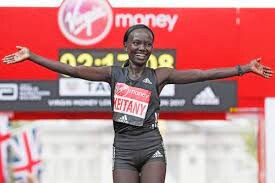
The legendary long distance runner thanked her fans in New York who cheered her on during the races.
“I’m glad I have been listed for the induction into the Hall of Fame. I started my marathon career in New York and after retirement, I’m happy I will be going back to be honoured,” said Keitany.
In her first race in New York in 2010, Keitany was in third place after clocking 2:29:01. She finished third again the following year, but improved her time to 2:23:38.
Keitany went back to New York Marathon in 2014 where won in 2:25:07 before defending her title in the 2015 and 2016 editions.
She finished second in 2017, then reclaimed her title in 2018 before announcing her retirement from road racing after her second place finish the following year.
"My first experience in major races was London Marathon when I was tasked to pace Lorna Kiplagat, Gete Wami and the rest of the team, I remember I had been asked by the race organiser and the management to pace the normal 21km but I exceeded to 26km just to test my body which was responding well at that time," said Keitany.
That would be the turning point for Keitany, who was by then a half marathon specialist. When she returned to training in 2009 after one-year maternity leave, her eyes were fixed on the full marathon.
She won the London Marathon in 2011.
Kenya's Ibrahim Hussein was inducted into the Hall of Fame last year with the Class of 21 which included Americans Gary Muhrcke and Shalane Flanagan, Scotswoman Liz McColgan and Australian Kurt Fearnley.
(10/21/2022) ⚡AMPby Bernard Rotich
TCS New York City Marathon
The first New York City Marathon, organized in 1970 by Fred Lebow and Vince Chiappetta, was held entirely in Central Park. Of 127 entrants, only 55 men finished; the sole female entrant dropped out due to illness. Winners were given inexpensive wristwatches and recycled baseball and bowling trophies. The entry fee was $1 and the total event budget...
more...Runners and stress fractures: why you should start taking vitamin D
If you’re a regular runner, you probably know someone who has had to take time out due to a dreaded stress fracture. You may have heard of pro athletes like Molly Seidel and Gabriela DeBues-Stafford taking time out for stress reactions.
Vitamin D has long been known to help the body absorb and retain calcium and phosphorus; both are critical for building bone. Recent studies have shown that vitamin D insufficiency is not only common in athletes but can be a serious factor leading to a stress fracture. Should you be taking a supplement? Here’s what you need to know.
Stress fractures v. stress reactions

Readers may be more familiar with the term “stress fracture,” which is further along the stress injury spectrum. (In other words, a stress reaction may lead to a stress fracture if left untreated.) The cause of the initial reaction (and subsequent possible fracture) is usually overuse, as opposed to more serious traumatic types of fractures from falls or other accidents.
Stress injuries are classified upon diagnosis: early (stress reaction) or late (stress fracture). A stress reaction can be considered similar to a deep bone bruise. A stress fracture is a small hairline crack in the bone.

The study
Researchers reviewed more than 180 scientific studies to determine the impact of vitamin D on musculoskeletal health and athletic performance. They found that stress fractures impact approximately 20 per cent of all athletes, both elite and amateur.
The review explores the importance of vitamin D in athletes’ diets, what type of athletes are most likely to be affected by stress fractures and what precautionary measures athletes can take. While runners of any kind were one of the most common groups sidelined by stress fractures, athletes in a wide range of load-bearing sports are affected by them.
The takeaway
We get vitamin D largely from the sun’s ultraviolet-B (UVB) rays, and many people, particularly those living above the equator, are vitamin D deficient. While only one per cent of the general population is impacted by stress fractures, one in five athletes (20 per cent) will experience one.
Vitamin D plays important role in preventing stress fractures and can be safely taken as a preventative measure. Runners should ask their doctor for regular bloodwork to check vitamin D levels, along with calcium, creatinine and parathyroid hormone. Insufficient levels of vitamin D can be restored by optimizing your diet (while few foods naturally have much vitamin D, some are fortified with it) and taking supplements.
Work with your doctor to find the right amount of vitamin D to take: researchers determined that the prevalence of stress fractures decreased when athletes are supplemented daily with 800 IU vitamin D and 2,000 mg calcium.
(10/21/2022) ⚡AMPby Keeley Milne
Canadian distance champ Leslie Sexton’s chocolate chip cookies
When Canadian marathon record-holder Natasha Wodak is craving a sweet treat, she only has to look as far as fellow national teammate Leslie Sexton. “Leslie makes the best chocolate chip cookies ever!” Wodak says. Even the most dedicated athletes’ meal plan should include some food that’s pure delight, and these bakery-style cookies nail that category.
Sexton suggests making a double batch and freezing most of the dough. “That was I can pop four to six in the oven and have fresh, warm cookies every few days,” she says. Sexton advises following the recipe closely. “I will usually use dark chocolate chunks to go with the regular semi-sweet chocolate chips. Chilling the dough for 24 hours is key, don’t skip that step,” she adds.
Leslie Sexton’s incredible chocolate chip cookies
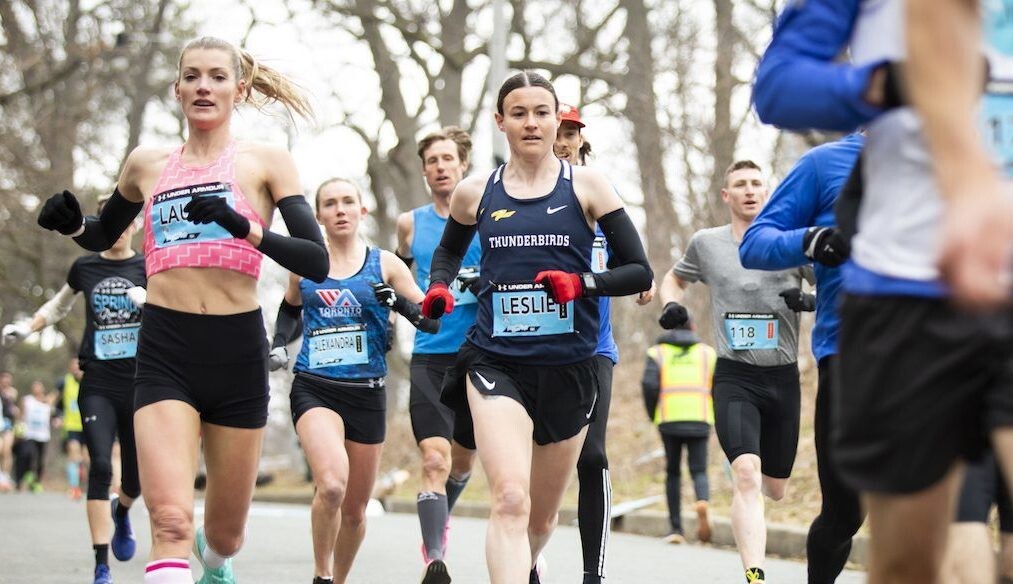
(makes 26 cookies)
Ingredients3 cups all-purpose flour1 tsp baking soda1 tsp fine sea salt2 sticks unsalted butter, at room temp.1/2 cup granulated sugar1 1/4 cups lightly packed brown sugar2 tsp vanilla2 large eggs at room temp.2 cups semisweet chocolate chips

Directions
Preheat oven to 350 F (177 C).
In a medium bowl, combine the flour, baking soda and salt.
In the bowl of an electric mixer, beat the butter, granulated sugar, and brown sugar until creamy, about 2 minutes. Add vanilla and eggs. Gradually beat in flour mixture. Stir in the chocolate chips (and chocolate chunks, if using).
Wrap the dough in plastic wrap and refrigerate for at least 24 hours but no more than 72 hours. This allows the dough to “marinate” and makes the cookies thicker, chewier, and more flavorful. Let dough sit at room temperature just until it is soft enough to scoop.
Divide the dough into balls using a large cookie scoop and drop onto prepared baking sheets.
Bake for 11–13 minutes, or until golden brown. Cool for five minutes before removing to wire racks to cool completely.
(10/20/2022) ⚡AMPby Keeley Milne
Two-time Rotterdam Marathon champion banned three years for EPO
The 2016 and 2019 Rotterdam Marathon champion, Marius Kipserem, was given a three-year doping ban by the Athletics Integrity Unit on Thursday for the use of erythropoietin (EPO), which is a breach of the World Athletics Anti-Doping Rules.
The 34-year-old becomes the 15th Kenyan athlete to receive a doping-related sanction since July. Kipserem was also one of Eliud Kipchoge’s 41 pacers at the INEOS-1:59 Challenge in 2019. He has a personal best of 2:04:04 from the 2021 Rotterdam Marathon, where he was the runner-up.
According to the Athletics Integrity Unit (AIU), Kipserem’s urine sample collected in an out-of-competition test conducted on Aug. 17 in Kapsabet, Kenya tested positive for EPO, a hormone that promotes red blood cell production, which improves endurance.
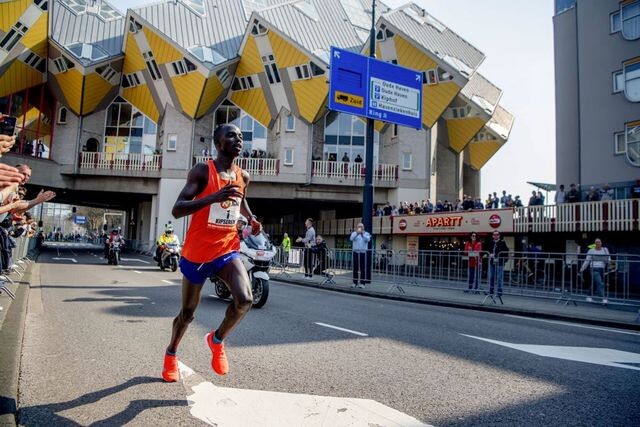
All of Kipserem’s results have been disqualified dating to Aug. 17. He last ran at the 2022 Blackmores Sydney Marathon in Australia on Sept. 18, where he placed sixth in 2:13:40. Kipserem trains with Rosa e Associati, Nike-sponsored training group in Kenya, alongside half-marathon world record holder Jacob Kiplimo and 2021 Chicago champion Seifu Tura. Lawrence Chrono and Emmanuel Saina, who both received doping bans this year, were also part of the group.
Kipserem is the third INEOS-1:59 pacer to recieve a doping ban. Philemon Kacheran and Alex Korio were the first two athletes from the challenge to be handed bans from the AIU.
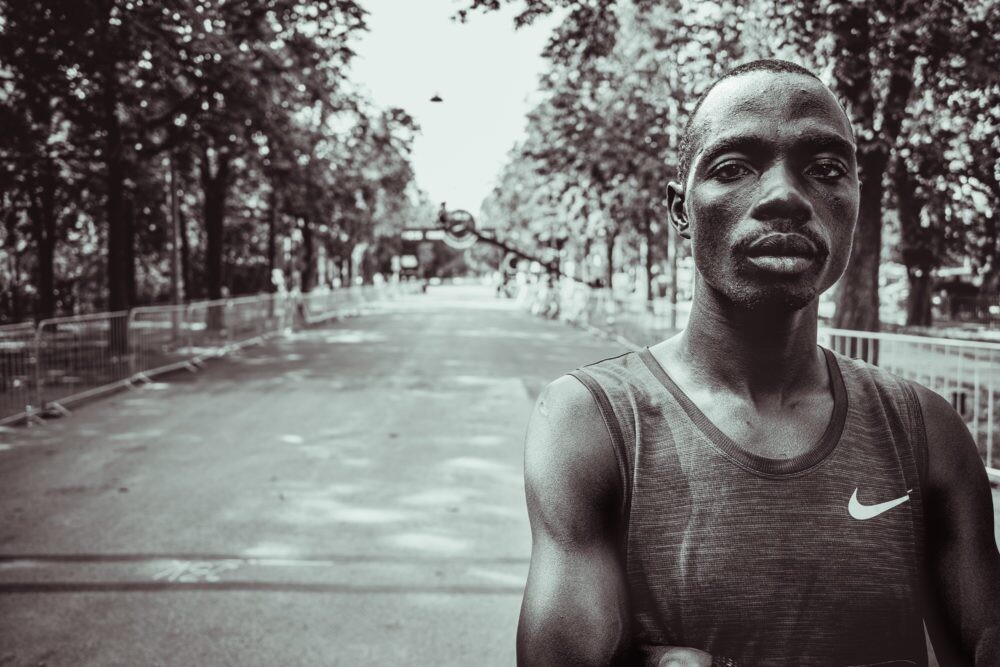
Kipserem’s ban comes just days after two other Kenyan athletes were suspended by the AIU for doping-related charges. He is the fifth Kenyan athlete to receive sanctions in the last 30 days and the 52nd Kenyan who is currently serving a suspension.
According to Kenyan newspaper The Standard, Athletics Kenya held an anti-doping educational forum alongside the Anti-Doping Agency of Kenya (ADAK) on Tuesday in Eldoret. The ADAK called upon Athletics Kenya and government agencies to partner with them and educate athletes on the dangers and prevention of doping.
(10/20/2022) ⚡AMPby Marley Dickinson
Kenyan Sally Kaptich leads star-studded field for Frankfurt Marathon
Sally Kaptich heads the line-up for the elite women's field for the Mainova Frankfurt Marathon on October 30.
She tops the list of fast athletes with her best of 2:21:06 which she achieved in Berlin three years ago.
Kaptich comes to Frankfurt after finishing third in Berlin in 2019, where the 36-year-old ran what is currently her personal best of 2:21:06.
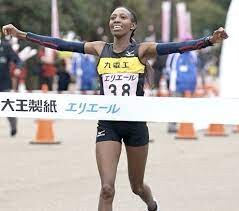
She was also seventh in the 10,000m at the 2013 World Championships in Moscow, Russia and won a bronze medal at the World Half Marathon Championships the following year. She placed fourth in Tokyo Marathon in 2:21:42, six months after Berlin.
Her fellow Kenyan Helah Kiprop with a personal best of 2:21:27 will also be a contender.
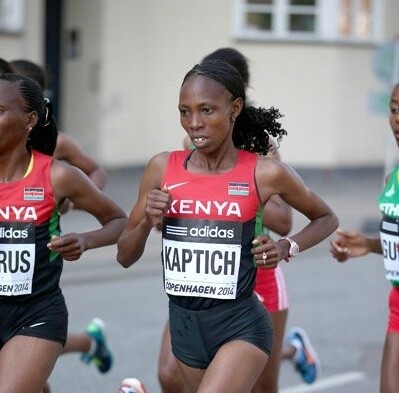
She finished second at the World Championship Marathon in Beijing in 2015 and won marathons in Seoul in 2014 and Tokyo in 2016, the latter being where she ran her personal best.
This year, Kiprop was back in action, winning the Copenhagen Marathon in 2:24:10. Now 37, she knows the Frankfurt course well, having run what was then her fastest marathon of 2:27:14 in 2014 when she finished fifth
The Kenyan duo will be up against Ethiopian Yeshi Chekole. The Ethiopian improved her best to 2:21:17 for third place at the Seville Marathon in February. Also worth noting is her compatriot Meseret Abebayahau.
She ran her fastest marathon by over five minutes to finish second in 2:25:18 in Madrid in spring. The improvement was impressive since she had never broken 2:30 previously.
In the men's category, Martin Kosgey will spearhead Kenya's quest for glory in the event. He finished second in 2016 and 2018 and fourth in 2017 and 2019.
The 33-year-old also set his personal best of 2:06:41 in 2018. The Frankfurt Marathon on October 30th will be his first race in a year. In 2021, the Kenyan performed well with a second-place finish in 2:06:56 at Eindhoven.
Kosgey faces a stern test in the shape of Ethiopian Betesefa Getahun who has personal best of 2:05:28
(10/20/2022) ⚡AMPby William Njuguna
Mainova Frankfurt Marathon
Frankfurt is an unexpectedly traditional and charming city, with half-timbered buildings huddled in its quaint medieval Altstadt (old city), cosy apple wine taverns serving hearty regional food, village-like neighbourhoods filled with outdoor cafes, boutiques and street art, and beautiful parks, gardens and riverside paths. The city's cache of museums is second in Germany only to Berlin’s, and its nightlife...
more...Try a steady state workout to build strength and feel powerful
Adding steady-state workouts to your training is a great way to practice running at a moderately challenging pace for longer stretches. Renowned coach and ultrarunner Jason Koop builds steady-state workouts into all his athletes’ training plans, from beginner to advanced. Koop says steady state runs build aerobic strength, the foundation for your best performances from the 5K to the marathon.
Try one of these steady state sessions and head into your next race feeling confident about your ability to run long and strong.

How to determine your steady state pace
Steady state pace is all about the in-between, and it’s a perfect workout to run by feel (perceived exertion) rather than exact numbers. Sometimes called an ‘easy-medium’ pace, it’s not fast but not slow. Not hard, but not easy. These can be tough workouts, not because of the pace, but because of the duration of running, and the concentration it takes to maintain a steady pace over a longer period–perfect practice for race day.

If you’re a long-distance runner, steady state run pace can range between 10 seconds faster and 30 seconds slower than your marathon race pace. That’s a big range, which is why learning to run steady runs by feel is ideal. This takes practice, and it might take you a few sessions to feel like you’ve nailed it.
The workout
Warm up with ten minutes easy running
30 minutes steady state pace
Cool down with ten minutes easy running
Ease into your steady state pace over several kilometres, and let your body fall into the pace naturally. Some days this will feel easy and other days getting to a steady pace may feel challenging.
Advanced options
To dial this up a notch, keep your warmup and cooldown the same, but run two x 25 minutes hard, with four minutes recovery in between. As you get stronger you can add time to the steady state intervals, increasing to 2 x 30 minutes hard, four minutes recovery, up to 2 x 40 minutes hard, four minutes recovery.
While a steady state run shouldn’t leave you feeling beat up, you should still follow it up with an easy running or recovery day to maximize the training benefits.
(10/20/2022) ⚡AMPby Running Magazine
New York City Marathon to offer prize money for non-binary runners
For the first time at any Abbot World Marathon Majors event, the 2022 New York Marathon will award prize money to the top runners who identify as non-binary. On Tuesday, New York Road Runners (NYRR) rolled out non-binary time qualifying standards, team awards, club points and prize money throughout all NYRR races in 2022.
At this year’s marathon, non-binary runners finishing first through fifth will receive cash prizes. The winner will receive $5,000, with the prize amount decreasing by $1,000 for each placement; the fifth-place finisher will win $1,000.
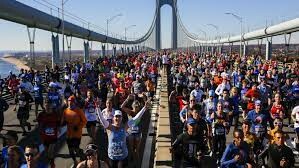
NYRR’s CEO, Kerin Hempel, said in a press release that the organization is “focused on ensuring all of our athletes feel welcome and included.”
The race became an industry leader as the first Abbott World Marathon Major to add a non-binary category (which happened in 2021).
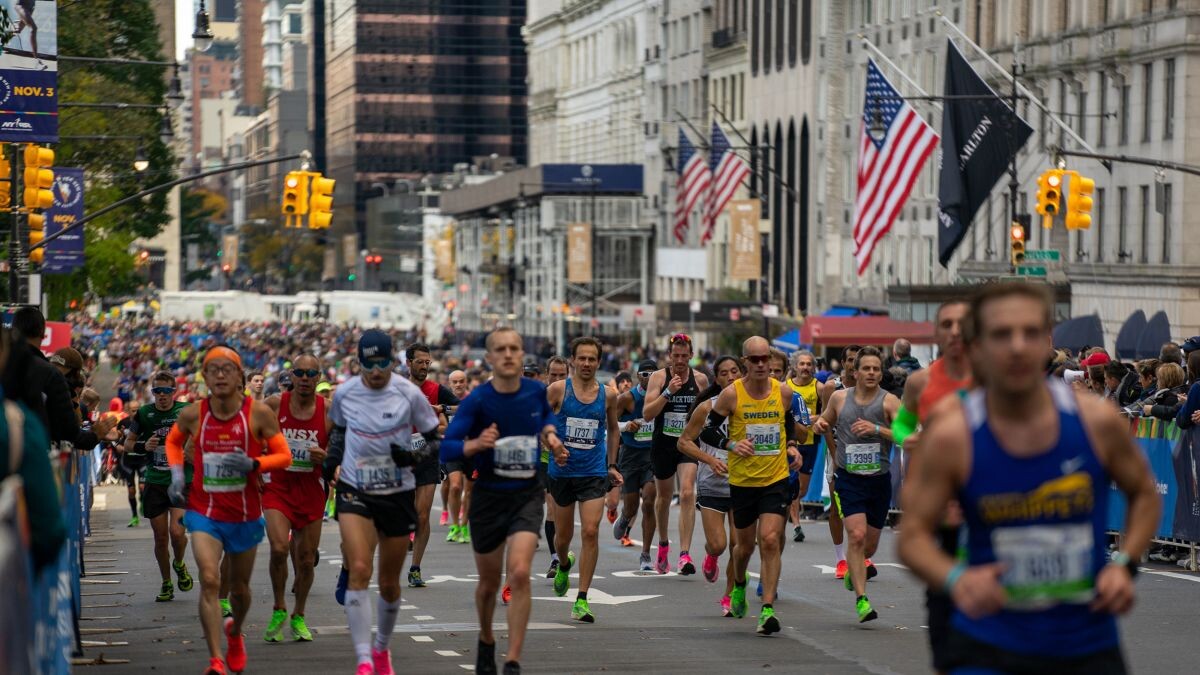
The term non-binary is used by people who do not identify as male or female.
Many road races have started offering non-binary runner categories in recent years; the TCS Toronto Waterfront Marathon was one of the first major races in North America to offer a non-binary category in 2019. At the 2022 race, 24 non-binary runners ran the half-marathon, while five completed the marathon.
The Boston and London Marathons announced in September that their races will include non-binary categories for the first time in 2023.
(10/20/2022) ⚡AMPby Marley Dickinson
TCS New York City Marathon
The first New York City Marathon, organized in 1970 by Fred Lebow and Vince Chiappetta, was held entirely in Central Park. Of 127 entrants, only 55 men finished; the sole female entrant dropped out due to illness. Winners were given inexpensive wristwatches and recycled baseball and bowling trophies. The entry fee was $1 and the total event budget...
more...Lelisa Desisa, Vicoty Chepngeno, Molly Seidel, Molly Huddle Running 2022 BAA Half
The Boston Athletic Association today announced the professional field for the 2022 B.A.A. Half Marathon, presented by Dana-Farber Cancer Institute and the Jimmy Fund, to be held on Sunday, November 13.
Two-time Boston Marathon champions Lelisa Desisa and Daniel Romanchuk return, while 2021 Olympic Marathon bronze medalist Molly Seidel and two-time Olympian Molly Huddle lead the American charge. Seven women who’ve run under 1:07:30 and nine men with lifetime bests under 1:01:30 will compete on the roads of Boston.
The B.A.A. Half Marathon will be run for the first time in-person since 2019, beginning and finishing in Boston’s Franklin Park. The event begins at 8:00 a.m. with a field of nearly 9,000 participants. Open registration is already sold out, however entries remain available through presenting sponsor Dana-Farber Cancer Institute and the Jimmy Fund.
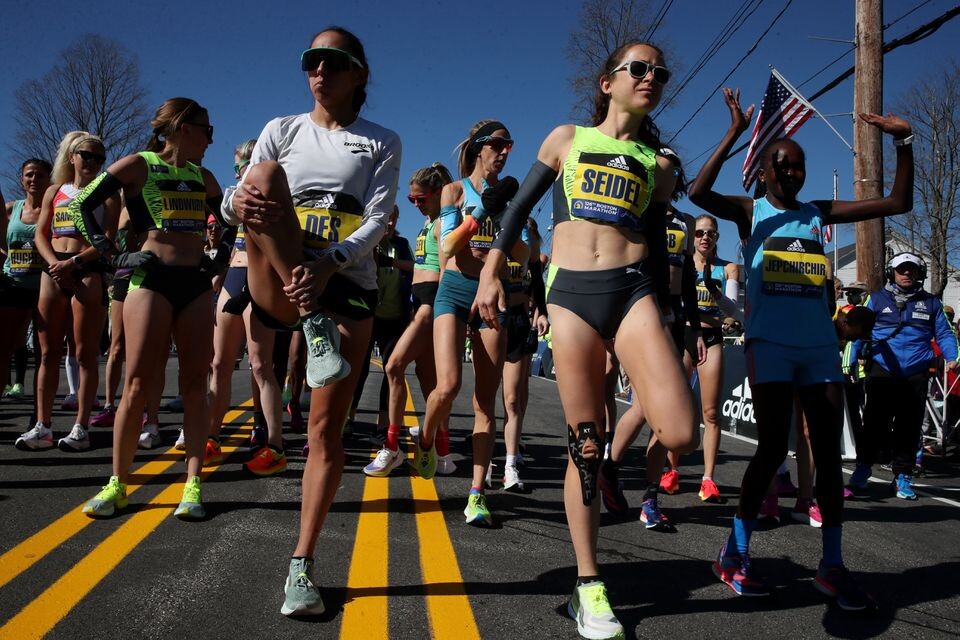
Seidel, a former Boston resident, will make her B.A.A. Half Marathon debut as she returns to racing. The 2:24:42 marathoner and former NCAA champion at Notre Dame finished fifth at the 2018 B.A.A. 5K and 10th at the 2019 B.A.A. 10K.
Huddle, a 28-time USA national champion, will race at the B.A.A. Half eight years after placing third in 2014. B.A.A. High Performance team member Erika Kemp –a two-time USA national champion at 20K and 15K— will also compete among the strong American field, fresh off a win at the Boston 10K for Women on October 8.
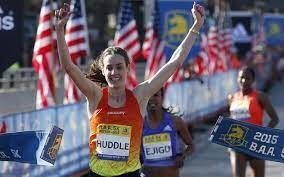
“The B.A.A. Half Marathon is always a fun fall event, and I’m eager to race again through Boston with hopes of returning to the podium,” said Huddle.
The international women’s contingent is led by 2022 Houston Half Marathon winner Vicoty Chepngeno of Kenya, who owns the fastest lifetime best (1:05:03), though is followed closely by Ethiopia’s Bosena Mulatie (1:05:46). Mulatie was eighth at the 2022 World Athletics Championships 10,000m in Oregon over the summer. Other athletes with world championships experience include Kenya’s Margaret Wangari and Cynthia Limo, and British duo Jess Piasecki and Calli Thackery. Wangari earned a silver medal at the 2022 Commonwealth Games Marathon, and placed fifth at the B.A.A. Half Marathon in 2018. Limo is the 2016 World Half Marathon Championships silver medalist.
On the men’s side, Desisa, winner of the Boston Marathon in 2013 and 2015, owns a pair of B.A.A. Half Marathon titles from 2013 and 2014, as well as the event record (1:00:34). The Ethiopian fan favorite is also the event record holder (1:00:34), and considers Boston his second home.
“Boston holds a special place in my heart and I’m excited to return again to race in the B.A.A. Half Marathon, where I have had great success before,” said Desisa. “I hope to run very well again!”
Kenyans Josphat Tanui (59:22) and Shadrack Kimining (59:27) have the two fastest personal bests in the field, which includes five men who have run under one hour for the half marathon. Geoffrey Koech, the 2022 Cardiff Half winner, and Ethiopian Tsegay Kidanu, 11th at the Copenhagen Half Marathon, are competing, as is Morocco’s Zouhair Talbi, the third-place finisher at the 2022 B.A.A. 5K. The top American entrant is Teshome Mekonen, who formerly represented Ethiopia internationally, has run 1:00:02, and won this year’s Brooklyn Half.
Daniel Romanchuk, two-time Boston Marathon wheelchair division champion and 2019 B.A.A. 10K winner, looks to win his first B.A.A. Half title, joined by Boston Marathon top-20 finishers Hermin Garic, Dustin Stallberg and Velera Jacob Allen. Jenna Fesemyer and Yen Hoang, both 2021 Paralympians for Team USA, will race as well. Fesemyer won this year’s B.A.A. 5K.
“I’m very much looking forward to racing the B.A.A. Half Marathon for the first time,” said Romanchuk, who finished runner-up at the Chicago Marathon on October 9. “I’ve raced the Boston Marathon, B.A.A. 5K, and B.A.A. 10K, and am excited to add the Half Marathon. I can’t wait to be back in Boston.”
For the first time, the B.A.A. Half Marathon course will be World Para Athletics certified, eligible for world or national records to be set by Para athletes. Marko Cheseto Lemtukei (T62), Brian Reynolds (T62), and Jacky Hunt-Broersma (T64) each have Boston Marathon Para Athletics Divisions experience and are eligible for prize money.
(10/19/2022) ⚡AMPB.A.A. Half Marathon
Dana-Farber and the Jimmy Fund have partnered with the B.A.A. in the Half Marathon for 13 years as the race’s presenting sponsor. Through this relationship, team members have collectively raised more than $5 million to support groundbreaking cancer research, and enabled Dana-Farber scientists and clinicians to positively impact the lives of cancer patients around the world. Dana-Farber runners often participate...
more...Yoga for runners: sharpen stamina and soothe sore muscles
Sore legs after a hard speed session or challenging training week? Runners of all abilities can benefit from adding yoga to their regular routines, and you don’t need to tackle a complicated series of poses. Spending a few minutes in a single pose or a gentle sequence of postures is enough to reap rewards.
Studies show that athletes who complement their training regime with yoga experience greater flexibility, reduced muscle tension, maximized range of motion, and boosted mental focus and stamina—to name a few.
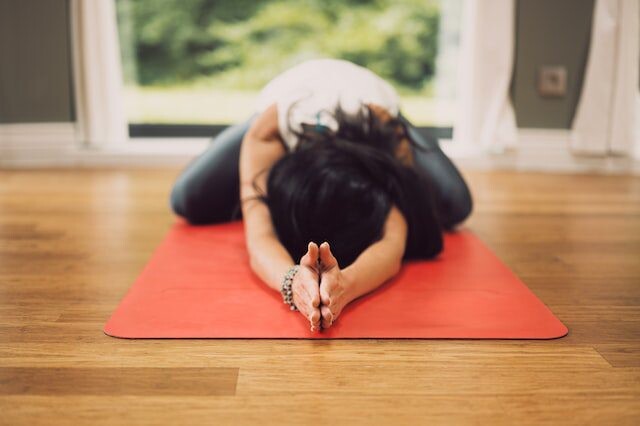
We have one pose for you to sink into tonight (or right now)–and if you’re hungry for more, a simple flow tailored just for runners by Adriene Mishler. Mishler offers slow-paced, accessible yoga classes that give everyone, from beginners to experienced yogis, the chance to connect with their bodies and minds from their living rooms. Add some yoga to your weekend post-long run–you’ll sleep like a baby and wake up ready to run again.
Malasana (squat) pose

Sometimes called garland pose, a deep squat like malasana helps release tension in your inner thighs, glutes and lower legs.
This pose is easily modified for any level of flexibility. Begin by standing with the feet hip-width apart. Squat down and bring your arms in front of you, to the floor, or rest them on your thighs. If you’re having trouble, use a yoga block or stack of books under your bum or a folded blanket under your heels. If your heels are off the floor, another option is to widen the distance between your feet.
Yoga for runners with Adriene
Mishler offers gently-paced, accessible yoga classes that give everyone, from beginners to experienced yogis, the chance to connect with their bodies and minds from their living rooms. Add some yoga to your weekend post-long run and you’ll sleep like a baby and wake ready to run again.
(10/19/2022) ⚡AMPby Keeley Milne
McColgan 10km record ruled out due to Great Scottish Run short course
British and European record of 30:18 set in Glasgow will no longer stand after Great Scottish Run course is found to be 150 meters short.
Runners who tackled 10km in the Great Scottish Run on October 2 have found that their times are invalid after the course was discovered to be 150m short. These include Eilish McColgan, who set a British record of 30:18.
The apologetic organizers say runners who did the event in Glasgow this month can have a 10% discount on their entry to the event next year.
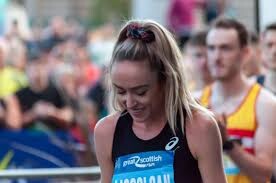
It was McColgan’s final race of a busy and successful 2022 season. She is now on holiday in Egypt and was told of the news by Great Scottish Run organizers – the Great Run Company – before their chief executive, Paul Foster, put out a statement saying: “We were recently made aware of a discrepancy with the 10km course at this year’s Great Scottish Run. Following an internal investigation, we have established it was 150m short.
“The shortfall in the distance was wholly due to human error. An area of the course was not laid out in line with the previously agreed plans.
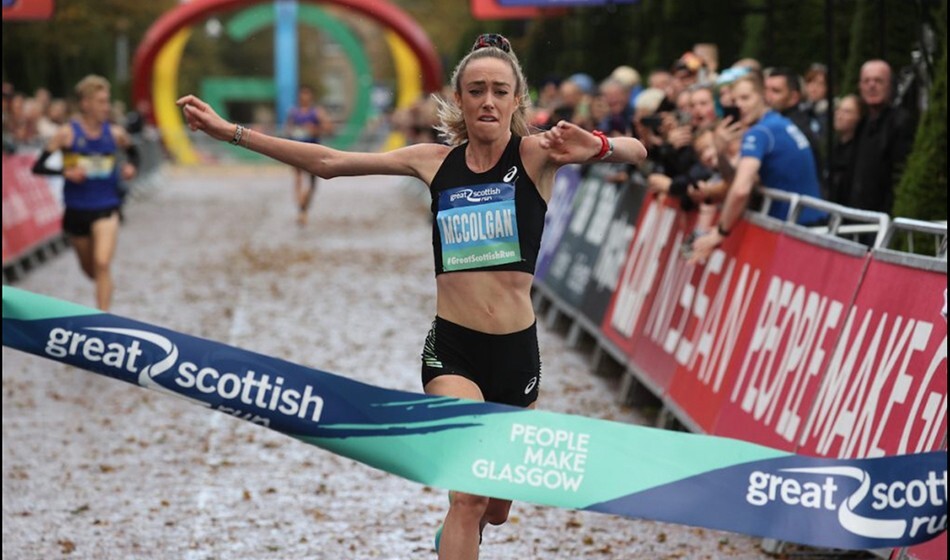
“This error had a marginal knock on to the half-marathon but it was within tolerance and the course on the day was valid.”
At the same Great Scottish Run event in 2016 Callum Hawkins’ Scottish half-marathon record of 60:24 was also ruled out after the route was found to be 149.7m short of the full 13.1-mile distance.
On this month’s event, Foster continued: “We are extremely disappointed that this happened at the 10km on what was an incredibly positive return to the city for the Great Scottish Run following the pandemic.
“This error invalidates Eilish McColgan’s European and British 10km records that were believed to have been set that day. We have been in touch with Eilish directly and to apologize.
“We will be reviewing our internal processes to ensure we cannot make this mistake again.
“We know we’ve let out customers down on this occasion. There are no excuses for this happening and we’re very sorry. We’ll be in touch with everyone who took part in the 10km offering a 10% discount into the 2023 event.”
(10/19/2022) ⚡AMPby Jason Henderson
Great Scottish Run
Experience the inspiring atmosphere of Scotland’s biggest running event and achieve something great this autumn. This spectacular weekend of running is a celebration of sport that is suitable for the whole family and is televised live on the BBC. The Bank of Scotland Great Scottish Run half marathon welcomes thousands of runners to the city of Glasgow every year. The...
more...Build your running community with Olympian Kara Goucher’s tips
Two-time American Olympian, NBC sports analyst and author Kara Goucher says that running can be a powerful vehicle for bonding. In her book Strong: A Runner’s Guide to Boosting Confidence, Goucher shares some strategies to elevate your ties to your running community, whether you’re a new runner or a seasoned veteran.
Even if you lace up and head out alone on most runs, you’re probably connected to some like-minded athletes in some form. You may not be maximizing these relationships to their fullest potential: studies have shown that connecting with others even in small ways increases self-esteem, helps to prevent burnout, and strengthens your ability to handle life challenges, injuries and setbacks.
Here are Goucher’s strategies to create strong, uplifting bonds with your fellow runners.

Find accountability partners to run with
“A good running partner can help you make wise training decisions and provide the right amount of push,” says Goucher. While connecting doesn’t come easily to everyone, Goucher suggests being willing to ask someone in your network to help hold you accountable. If you haven’t found a network yet, try searching online. “I am constantly inspired by the amazing women who I meet and connect with online,” Goucher adds. She offers her own Instagram account as a starting point.
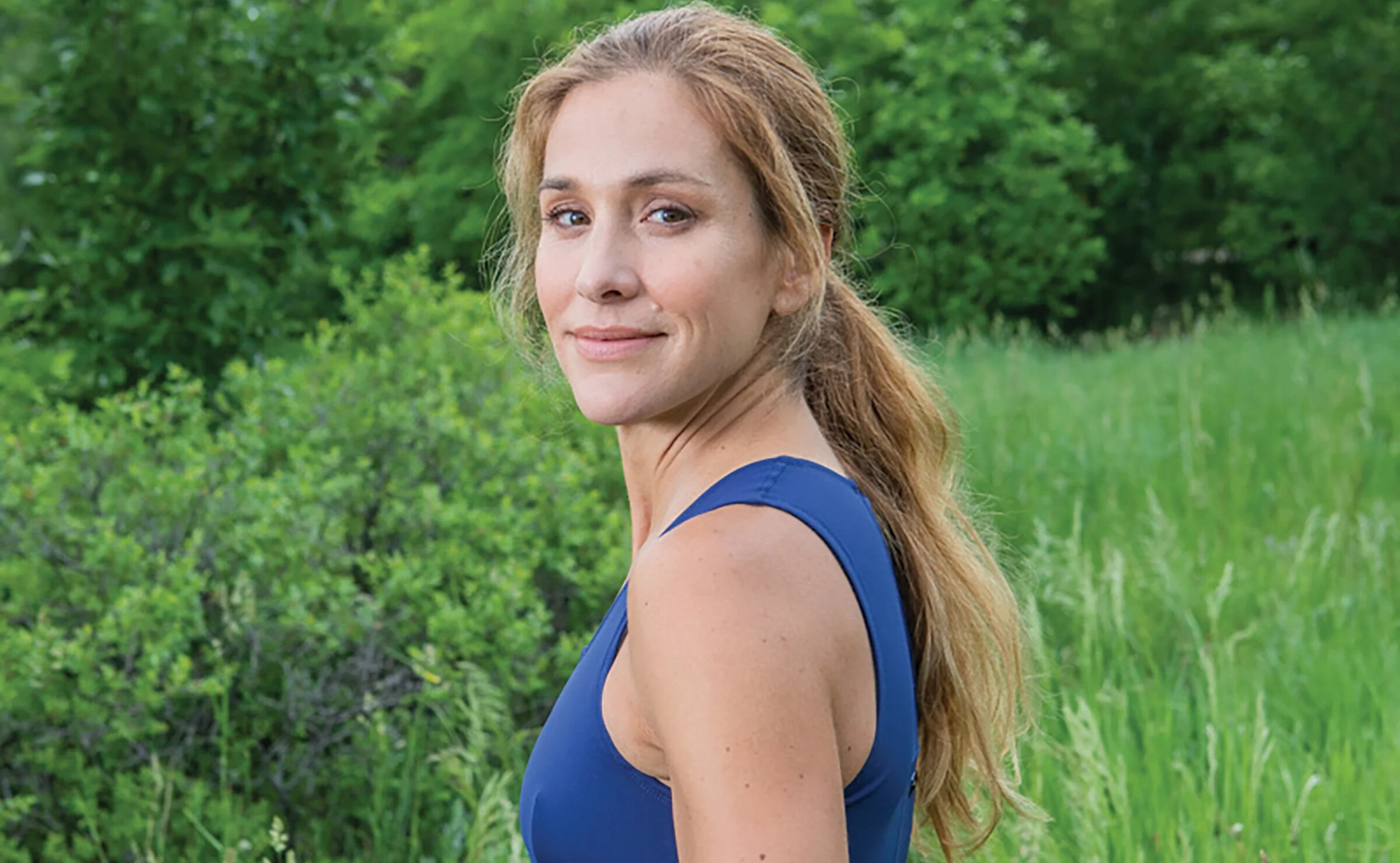
Spend time with runners who inspire
Pinpoint the people in your life who support, inspire and influence your running. Nurturing connections with your running family can create bonds that endure over decades. “Spend most of your time and energy with those who make you feel good about yourself,” says Goucher. “The confidence I have gained through my supportive social connections has contributed directly to my success,” she adds. Invest in others and their success, and the support you give will come back to you.
Help other athletes whenever you can
Social connections can be undemanding and still be impactful. “A smile, a word of encouragement, or a simple ‘you’re doing great!” during a race goes a long way,” says Goucher. Seek out opportunities to show support at races or charity events you care about. Spending time with a younger or less experienced athlete can do wonders for both of your confidence. “Social connections cause chemical changes in your brain, providing a hit of positive emotion and confidence,” Goucher adds. The common experience of running, with both highs and lows, is powerful.
(10/19/2022) ⚡AMPby Keeley Milne
Injury prevention for marathon runners
The last thing a runner wants is to be struck by an injury, bringing those stress-relieving runs to a halt. Here are some guidelines to help you stay injury-free while training for a marathon. From wearing the right kit, to stretching, hydration, and even ice baths, check out this handy guide for keeping running injuries at bay.
PREVENTING INJURIES WHILE RUNNING

1. Mix the terrain
Road running can lead to injuries because of the repetitive nature of your footstrike on a flat surface. An imbalance in your muscle strength or leg alignment increases the risk of picking up a repetitive strain injury from long runs. Try a few runs off road for a softer, more undulating surface.

2. Get the right shoes
Make sure you wear the correct running shoes for your gait and the terrain you run on. Find out about our Natural Gait Analysis here.
3. Wear the right clothing
Remember to wear appropriate running clothing for the temperature – warm muscles are less likely to pull.
4. Try compression
Compression clothing that supports tired or tight muscles might also be a useful investment.
5. Electrolytes
Don't forget to look after your hydration and energy levels using energy gels and energy drinks. Muscles can cramp through an imbalance of tissue salts such as magnesium.
6. Posture
Try to be aware of your posture and gait, especially when you are tired. Overtraining is a classic reason for picking up an injury.More on Running Form for a Pain-Free Marathon »
7. Enjoy!
Remember running brings joy into your life and builds you up - it shouldn't break you down!
PREVENTING INJURIES BEFORE AND AFTER RUNNING
There are some simple precautions you can take before and after a run to keep your body in balance.
1. Hydration
Before setting off, make sure you are hydrated. If you are hungry take a moment for a light snack or energy drink.
2. Stretching
Do some mobilisation exercises and warm up to loosen the muscles beforehand. Do a cool-down, and stretch your muscles afterwards.Videos: Running Injury Prevention & Care »
3. Trigger Point Therapy
One great tool that has emerged is trigger point therapy. You activate muscles by massaging the neural centres relating to those muscles. You can "switch on" the main muscles for running: glutes, hamstrings and quads, in this way. If the muscles are firing up, it is far less likely you will injure the smaller muscle groups like calves and shins.
4. Chill Out
After a run, dowse your legs in cold water. If you are really brave, have a dip in an ice bath. This will considerably reduce muscle stiffness.
PREVENTING INJURIES BETWEEN RUNS
This is where you can really do some positive work to support your running life and prevent injuries.
1. Cross-Training
An excellent way to strengthen your body and give variety to your mind is cross-training: cycling, swimming and working machines in the gym. This is an effective way of increasing your heart rate and endurance, without impact damage to muscles.More on Strength & Cross Training »
2. Core Strength
Because of our sedentary lifestyles, often core muscles become lazy and will benefit from doing pilates and core strength circuits. Even taking care of your posture at your desk can help. Yoga gives strength and suppleness and is brilliant for easing out sore muscles and joints.Videos: Core Strength for Runners »
3. Get a Massage or Physio Checkup
Just for maintenance, it is worth visiting a practitioner such as a physio, osteopath or sports masseur regularly.
4. Running Workshops
For inspiration and for progress in your running technique, you could try a running workshop at Run and Become.
5. Look Around
There are many different schools of thought about running; search around and see what inspires and motivates you, then use that to strengthen your mind, emotions and body to prevent an injury.
How do you stay pain-free during a marathon?
If we are being realistic, this is obviously not possible. However, you can contribute to keeping injuries at bay increasing your mileage gradually by 10% a week and having an easy week every 4 weeks. Another thing that will help is to improve your running technique. Runners often get injuries from over-striding and heel-striking, as this increases the impact on the body. More about Running Form for a Pain-Free Marathon »
What injuries do marathon runners get?
Marathon runners often suffer from muscle injuries in the lower legs (as do many other runners). This is not surprising when we consider that running is a sport in which our body is exposed to an impact of up to 3-4 times our own body weight. Such injuries are usually stress fractures, plantar fasciitis, shin splints, hamstrings or ITB problems.More about common running injuries »
Can you run a marathon when injured?
As always, it depends on the severity of the injury or “niggle”. If it looks like a serious injury and your full range of motion or speed is compromised, or your body hurts in a particular area when running, you should consult with a professional. If it just seems like a minor “niggle” and race day is very close, this may not be possible, and you may need to make a decision yourself. As long as there is no risk of worsening the injury, rest in the final few days and then consider having to do your own “runner's first aid” for race day.
(10/18/2022) ⚡AMPNo reprieve as two more Kenyans suspended for doping
Athletes Integrity Unit (AIU), the body formed by World Athletics to combat doping in the sport, Tuesday provisionally suspended Ibrahim Mukunga Wachira and Kenneth Kiprop Renju for the use of banned substances.
Mukunga, who won a half marathon race in Estonia in socks in 2017, has been suspended for the use of prohibited Norandrosterone, while the national 10,000m champion Renju got nabbed for the use of Methasterone.
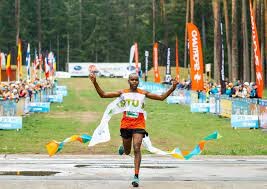
Renju is the most successful of the duo, besides winning the national title on April 27 this year, he also won Lille 10km race on March 27 in France, Prague Half Marathon on April 2 in the Czech Republic and Lisbon Half Marathon on May 22 in Portugal.
He started the season with a third place finish at Ras Al Khaimah Half Marathon on February 19 in the United Arab Emirates.
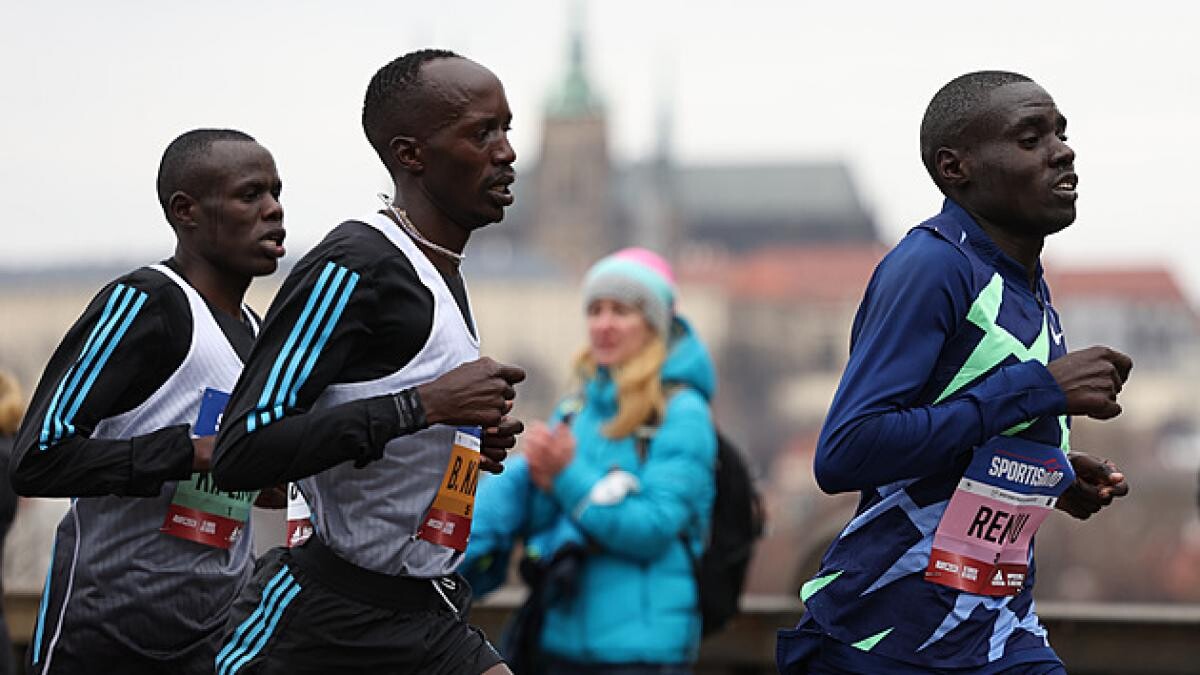
Mukunga and Renju’s ban comes only four days after the 2021 Boston Marathon champion, Diana Kipyokei and her compatriot Betty Wilson Lempus were suspended for using banned substances.
Kipyokei and Lempus’ suspension came only three days after Kenyan marathon runners Mark Kangogo and Philemon Kacheran were banned for doping.
Kacheran, who was been banned for three years on Monday last week, was hounded out from Team Kenya that was already in Birmingham for the Commonwealth Games held July 28 to August 8 in the British second capital city.
Kacheran’s ban came six days after compatriot Lawrence Cherono, the 2019 Chicago and Boston marathon champion, was prevented from competing in the World Athletics Championships in Oregon, also for a doping offence.
Besides Kacheran, three other Kenyans were banned from taking part at the Commonwealth Games due to doping.
They were female marathoners Stella Barsosio, Changwony and 1,500m runner Kumari Taki.
Close to 30 Kenyans athletes have been flagged down for various doping offences. The list could grow since more cases that are yet to be revealed are at the Anti-Doping Agency of Kenya (ADAK).
In 2016, the country was placed in category A of the World Anti-Doping Agency’s (WADA) compliance watch list.
(10/18/2022) ⚡AMPby Ayumba Ayodi
Four Stretches to keep your muscles loose on race day
Every serious runner knows that stretching is a huge key to both performance and keeping the body healthy. Just a little bit of stretching can go a long way toward accomplishing your goals but can it also make you a better runner? OhioHealth Athletic Trainer Amy Harrison has some tips and tools on how to properly stretch your body so you can flex your muscles on race day. Dynamic stretches help prepare the body for exercise, while static stretches and foam rolling improve flexibility of muscles and joints.
1.- Hamstring Stretch

Keeping your hamstrings stretched does more than prevent injuries to this important muscle. It can also help improve posture and increase your flight phase, which occurs while both feet are off the ground while running. “If your hamstrings are tight you are not able to fully extend your knee during the swing phase of running, which decreases distance traveled during your flight phase,” says Harrison. To help prevent serious injuries, perform this stretch by keeping your front knee straight and your hips and shoulders square. Lean forward at the hip until you feel stretching at the back of the leg.
2.- Hip Flexor Stretch

Hip flexor tightness is a common ailment, generally caused by prolonged sitting. For runners with this issue, injuries such as back or hip pain can result from the tightness which could limit the ability to propel forward during a run. To perform this stretch, start in a lunge position and tighten glutes on the back leg while tilting your hip underneath you. Harrison says, “Keep your chest up and tummy tight. You should already feel a stretch but to increase the stretch push your back hip forward slightly.” Remember to take regular breaks from sitting throughout the day. Taking a break to stand up, stretch, and walk can help prevent tightness.
3.-Piriformis Stretch
Tightness in the piriformis muscle can lead to piriformis syndrome or sciatica, both of which can cause considerable pain and in some instances, prevent running altogether. Harrison says that regular stretching of the piriformis can prevent these injuries from occurring. “Start by laying on your back with your legs in a figure four,” says Harrison. “Lift your legs into the air, pulling the bottom leg toward you and pushing the top leg away from you at the knee.” Strengthening your glutes can also help prevent overuse and tightness of the piriformis muscles.
4.- Calf Stretch
Keeping calves loose and limber can prevent some serious aches and pains in runners. Stretching these muscles doesn’t just prevent calf pain. Tight calves can lead to Achilles Tendonitis, Plantar Facsitis and shin pain. When your calves are tight, you tend to push yourself up, rather than forward, slowing you down and increasing impact with running. A basic stretch can help runners avoid injury and continue training for a new personal best. “Place one leg behind you and lunge into the front leg while keeping the knee straight and heel down,” says Harrison.
Adding just a couple of minutes to your running routine to perform these simple stretches could improve your overall fitness. Improved fitness could be the key to unlocking your personal best!
(10/18/2022) ⚡AMPby Ohio Health
Reykjavik opens registration for non-binary athletes
Participants can now select female, male or non-binary in the entry system for all Reykjavik Sport Association (RSA) running events.
Registration opens in the beginning of November in Islandsbanki Reykjavik Marathon, Laugavegur Ultra Marathon and the Suzuki Midnight Sun Run.
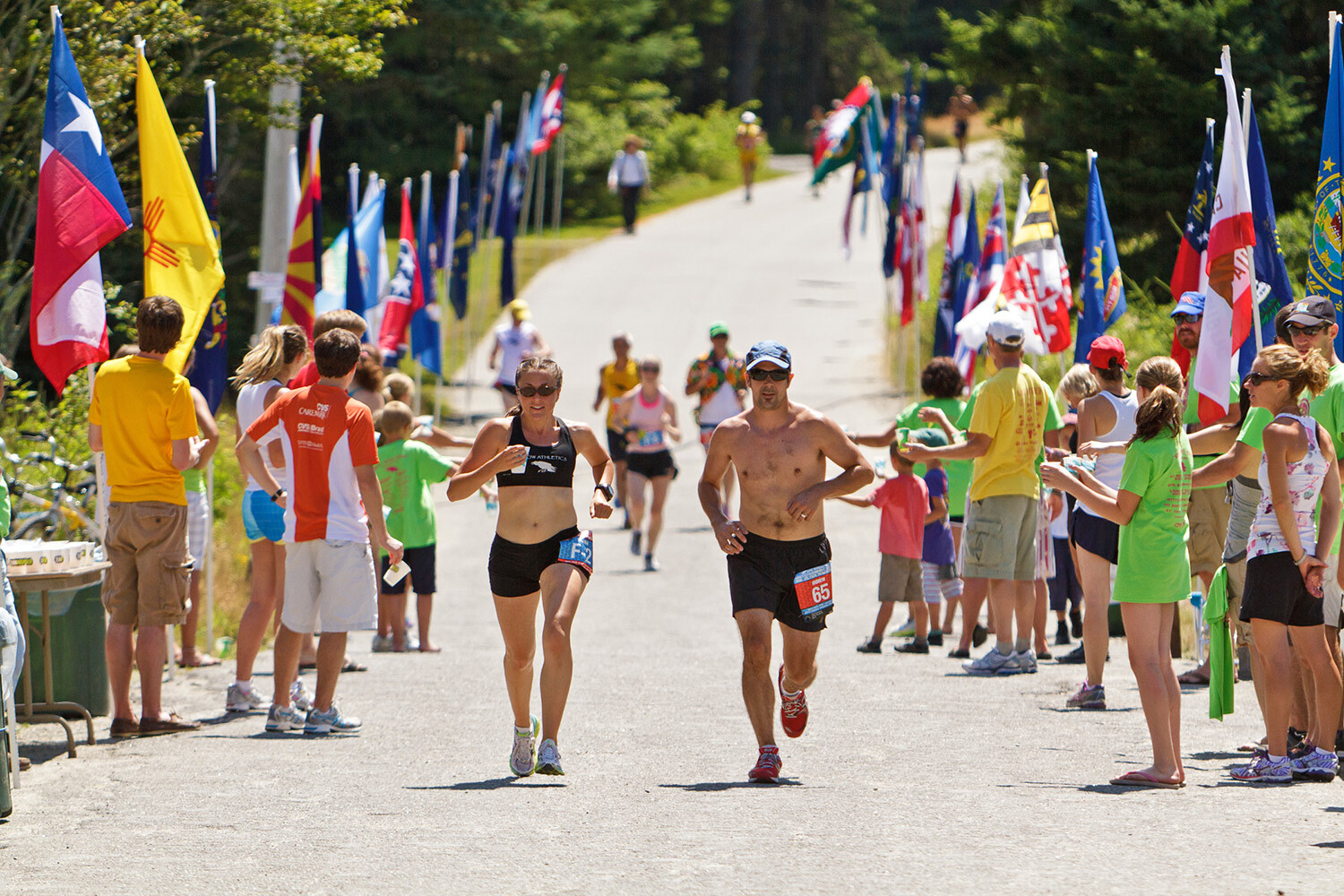
The three gender options (female, male and non-binary) will be offered to all participants registering for the Reykjavik Sport Association events. For the first time awards will be given for three categories in the running events.

“We are excited to welcome everybody in our events, regardless of gender, gender identity and gender characteristics. We welcome everybody to our running events,” says Hrefna Hlín Sveinbjörnsdóttir event manager.
(10/18/2022) ⚡AMPby AIMS
Islandsbanki Reykjavik Marathon
In 1983 two young entrepreneurs working at a travel agency were looking for an opportunity to interest more tourists in visiting Iceland when they came up with the idea of starting an international road race in Reykjavik. A year later the first run was held with 214 participants. These were natives and runners from seven other nations. Since then the...
more...Runner with former doping ban wins Detroit Free Press Marathon under a new name
After much uncertainty in the lead-up to the race due to ArriveCan guidelines, the Detroit Free Press Marathon welcomed back thousands of runners on Sunday morning. Mary Beasley of Gardena, Calif., won the race in 2:42:25, seven years after she served a two-year doping ban under her previous name, Mary Akor.
For her efforts, Beasley took home a prize of USD $6,000, which also included a bonus for her winning the masters division.
Beasley, born in Nigeria, won the Vancouver Marathon in 2004, 2008 and 2009 and finished second in 2012. In 2013 she tested positive for clenbuterol, a bronchodilator used to open the airway for easier breathing and increase fat burn, at the Gobernador Marathon in Mexico and accepted a two-year ban from the U.S. Anti-Doping Agency (USADA). Former notable athletes 2010 Tour de France winner Alberto Contador and world middleweight champion boxer Canelo Alvarez both received bans for using clenbuterol.
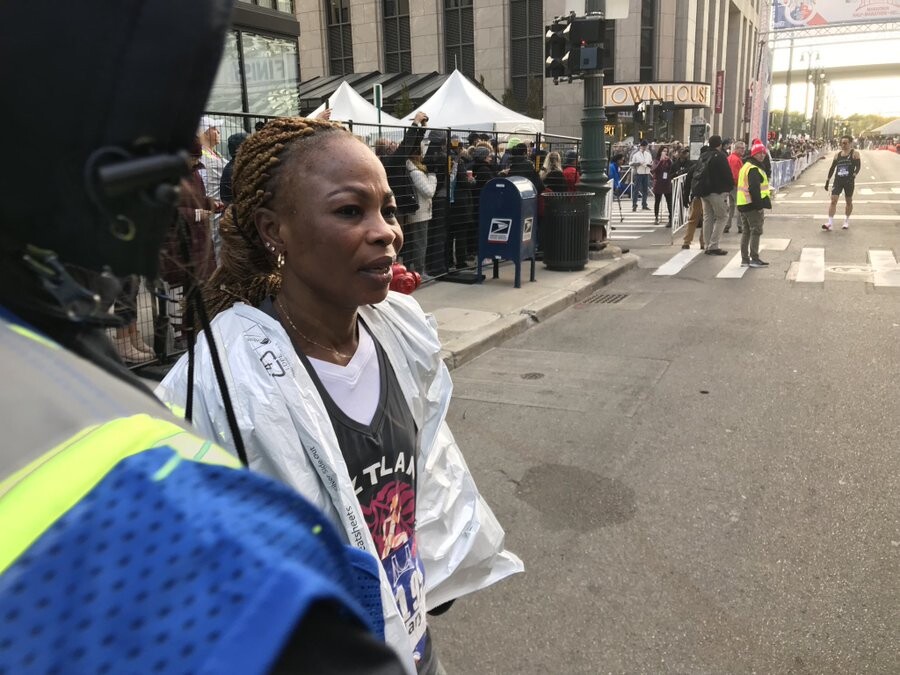
She gained U.S. citizenship in 2004 and represented the United States at the world championships in the marathon in 2005 and 2007. In 2019, at the Austin Marathon, she was also disqualified, under the name Akor, after trying to prevent a runner from passing her.
After winning the 45th annual Free Press Marathon, she said it was a special victory, and it made her feel right at home. Despite winning this marathon in 2008, Beasley did not recall previously visiting the city or winning the marathon.
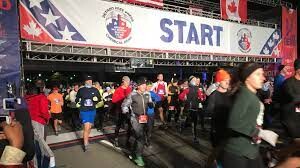
“I’m very competitive,” she told reporters. “I’ve won a lot of marathons, but this is a major one I’ve won this year.”
Since serving her ban in 2015, Beasley, 45, avoids the major marathons to run smaller races that hand out prize money and do not drug-test the top finishers. Before changing her name earlier this year, she collected prize money at both the Orange County Half-Marathon and the Mexicali Half-Marathon, finishing second in both races.
Many major marathons like TCS Toronto Waterfront Marathon prevent runners with a past doping ban from entering the elite field. But there is no rule stating they can’t enter the race in the open field, meaning they would have to start behind the elites, and whether they are eligible for prize money can depend on the race.
(10/18/2022) ⚡AMPby Marley Dickinson
Detroit Free Press Marathon
Our marathon course offers international appeal, traversing both downtown Detroit and Windsor, Ontario, crossing the border at both the Ambassador Bridge and Detroit-Windsor Tunnel. You will run through historic neighborhoods, around beautiful Belle Isle, and along the spectacular RiverWalk. ...
more...Running couple Lily Partridge and Ben Connor take wins at the Great South Run
Pro long-distance runner Lily Partridge and partner Ben Connor, an Olympic marathoner, both took victory in their respective women's and men's races at the Great South Run on Sunday.
Partridge, who was the first British woman at the London Marathon in 2018, crossed the finish line of the 10-miler in 54:29, while Connor won the men's race in 47:19.
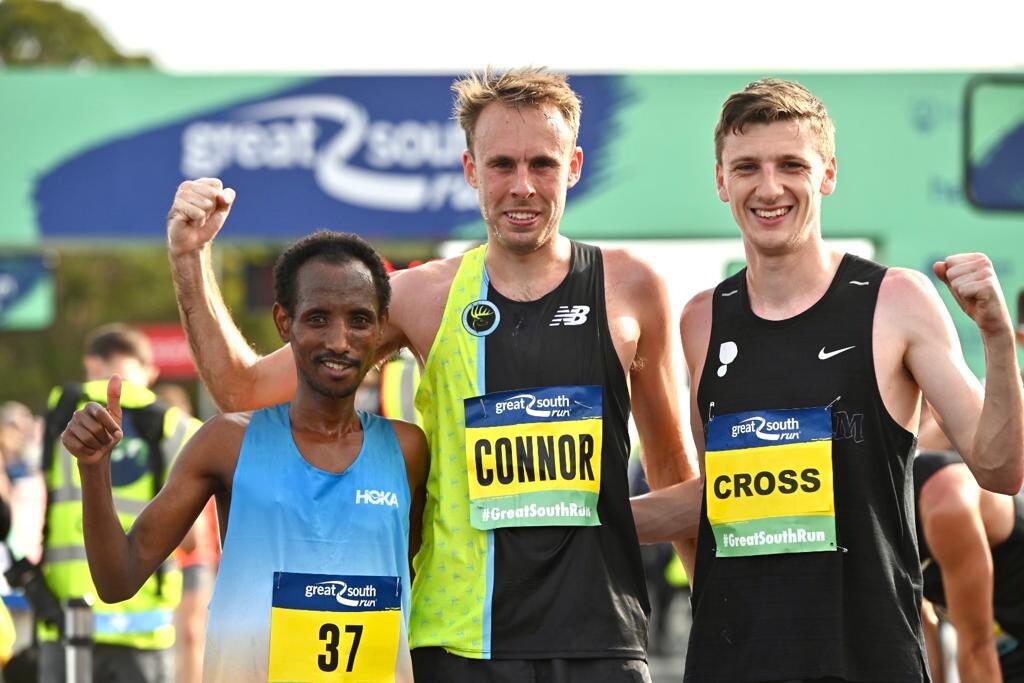
Welsh athlete Natasha Cockram was just behind Partridge in 54:35, while Steph Twell, who has competed at three Olympics including the marathon in Tokyo 2020, took third in 54:51.
Afterwards, Partridge said: 'It was a great race, the three of us were together up to about eight miles. I hit the front at about six miles.'
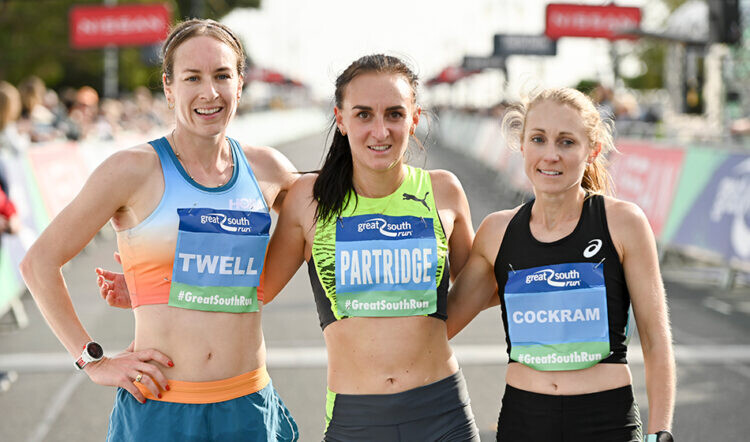
'It wasn’t really planned, so I thought I’d just try and make it a hard run race. It was a good opportunity for me to put myself under pressure and gain some confidence and it really paid off.'
In the men's race, Ellis Cross, the Aldershot, Farnham & District runner who beat Sir Mo Farah at the London Vitality 10,000 earlier this year, came in second in 47:32, while Birchfield Harrier’s Omar Ahmed took third in 47:49.
It's Connor's third time running the Great South Run, having finished third and then second in the past. Afterwards, the Tokyo 2020 marathoner said: 'I’m really pleased. It’s my thirtieth birthday tomorrow, so I’m off to Barcelona tonight and will be celebrating the win.'
In total, 20,000 people took part in the event in Portsmouth on a gloriously sunny day.
(10/17/2022) ⚡AMPby Jenny Bozon
Great South Run
The Great South Run is an annual 10 miles (16.09 km) road running race which takes place in Portsmouth, United Kingdom providing an intermediate distance between the ten kilometre and the half marathon runs. Launched in 1990, it is part of the Great Run series created by former British athlete Brendan Foster. It was originally held in Southampton, but the...
more...Mokoka retains title, Dinke breaks record in Cape Town
Defending champion Stephen Mokoka claimed a third win in the Sanlam Cape Town Marathon, a World Athletics Elite Label road race, while Meseret Dinke broke the race record to win the women’s event on Sunday (16).
Multiple South African champion Mokoka broke the tape in 2:09:59, two seconds faster than his winning 2:10:01 last year and the fourth-fastest winning time in the race’s history. Second place went to Ethiopian Derseh Kindie in 2:11:27, with his compatriot Dagnachew Adere outsprinting Kenya’s Raymond Kipchumba Choge to take third place, 2:11:55 to 2:11:56.
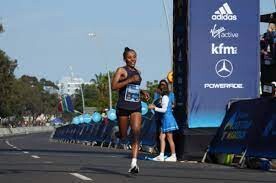
“This was a tough, tough course,” said Mokoka. “Normally at 25km you start enjoying a marathon, but at 28km today, we climbed that hill in District Six and it got really hard for a while, but overall I really enjoyed the race.”
Mokoka ran a world 50km record of 2:40:13 in Gqeberha in March, a record that CJ Albertson took to 2:38:43 eight days ago. Asked what his Cape Town Marathon win means, Mokoka added: “I am delighted to win in Cape Town for a third time. I have won races overseas, too, but this is still special. Records are meant to be broken, but titles stay forever, and this win means more to me than just running a fast time. It’s also about the memories of our runs.”
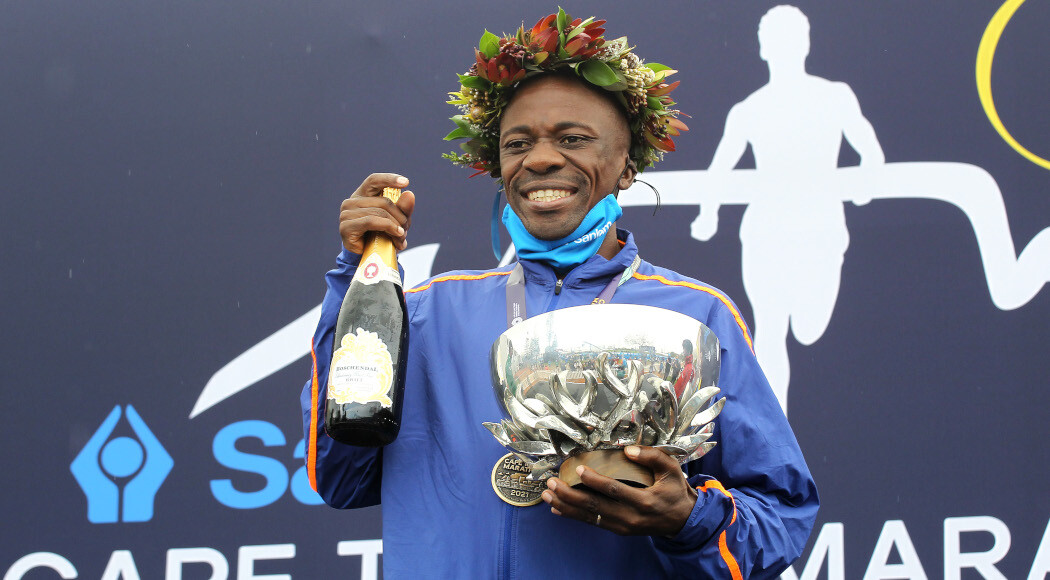
In the women’s race, Dinke of Ethiopia took top honours in 2:24:04, smashing the 2:25:44 event record run in 2021 by Lydia Simiyu and also improving her personal best of 2:25:12. Second over the line was Tecla Kirongo in 2:27:57, also setting a PB, with her Kenyan compatriot Judith Cherono taking third in 2:30:34.
“I enjoyed the race thoroughly, but unfortunately I had to do it by myself,” said Dinke. “When you run by yourself it is so difficult to control your pacing, but I managed. If everything had been perfect, I had hoped to run a 2:20 or 2:21. The course was a little tougher than other international races, but I was running within myself, and felt confident that I could keep a consistent pace until the end.”
Leading results
Women
1 Meseret Dinke (ETH) 2:24:04
2 Tecla Kirongo (KEN) 2:27:57
3 Judith Cherono (KEN) 2:30:34
4 Zinashwork Yenew (ETH) 2:34:03
5 Webalem Bazanew (ETH) 2:34:24
Men
1 Stephen Mokoka (RSA) 2:09:59
2 Derseh Kindie (ETH) 2:11:27
3 Dagnachew Adera (ETH) 2:11:55
4 Raymond Kipchumba Choge (KEN) 2:11:56
5 Samuel Moloi (RSA) 2:14:39.
(10/17/2022) ⚡AMPby World Athletics
Cape Town Marathon
The Sanlam Cape Town Marathon is a City Marathon held in Cape Town, South Africa, which is sponsored by Sanlam, the City of Cape Town and Vital Health Foods. The marathon is held on a fast and flat course, starting and finishing in Green Point, near the Cape Town Stadium. Prior to existing in its current format, the Cape Town...
more...Commonwealth 10,000m silver medalist Irene Cheptai took the honors at the Vedanta Delhi Half Marathon
Cheptai claims Vedanta Half Marathon title a World Athletics Elite Label Race when she crossed the line in a new personal best time of 1:06:42 on Sunday.
By contrast, the women’s race was a one-woman show from the halfway mark. A group of 10 women went through 5km in 15:40 and, despite a slowing down the pace over the next five kilometers, there were still six together at 10km, which they covered in 31:42.
However, Cheptai made a decisive move just after 12 kilometers and was never headed before reducing her personal best by one second.
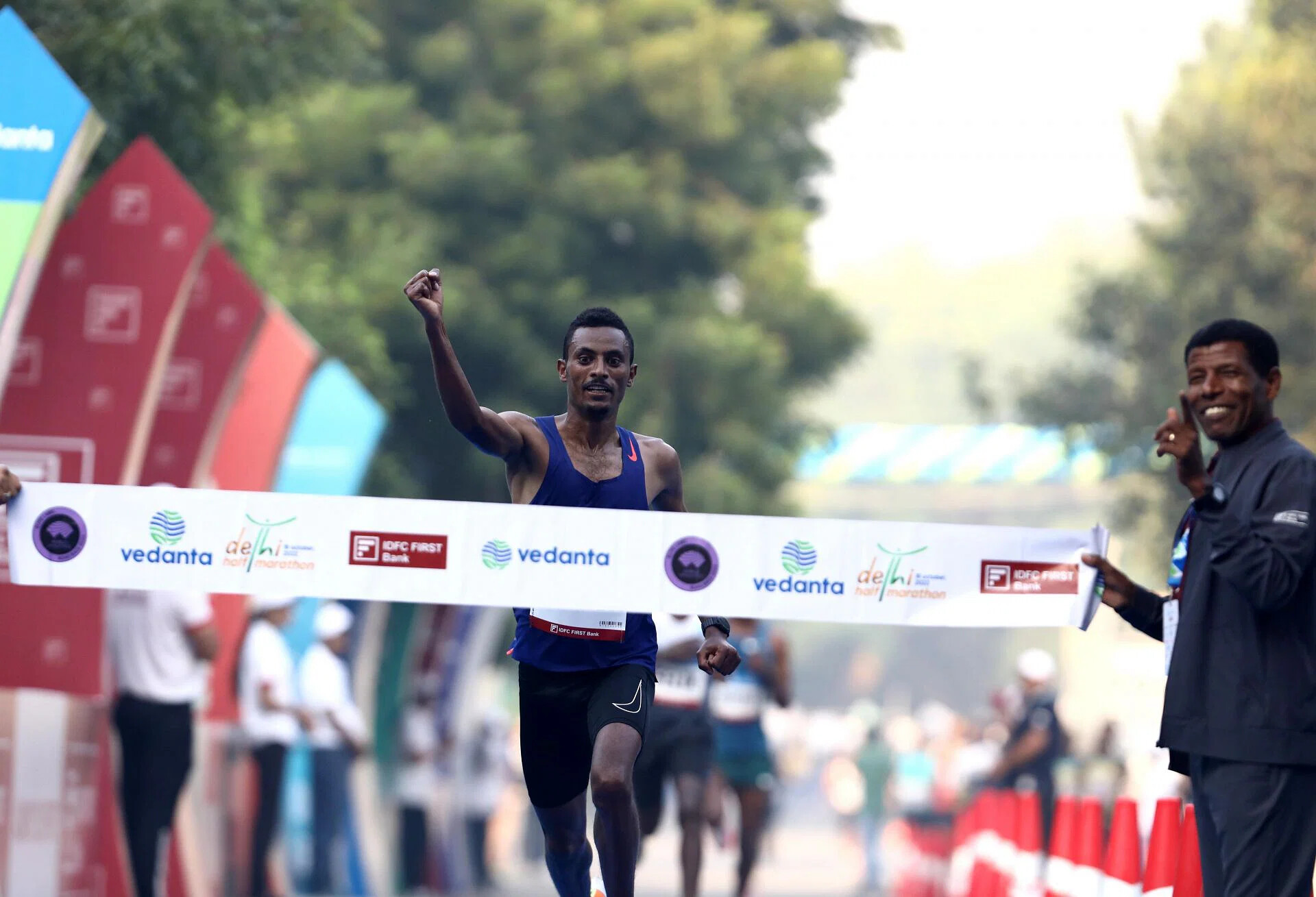
Cheptai finished more than a minute in front of Ethiopia’s World 5000m bronze medalist Dawit Seyaum, who finished second in 1:08:02, while Stella Chesang set a Ugandan record of 1:08:11 in third place. Another Kenyan in the race was Faith Chepkoech who placed ninth in 1:10:34.
In the men’s race, Ethiopia’s Chala Regasa won the race in 1:00:30 edging out Felix Kipkoech to second place in 1:00:33. Debutant Boki Diriba, the Ethiopian U20 5000m champion, settled for third place in 1:00:34.
Other Kenyans in the race were Joshua Belet, Moses Koech and Michael Kamau who placed fourth (1:00:43), sixth (1:00:56) and seventh (1:01:02) respectively.
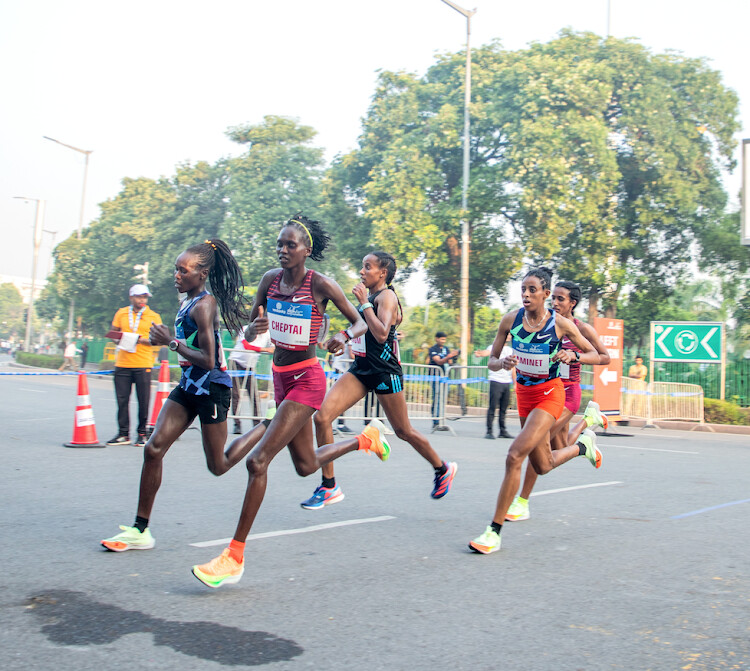
Regasa, 25, came out on top of a thrilling three-man battle over the final kilometre on a misty morning in the Indian capital, sprinting away from Kipkoech and Diriba with 400m to go to take the US $27,000 first prize.
A relatively sedate early pace in the men’s race saw a large group of the elite international field go through 5km in 14:21 and then 10km in 28:48.
This meant that the course record— 58:53 set by Ethiopia’s Amedework Walelegn in 2020—was unlikely to be challenged despite the classy field with 11 men who had run under one hour and who had gathered to contest one of the world’s leading half marathon races.
Koech made a noticeable surge just before the 12km checkpoint and was accompanied by Kipkoech, who was frequent to the fore of the main group but couldn’t shake off any of the main contenders.
Nine men were still in contention as 15km was passed in 43:22, guaranteeing a thrilling finale over the final quarter of the race. Shortly after 15km, Kipkoech increased the tempo which splintered the leading pack as one-by-one runners drifted away from the front.
One of the first to be detached was Ethiopia’s two-time world 5000m champion Muktar Edris, who came home eighth. By 19km, the leading group was reduced to just four men, with Kipkoech still doing the majority of the work.
Regasa and Diriba, both looking comfortable, watched Kipkoech's every move, with Belet also gamely hanging on before having to relinquish his place on the podium just before 20km.
The leading trio passed 20km in 57:31 and dueled almost all the way to the finish line at the famous Jawaharlal Nehru Stadium.
(10/17/2022) ⚡AMPby Abigael Wuafula
Vedanta Delhi Half Marathon
The Airtel Delhi Half Marathon is a haven for runners, creating an experience, that our citizens had never envisaged. The streets of Delhi converted to a world-class running track. Clean, sanitized road for 21.09 kms, exhaustive medical support system on the route, timing chip for runners, qualified personnel to ensure smooth conduct of the event across departments. The race...
more...Antonina Kwambai of Kenya wins TCS Toronto Waterfront Marathon
Antonina Kwambai, 30, of Kenya, won Sunday’s TCS Toronto Waterfront Marathon in 2:23:22, a personal best and her first time racing in Toronto, after overtaking all of the leaders late in the race.
Defending champion and course record holder Magdalyne Masai of Kenya had dropped well back and was presumed out of the race for the podium before coming back to take the lead in the final 10K of the TCS Toronto Waterfront Marathon on Sunday; but ultimately Masai ran out of gas, relinquishing the lead with less than 5 km left, and ultimately the remaining podium positions.

Kenya’s Ruth Chebitok finished second, in 2:23:58, and Gelete Burka of Ethiopia was third, in 2:24:31. (Burka set the Canadian soil record with her win at the Ottawa Marathon in 2018, which was broken by Masai in 2019; she had been hoping to run Ottawa again this year, but had passport issues.)
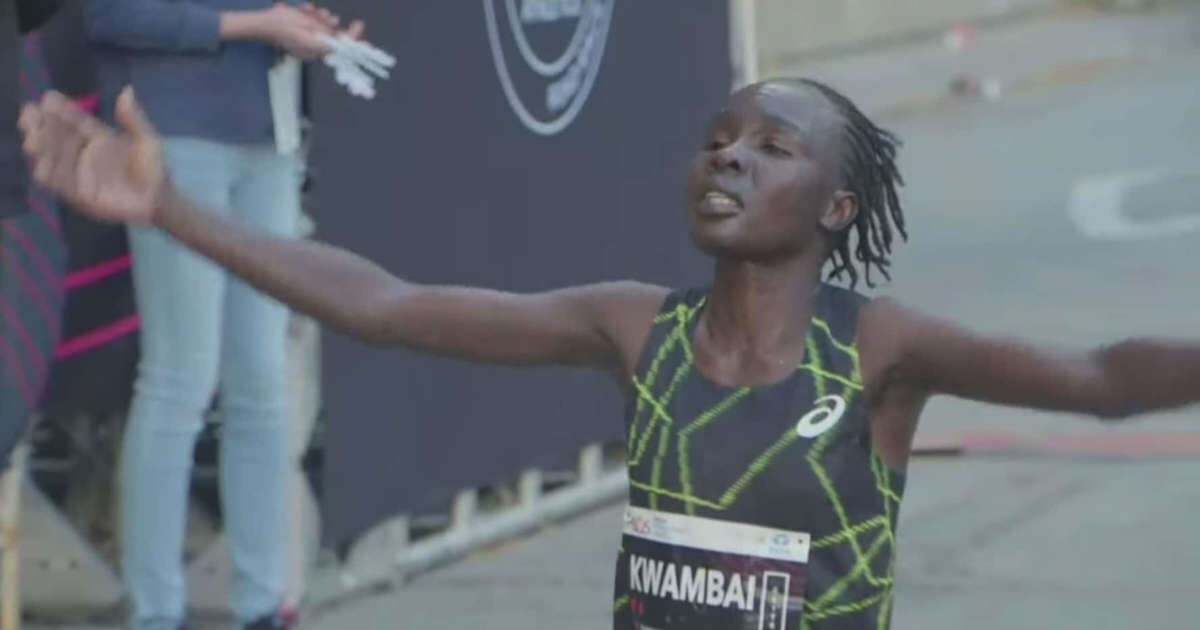
Kwambai’s previous PB was 2:24:20 from the Siena Marathon in 2021.
Masai’s husband, Jake Robertson of New Zealand, ran the Amsterdam Marathon earlier on Sunday. The couple have a year-old child (also named Jake); this is Masai’s first marathon since giving birth last year.
The men’s race was won by Yihunilign Adane of Ethiopia.
(10/17/2022) ⚡AMPby Anne Francis
TCS Toronto Waterfront Marathon
The Scotiabank Toronto Waterfront Marathon, Half-Marathon & 5k Run / Walk is organized by Canada Running Series Inc., organizers of the Canada Running Series, "A selection of Canada's best runs!" Canada Running Series annually organizes eight events in Montreal, Toronto and Vancouver that vary in distance from the 5k to the marathon. The Scotiabank Toronto Waterfront Marathon and Half-Marathon are...
more...Ayana runs fastest ever women's marathon debut with 2:17:20 in Amsterdam
Ethiopia’s Almaz Ayana ran 2:17:20 to achieve the fastest ever women's marathon debut and win a high-quality clash at the TCS Amsterdam Marathon, a World Athletics Elite Platinum Label road race, on Sunday (16).
Setting a Dutch all-comers’ record, Ayana won the head-to-head against her fellow global track gold medallist and compatriot Genzebe Dibaba, who was also making her marathon debut, while Tsegaye Getachew made it an Ethiopian double, winning the men’s race in a PB of 2:04:49.

The women’s race in Amsterdam featured a trio of notable debutants and despite going up against some more experienced opponents when it comes to marathon running, the spotlight was on Ayana, Dibaba and their compatriot Tsehay Gemechu.

Ayana won world 5000m gold in 2015 and the world 10,000m title in 2017 as well as Olympic 10,000m gold in a world record in 2016, while Dibaba set the world 1500m record in 2015, going on to win the world title in that event later that year. Gemechu, meanwhile, finished fourth in the 5000m at the 2019 World Championships and they all formed part of the lead women’s group that followed male pacemakers through 5km in 16:13 and 10km in 32:43. They remained to the fore through the halfway point, passed in 1:09:26, and then started to break away from the group, going through 25km in 1:22:06 and 30km in 1:38:04.
Gemechu managed to hold on until 33km but was dropped by Ayana and Dibaba a short while later, Ayana a stride ahead as she reached 35km in 1:54:01.
Looking untroubled, Ayana eased away from Dibaba and was half a minute clear at 40km, passed in 2:10:07. She continued to push on and grew her advantage to 45 seconds by the finish, clocking 2:17:20 to beat the previous fastest ever women’s marathon debut time of 2:17:23 achieved by Yalemzerf Yehualaw in Hamburg in April.
The performance puts Ayana seventh on the women's world marathon all-time list, while Dibaba is now in the world marathon all-time top 20 thanks to her 2:18:05 run for second place.
Gemechu also dipped under 2:19, clocking 2:18:59 to finish third, while Eritrea’s Nasnet Amanuel ran 2:22:45 to finish fourth on her debut. Bahrain’s 2017 world champion Rose Chelimo finished fifth in 2:23:12.
While Ayana broke away over the final 5km of the women’s race, Getachew waited until the last 2km to make his move.Content to sit back in the lead pack, the 25-year-old passed 5km in 14:33 and 10km in 29:12 before reaching half way in 1:01:54. It was Kenya’s Josphat Boit who took over at the front when the pacemakers stepped aside at 30km, that point passed in 1:28:06, and 35km was reached in 1:43:09. But the pace soon proved too much for Boit, as Ethiopia’s Bazezew Asmare pushed ahead to lead a breakaway group of five.
Still feeling good as they reached 40km in 1:58:23, Getachew kicked and no one could challenge him. Kenya’s Titus Kipruto gave chase, with Asmare just behind them, but Getachew had the strength to stride clear, celebrating on his way to the finish line, which he crossed in 2:04:49. Kipruto held on for second place, five seconds back, while Asmare was a further three seconds behind him, finishing third in 2:04:57.
Kenya’s Abraham Kiptoo was fourth in 2:05:04 and Ethiopia’s Huseydin Mohamed fifth on his marathon debut in 2:05:05 as the top nine all finished under 2:06.
“The competition was very good, the spectators were great and there was a great atmosphere out on the course,” said Getachew after the biggest marathon win of his career so far, following previous victories in Riyadh, Izmir and Dalian.
“I was just very pleased. I felt very good in the last 5km as we went into the park, and especially as we left the park with 2km to go.”
(10/16/2022) ⚡AMPTCS Amsterdam Marathon
Do you want to enjoy Amsterdam in October and all that the city has to offer you? Want to feel a real athlete and start and finish in the historic Olympic stadium? Or run across the widely discussed passage under the beautiful National Museum? Then come to Amsterdam for the annual TCS Amsterdam Marathon in October! The TCS Amsterdam Marathon...
more...Why Am I Tired All the Time? We Have a Few Answers
We all have days that drag. But if you’re tired more often than not, it could be for one of these reasons.
It’s perfectly normal to feel groggy upon waking. It’s simply a phenomenon known as sleep inertia that requires you some time for your energy to kick in and our body and brain to feel awake. “Hardly anyone feels fantastic when they first wake up,” says Scott Kutscher, M.D., board-certified neurologist and associate professor of sleep medicine at Stanford University. However, people typically perk up over the next 30 to 60 minutes, he says.
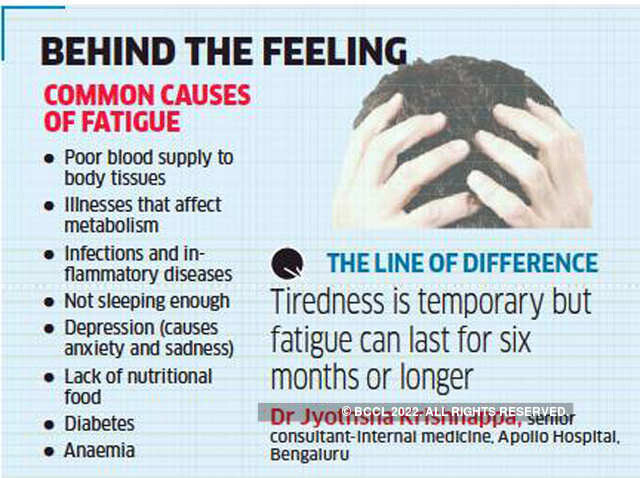
So, if you’re constantly tired several hours after leaving your bed, you might have a problem.
How to Know If Feeling Tired All the Time Is a Problem
We all have days—or even weeks—where we can’t seem to perk up. Blame it on an unusually heavy workload, a jump in running mileage, travel, or any number of other factors that can make the day drag.
Unfortunately, figuring out when tiredness is a problem can be tricky. “Tiredness is a subjective experience, so it’s up to each person to feel for themselves when tiredness is interfering with their life,” Kutscher says.
If you notice that you’re more tired than normal, look at your diet and lifestyle habits. “Diet is very important, and sometimes forgotten as the reason why people may feel tired all the time,” says Eric Ascher, D.O., a family medicine physician at Lenox Hill Hospital in New York City. “Sometimes, adjusting the diet to focus less on sugar and processed foods will improve fatigue.”

Staying well-hydrated throughout the day and prioritizing good sleep hygiene may help, too.
If you don’t feel perkier after two weeks of making lifestyle changes, Ascher suggests making an appointment to see your primary care physician. He or she will likely run blood tests to check for nutrient and hormone deficiencies, and screen for health conditions that cause fatigue, Ascher says. If it turns out that you do have a health issue, your doctor will be able to refer you to a specialist for treatment.
6 Reasons You Might Be Tired All the Time
While it is normal to feel tired, sometimes it can be something more serious. In fact, fatigue is a key symptom of the following health conditions.
1. Sleep Apnea
Sleep apnea is a potentially serious sleep disorder in which your breathing repeatedly starts and stops while you sleep. It’s also incredibly common, Kutscher says. In fact, an estimated 26% of adults between the ages of 30 and 70 have sleep apnea, per the American Academy of Sleep Medicine.
Sleep apnea can happen if the throat muscles relax (known as obstructive sleep apnea), if the brain doesn’t send proper signals to the muscles that control breathing (central sleep apnea), or a combination of the two (complex sleep apnea syndrome), per the Mayo Clinic. In any case, the result is broken sleep.
“Our bodies don’t like interrupted sleep, so someone whose sleep is very interrupted is going to go through their day feeling as though they had poor sleep the night before,” Ascher says.
2. Autoimmune Disease
Autoimmune diseases like lupus, rheumatoid arthritis, and type 1 diabetes occur when your immune system mistakenly attacks the healthy cells of your organs and tissues. While symptoms vary depending on the disease, fatigue appears in all of them. In fact, fatigue is often the most debilitating symptom for people with autoimmune disease, notes Harvard Health.
“When someone has an autoimmune disease, their body is in an inflammatory state, and that puts a lot of stress on the body,” Ascher explains. That’s why you might feel tired all the time.
3. Iron-Deficiency Anemia
According to the National Heart, Lung, and Blood Institute (NHLBI), iron-deficiency anemia is a condition that develops if you don’t have enough of the mineral iron in your body. Iron is part of red blood cells, a protein that carries oxygen throughout your body and helps your muscles store and use oxygen. Without enough iron, your blood can’t deliver enough oxygen to power your body, leading to tiredness and fatigue, the NHLBI explains.
Certain conditions can make it hard for your body to absorb iron, including celiac disease, ulcerative colitis, Crohn’s disease, and kidney disease. If you have one of these conditions, you may develop iron-deficiency anemia. However, iron-deficiency anemia can also occur if you lose blood. People with bleeding in the gastrointestinal or urinary tract, traumatic injuries, or heavy menstrual periods have a higher risk of iron-deficiency anemia, per the NHLBI.
4. Depression
Depression is a common mood disorder that affects your feelings, thoughts, and actions. You may feel persistently sad and hopeless, lose interest in normal activities, and/or feel anxious, notes the Mayo Clinic. At the end of the day, depression will cause you to feel fatigued more often than not, Ascher says.
It doesn’t help that people with depression have a higher risk of sleep problems—75% have trouble falling asleep or staying asleep, per Johns Hopkins Medicine.
5. Type 2 Diabetes
Type 2 diabetes is a chronic condition that happens when your body doesn’t respond to insulin, a hormone that lets blood sugar into your body’s cells to use as energy, per the CDC. When your cells don’t respond to insulin (called insulin resistance), sugar builds up in your bloodstream, eventually leading to type 2 diabetes.
Fatigue is one common symptom of type 2 diabetes, and may even stick around after you’ve gotten your blood sugar under control, per an August 2018 editorial in Diabetes Therapy. There may be several reasons for this, from lifestyle and nutrition choices to the mental energy needed to manage diabetes on a daily basis to the hormonal changes that come with type 2 diabetes, researchers say.
6. Hypothyroidism (Underactive Thyroid)
Your thyroid is a small, butterfly-shaped gland in the front of your neck that makes thyroid hormones. “These hormones regulate many different things, from metabolism to temperature,” Ascher says.
For some people, the thyroid gland doesn’t make enough thyroid hormones—a condition known as hypothyroidism (underactive thyroid). “If your thyroid is underactive, you may feel sluggish and tired, because your thyroid isn’t producing enough hormones to keep up with your body’s needs,” Ascher explains.
(10/16/2022) ⚡AMPby Runner’s World
This Software Company Helped Pave the Way for Nonbinary Inclusion in Races
After RunSignup added a nonbinary gender option to their race registration platform, hundreds of events across the U.S. took a vital step towards inclusivity.
Race registration software RunSignup added a nonbinary gender option to its software at the end of January. The software service owns 40 percent of the endurance race market share in the U.S. according to founder Bob Bickel, so hundreds of race directors across the country were paved a smooth first mile on the road to inclusivity.
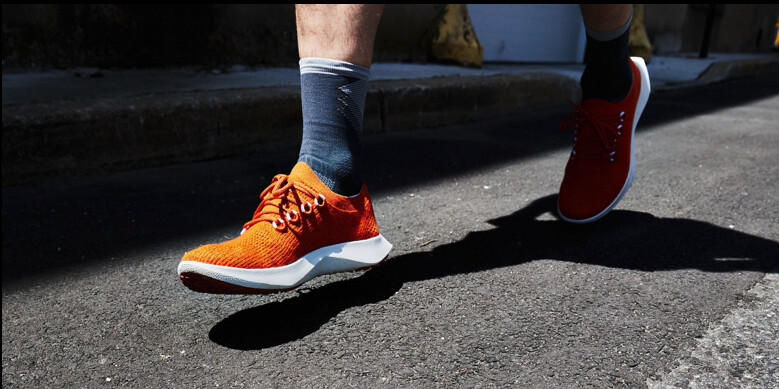
It’s easy on the race director’s end; they simply click a button on the setup page to add a nonbinary category. But the 29-person software development team at RunSignup worked for almost four months to implement the change. They had to update everything from registration to results to team pages and more. According to Bickel, that meant they updated their source code in over 1,000 different places.
“We started writing our software 12 years ago,” Bickel told Runner’s World. “So much of the software in the industry at that time was based around male and female. It was actually, literally, a binary number in the software code.”
Around the same time RunSignup released the third registration option, Seattle-based nonbinary runner Jake Fedorowski, 26, began building nonbinaryrunning.com, a website dedicated to nonbinary inclusion in races. In addition to a guide released in June to help major races jumpstart their inclusivity initiatives, Fedorowski compiled a database of all the U.S. and international races that offer nonbinary divisions. The database currently lists over 200 events with dedicated nonbinary divisions—the majority of them hosted on RunSignup, which as of now hosts over 2,500 races that at least offer the registration option.
When compiling the database, Fedorowski made sure the races were building out fully-realized nonbinary divisions, not just adding a third checkbox by default.
“I’m going through [the database] line by line and getting in contact with each race to confirm: ‘Have you created a registration option? Are you working on the division part of it? Are you providing awards and prize money?’” Fedorowski said.
RunSignup does make it easier to build out fully-formed nonbinary divisions, even if race directors don’t take advantage. The software is compatible with most timing services, so if a race has male, female, and nonbinary categories upon registration, the timers automatically sort by gender category after the race—which streamlines processing awards.
While not all races go to such lengths, Bickel credited RunSignup customers for pushing the company to implement these changes: “[They held] our feet to the fire and said, ‘It’s worth doing; this is important to us.’”
RunSignup’s customers aren’t the only races pushing for change. The Philadelphia Distance Run offered equal prize money across male, female, and nonbinary divisions in September 2021, the first to do so. The New York City Marathon established a nonbinary division for its 50th edition in November 2021. The fellow world major marathons in Boston, Chicago, and London recently added nonbinary fields.
Fedorowski encouraged race directors not to stop at the registration option, but look deeper at how they can foster inclusivity.
“If a nonbinary participant shows up to your event and is misgendered, or they have to decide between men’s or women’s spaces or apparel, that experience suddenly becomes very harmful,” said Fedorowski. “The work to create even just the registration option is now all of a sudden outweighed by this negative experience.”
While RunSignup can’t directly impact the on-site race day experience, the company actively advocates for inclusivity.
“We have an annual symposium in July where we made a big point of this feature,” Bickel said. “The message we brought to race directors at this meeting was: This is a way to grow your race. This is a way to not even just attract nonbinary runners, but also show that you care to a new generation of runners—that you’re thinking forward, not backward.”
RunSignup has made updates on the software side, too. The development team recently added a search filter so users can sift for races that offer nonbinary registration. The company will also reinforce their race renewal feature to provide feedback on how to improve a race for its next iteration. For example, if a race director decides not to include a nonbinary division, the software recommends adding one for the next race. RunSignup’s sales representatives and account managers even bring it up directly with race directors.
“We’re not changing the world or anything,” Bickel said. “But, you know, little steps.”
(10/16/2022) ⚡AMPby Runner’s World
There’s New Data on How Antibiotics Affect Your Workout
It’s no surprise that most people don’t feel great at the gym when they’re taking antibiotics. After all, if you’re taking them, that generally means that you’re either ill or just getting over an illness. But lately there’s been a surge of scientific interest in the idea of a gut-muscle axis, which posits that the … Continued A pair of experiments find that mice choose to run less after taking antibiotics, even though their endurance is unchanged
It’s no surprise that most people don’t feel great at the gym when they’re taking antibiotics. After all, if you’re taking them, that generally means that you’re either ill or just getting over an illness. But lately there’s been a surge of scientific interest in the idea of a gut-muscle axis, which posits that the microbes in your intestines are affected by physical activity and, in turn, affect your ability to perform physical activity. That raises an interesting question: do antibiotics, which wipe out large swaths of your gut flora, have a direct effect on athletic performance?
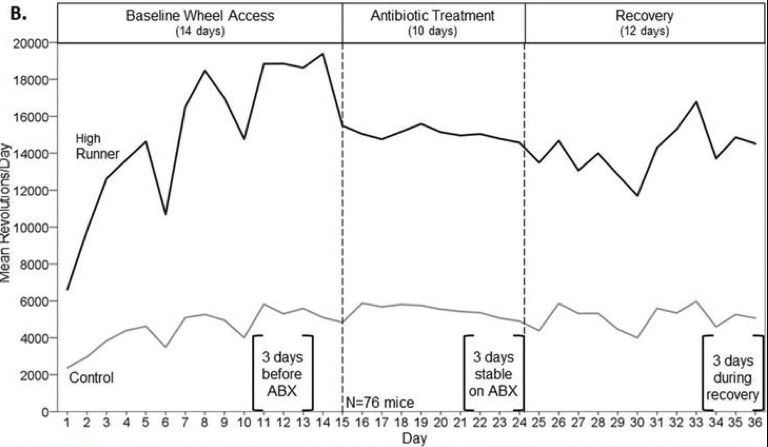
There have been a bunch of studies supporting the idea of a two-way gut-muscle axis, mostly in mice. Transplanting fecal bacteria from unusually healthy older humans into mice makes them stronger. Eliminating gut bacteria in mice with a wide-spectrum antibiotic reduces running endurance. Most prominently, in 2019, a lactate-eating bacteria found in the poop of Boston marathoners made mice faster. But when you move past the headlines, the actual research remains confusing and contradictory: every study seems to find a different magic microbe.
The good news, then: two new studies on the effects of antibiotics on exercise reach similar conclusions. There are still plenty of caveats—both studies are in mice, for one thing. But they suggest an interesting twist: the biggest athletic effect of antibiotics may be on the brain, not the muscles.
The first study, led by Monica McNamara and Theodore Garland of the University of California, Riverside and published in Behavioural Processes, compared two different types of mice. One was the famous High Runner line. Back in 1993, researchers began selecting mice who showed unusually high levels of voluntary wheel running and breeding them with each other. The mice in the UC Riverside study are from the 89th generation of this program, and they now choose to run about three times as much daily as mice from the control group, who come from the same original group of mice but weren’t selectively bred for running.
After two weeks of baseline wheel-running, the mice were put on broad-spectrum antibiotics (meaning they wiped out most gut bacteria rather than just certain strains) for ten days. Here’s what their average “running log” looked like, measured in revolutions of the wheels in their cages:
The daily distance drops by 21 percent in the High Runner mice, and doesn’t return to normal during the subsequent 12 days. In the control mice, on the other hand, nothing seems to change. Neither group showed any evidence of being sick: their weight and food consumption were unaffected. This suggests that some part of whatever it is that’s been bred into the High Runner mice is affected by antibiotics.
One possibility is that this is a gut-muscle axis effect. The High Runner mice have some sort of microbial advantage—something like the lactate-eating microbe from Boston marathoners—that makes running physically easier for them, which is why they run so much. Take that edge away, and running isn’t as much fun, so they do less of it.
The other possibility is that it’s the gut-brain axis in action. McNamara cites some previous research showing that the gut microbiome can influence motivation and reward circuitry in the brain: antibiotics affect how certain amino acids are absorbed from the gut into the bloodstream, after which they travel to the brain where they’re transformed into brain chemicals such as dopamine and serotonin. McNamara’s experiment can’t distinguish between these two possibilities, but either way the motivation to exercise seems to be blunted.
The second study, led by Noah Hutchinson and Jeffrey Woods of the University of Illinois at Urbana-Champaign and published in Medicine & Science in Sports & Exercise, has a similar setup. They compared normal lab mice with and without broad-spectrum antibiotics, plus a group of “germ-free” mice that were specially bred from birth to have no microbiome at all. In this case, the researchers were interested in how the antibiotics affected training adaptations: after six weeks of voluntary wheel-running, would the antibiotic and germ-free mice gain as much fitness as the control group? Their hypothesis was no.
Once again, voluntary wheel running was reduced in the antibiotic group by 22 percent, and was 26 percent lower in the germ-free group. Here’s what their daily mileage tallies looked like (squares are the control group, circles are on antibiotics, and triangles are germ-free):
But their response to this training tells a slightly different story. In a treadmill test to exhaustion, the antibiotic mice improved similarly to the non-antibiotic mice (their improvement was slightly smaller, but the difference wasn’t statistically significant, and would be expected anyway since they chose to run less during the training period). Moreover, tests of gene expression and muscle properties also found that the antibiotic group fared just as well.
The germ-free mice, on the other hand, didn’t improve as much after the training period. Since the antibiotic group wasn’t affected by its lack of microbiome, this suggests that the germ-free mice had some sort of pre-existing developmental deficit thanks to growing up without a microbiome that compromised their ability to respond to training.
The practical takeaway, according to Hutchinson and his co-authors, is that if you need to go on antibiotics in the lead-up to an important competition, it’s unlikely that it will affect your training adaptations or your performance. I think that’s a reasonable and reassuring position, bearing in mind all the uncertainties inherent in applying mouse studies to human behavior.
But it’s the apparent change in motivation to exercise that really intrigues me. Is there something there that helps explain who among us ends up as a High Runner? If so, can we manipulate it? It’s easy to see how you could get caught up in the excitement around potential new probiotic supplements that alter not just your ability but also your desire to exercise. Garland, in a UC Riverside press release, hints at that possibility. But his advice, for now, is suitably grounded in the current reality. If you want a healthy microbiome, he suggests, you should eat a balanced diet and exercise regularly.
(10/16/2022) ⚡AMPby Outside
Kipruto comes second as Ethiopians dominate Amsterdam Marathon
Kenyan Titus Kipruto on Sunday finished second as neighboring rivals Ethiopia dominated both the men's and women’s races in the 2022 Amsterdam Marathon.
Kipruto clocked 2:04:54 to finish second behind Ethiopia’s Tsegaye Getachew who clocked 2:04:49 to win the race. The men’s race saw the top 10 slots split between Kenyans and Ethiopians.
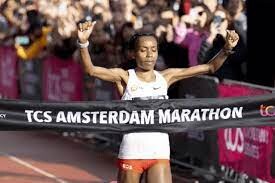
Kenyans Abraham Kiptoo finished fourth (2:05:04), Cyprian Kotut sixth (2:05:15), Laban Korir eighth (2:05:41), and Josephat Boit 10th (2:06:34) as the remaining slots went to the Ethiopians. In the women's race, Ethiopian track greats Almaz Ayana, Genzebe Dibaba and Tsehay Gemechu completed a sweep all on their debuts.
2016 Olympic Gold medalist Almaz Ayana ripped the Course Record on her debut, winning in 2:17:20. Genzebe Dibaba who is also the 1500m World Record holder on the track came second also on her marathon debut, clocking 2:18:05.
Tsehay Gemechu, also on her debut, completed the Ethiopian sweep after clocking 2:18:59.
Celestine Chepchirchir was the only Kenyan in the top 10 as she finished seventh in 2:26:50.
(10/16/2022) ⚡AMP
TCS Amsterdam Marathon
Do you want to enjoy Amsterdam in October and all that the city has to offer you? Want to feel a real athlete and start and finish in the historic Olympic stadium? Or run across the widely discussed passage under the beautiful National Museum? Then come to Amsterdam for the annual TCS Amsterdam Marathon in October! The TCS Amsterdam Marathon...
more...Peter Mburu clocks 29:38.2 10k at the 14th KATA monthly Time Trial
In the absence of KATA's Peter Mwaniki and Peter Wanyoike (both competing in Italy) another Peter took over the driver's seat during the 14th edition of Kenyan Athletics Training Academy (KATA) on Saturday.
Peter Mburu is the new champion of the 10Km Trial that saw half of KATA Athletes improving their Personal Records.
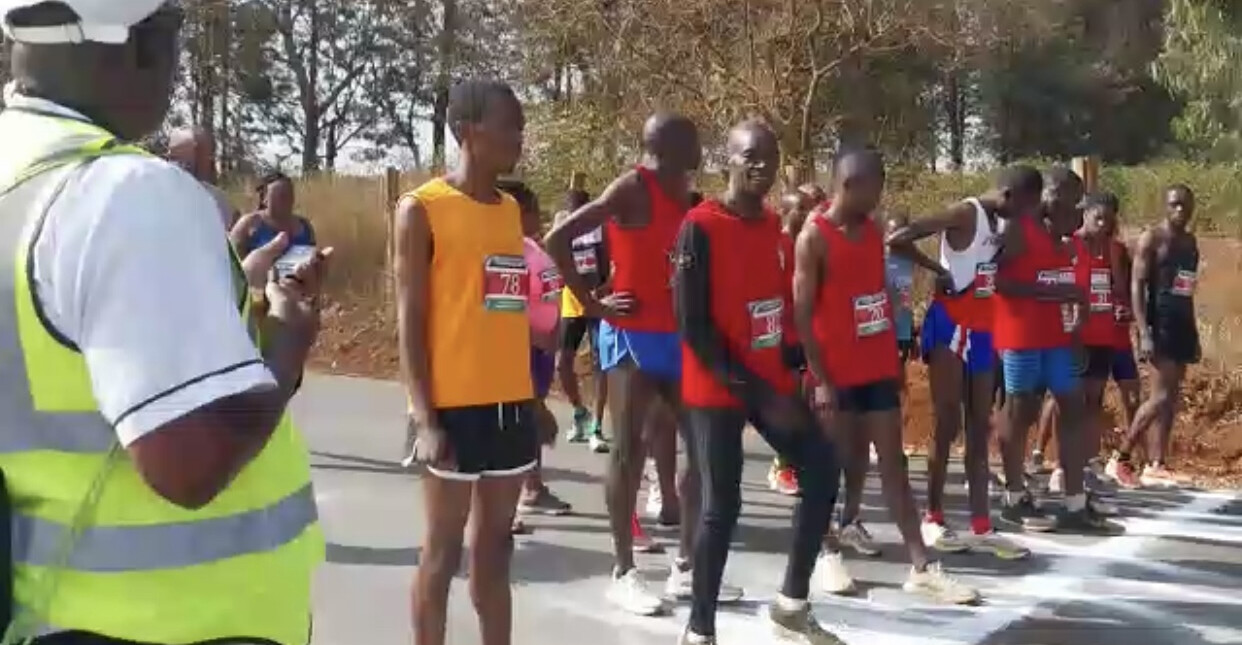
Mburu, who has been struggling with an injury since May, timed 29:38.2, bettering his previous 30:13.8 with the ever-green Zachariah Kirika finishing second in a new Personal Best of 29:44.5, chopping off 10 seconds from his April’s 29:54.4 Personal Best.
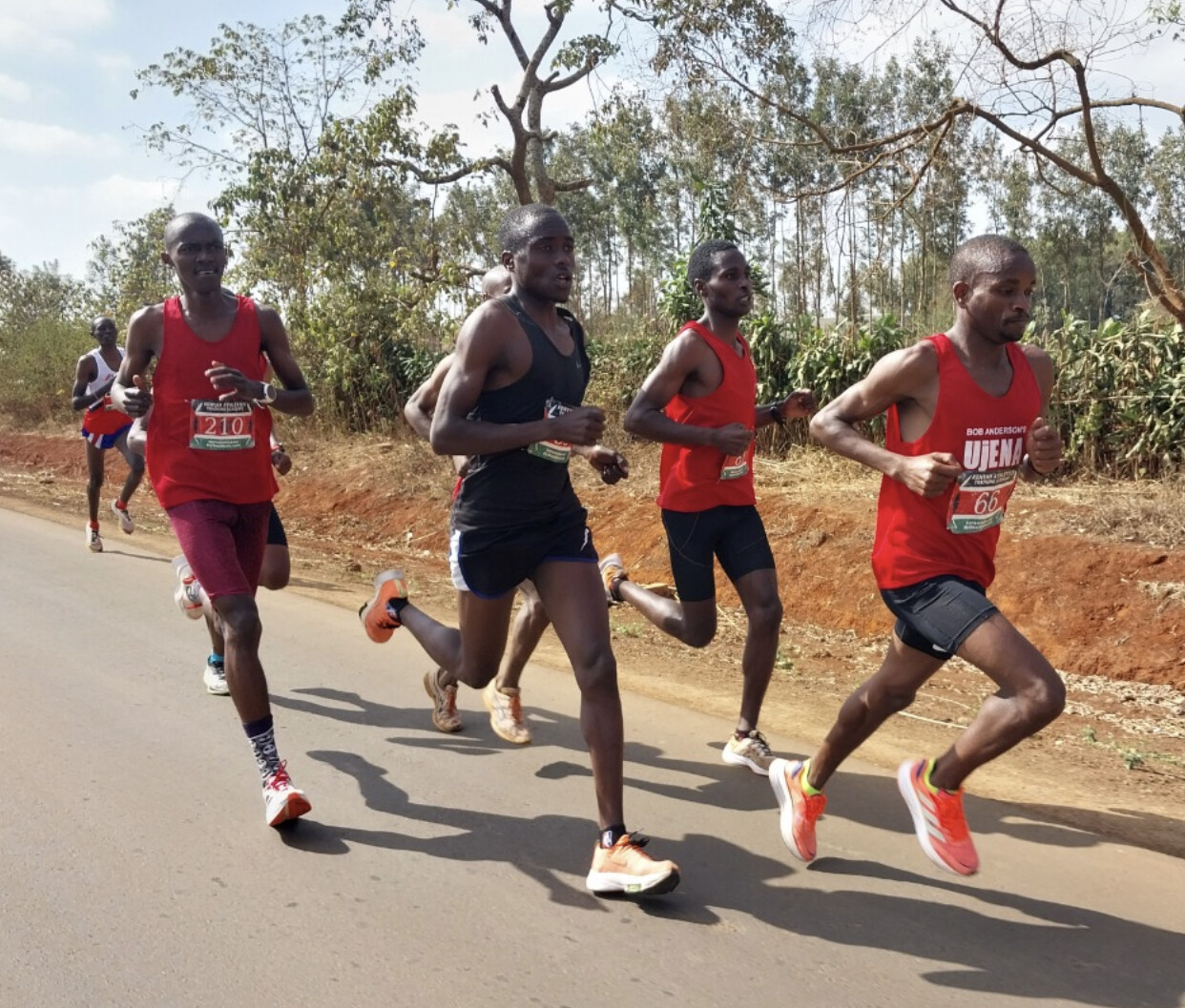
The monthly time-trial that took place near Thika on a 5Km loop with 22 participants, saw half of KATA Athletes register their personal best times as they step up their training for Standard Chartered Nairobi Marathon at the end of the month where most of them will compete in 21km and 10Km respectively.
KATA's 60-year-old Charles Ndirang’u clocked 39:50 which is 83.8% age-graded.
The next time-trial will take place on the track November 19 at the Jomo Kenyatta University of Agriculture and Technology Track, and will include the 5,000m as well as 10,000m.
Full Results:
name, bib, age, time
1. Peter Mburu 98 26 29:38.2
2. Zachariah Kirika 210 20 29:44.5
3. Erick Mutuku 66 20 29:55.6
4. John Kuria 72 26 30:06.6
5. Raphael Gacheru 81 22 30:43.2
6. Evans Kiguru 85 27 31:12.9
7. Eston Mugo 70 29 31:37.6
8. Fredrick Kiprotich 500 23 32:36.0
9. Anthony Mukundi 80 36 33:23.4
10. Paul Ng’ang’a 443 44 34:18.2
11. John Mutiso 127 18 35:45.1
12. Simpson Njoroge 217 38 36:03.6
13. Joseph Wanjiru - 36 37:05.8
14. Susan Njeri 20 36 38:01.1
15. Caren Chepkemoi 94 19 39:43.0
16. Charles Ndirang’u 82 60 39:50.0
17. Kellen Waithera 100 35 39:50.5
18. Peter Mukundi 78 27 43:41.1
19. Hannah Njeri 95 23 52:29.0
(10/15/2022) ⚡AMPKATA Time Trial Series
Welcome to the KATA Monthly Time Trial Held at the Kenyan Athletics Training Academy in Thika, Kenya, the KATA Monthly Time Trial is a unique and inclusive event designed to support runners of all levels in achieving their goals and showcasing their fitness. This event offers both 10K and 5K distances on an accurate, certified course, providing participants with...
more...Three global title winners ready to clash in Amsterdam
The TCS Amsterdam Marathon on Sunday (16) will bring together three winners of global titles. Almaz Ayana and Genzebe Dibaba will be making their marathon debuts at the World Athletics Elite Platinum Label road race, while 2017 world champion Rose Chelimo is also in the field.
The incredibly deep men’s field, meanwhile, includes nine men with PBs faster than 2:06, led by 2016 Boston Marathon champion Lemi Berhanu.
Ayana and Dibaba, who won the world 5000m and 1500m titles respectively back in 2015, have battled injuries in recent years but have still managed to make a promising transition to the roads. Ayana, the 2016 Olympic 10,000m champion, clocked 1:07:12 on her half marathon debut when winning in New Delhi in 2017. And since returning this year after a three-year break, she has placed fifth in Madrid in 1:08:22 and third at the Great North Run in 1:07:10.
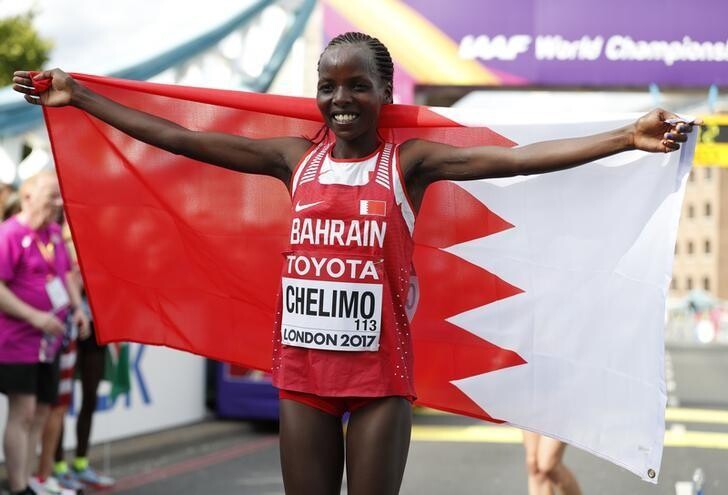
Dibaba, meanwhile, hasn’t raced on the roads since 2020, but her performances then were impressive. The world 1500m record-holder won the Valencia Half Marathon on her debut at the distance in 1:05:18, then three weeks later won over 5km in Barcelona.
The Ethiopian duo have never raced one another on the roads, but they have clashed 12 times on the track. Dibaba has the upper hand, 8-4, but Ayana won their more significant duels, including the 2015 World Championships, 2015 Diamond League Final, and 2014 African Championships.
The marathon is another beast entirely, though, and experience can count for a lot. Chelimo has plenty of experience on the roads, having won 2017 world gold and 2019 world silver, but the 33-year-old from Bahrain has always been more of a championship performer than a big city marathon runner. Her most recent marathon was in Rotterdam earlier this year, where she placed 19th in 2:44:22.
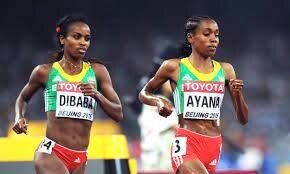
Celestine Chepchirchir is a late addition to the field, following her withdrawal from last week’s Chicago Marathon. The Kenyan set a PB of 2:20:10 in Seoul earlier this year, making her the fastest entrant for this weekend’s race.
Ayana and Dibaba aren’t the only notable marathon debutants lining up in Amsterdam. Their compatriot Tsehay Gemechu, the fourth-place finisher over 5000m at the 2019 World Championships, has a strong record at the half marathon and heads to the Dutch city in good form. A two-time winner in New Delhi and Lisbon, Gemechu recently reduced her half marathon PB to 1:05:01 when finishing second to Yalemzerf Yehualaw in Antrim.
Fellow Ethiopian Azmera Gebru will be returning to Amsterdam, following her third-place finishes there in 2018 and 2019. Compatriot Gebeyanesh Ayele also returns, following her fourth-place finish last year, while Sintayehu Tilahun could be one to watch, following her recent PBs over the half marathon (1:07:41) and marathon (2:22:19).
After nine successive men’s victories in Amsterdam, Kenya’s winning streak came to an end last year. But Cybrian Kotut hopes to kick-start the trend on Sunday.
The 30-year-old has won his past three marathons, his most recent victory coming in April in Hamburg, where he set a lifetime best of 2:04:47. The Kenyan challenge is strengthened by the likes of Titus Kipruto, who won this year’s Milan Marathon in a PB of 2:05:05, Norbert Kigen, runner-up in Amsterdam in 2017 and winner in Prague earlier this year, and Laban Korir, who will be making his sixth appearance in Amsterdam.
But 2016 Boston Marathon champion Lemi Berhanu leads a strong Ethiopian contingent. Berhanu’s PB of 2:04:33 dates back to 2016, but his runner-up place in Boston last year shows he is still competitive.
He will be joined on the startline by compatriots Tsegaye Getachew, winner in Riyadh earlier this year and owner of a 2:05:11 PB, Adeladlew Mamo, who ran 2:05:12 on his marathon debut earlier this year, and 2:05:52 performer Adugna Takele.
Other contenders in the field include Eritrea’s Afewerki Berhane, Japan’s Shuho Dairokuno, and marathon debutant Victor Chumo.
Leading entries
WomenCelestine Chepchirchir (KEN) 2:20:10Azmera Gebru (ETH) 2:20:48Gebeyanesh Ayele (ETH) 2:21:22Sintayehu Tilahun (ETH) 2:22:19Rose Chelimo (BRN) 2:24:14Fikrte Wereta (ETH) 2:26:15Almaz Ayana (ETH) debutGenzebe Dibaba (ETH) debutTsehay Gemechu (ETH) debut
MenLemi Berhanu (ETH) 2:04:33Cybrian Kotut (KEN) 2:04:47Titus Kipruto (KEN) 2:05:05Tsegaye Getachew (ETH) 2:05:11Adeladlew Mamo (ETH) 2:05:12Norbert Kigen (KEN) 2:05:13Afewerki Berhane (ERI) 2:05:22Adugna Takele (ETH) 2:05:52Laban Korir (KEN) 2:05:54Masreshe Bere (ETH) 2:06:44Abraham Kiptoo (KEN) 2:06:59Shuho Dairokuno (JPN) 2:07:12Bazezew Asmare (ETH) 2:07:13Josphat Boit (KEN) 2:07:20Godadaw Belachew (ISR) 2:07:54Yuki Sato (JPN) 2:08:17Jake Robertson (NZL) 2:08:26Akira Tomiyasu (JPN) 2:08:55Deribe Tefera (ETH) 2:09:15Bekele Muluneh (ETH) 2:09:51Khalid Choukoud (NED) 2:09:55Victor Chumo (KEN) debutHuseydin Mohamed (ETH) debut
(10/15/2022) ⚡AMPby World Athletics
TCS Amsterdam Marathon
Do you want to enjoy Amsterdam in October and all that the city has to offer you? Want to feel a real athlete and start and finish in the historic Olympic stadium? Or run across the widely discussed passage under the beautiful National Museum? Then come to Amsterdam for the annual TCS Amsterdam Marathon in October! The TCS Amsterdam Marathon...
more...Ethiopia’s two-time 5000m world champion, Muktar Edris eyes course record at Delhi Half Marathon
Muktar Edris, has set his sights on breaking the course record at the Vedanta Delhi Half Marathon, scheduled to be held on a beautifully laid out race route here on Sunday. Edris, whose summer season was derailed by an untimely calf injury, has landed in India with a target of producing the fastest half-marathon time ever seen in the country and beating the course record of 58:53 set by his compatriot Amedework Walelegn in 2020.
It would earn him a $12,000 bonus in addition to a winner’s cheque of $27,000.
Edris had made an impressive debut in Delhi in 2020 and finished fourth on that occasion with a timing of 59:04. The 28-year-old improved his personal best in the Spanish city of Valencia 12 months ago to 58:40 to make him the fastest runner in the 17th edition of the World Athletics Elite Label Race, which is one of the world’s most prestigious races over the distance.
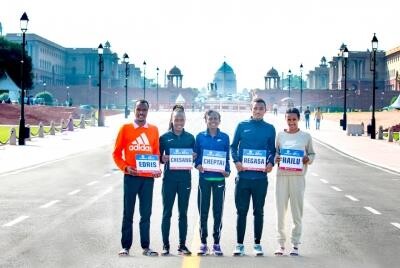
“Sunday will be only my third half marathon but I will certainly try for the course record. I am now back in good shape. I ran well [over 5000m on the track] at the Diamond League in Rome in the summer but had some calf problems after another race in Paris. When I went to Eugene [to defend his world title], I didn’t get a good result but now everything is much better,” commented Edris at the pre-race press conference.
Just two weeks ago, Edris had his first race since the World Athletics Championships in July and got a morale-boosting 10km win on the roads in Trento, Italy over a high-quality field.
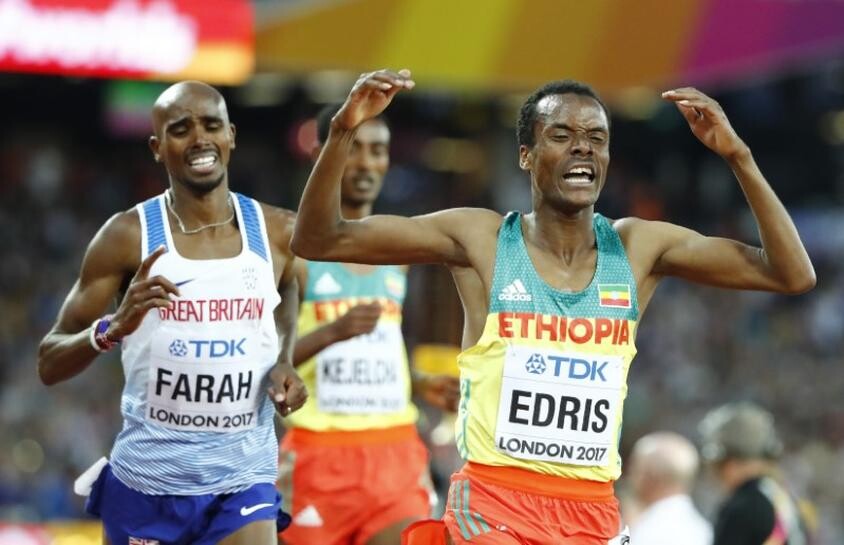
Among Edris’s challengers on Sunday will be Kenya’s Felix Kipkoech and Ethiopia’s Chala Regasa, the second and third fastest men in the field with personal bests of 58:57 and 59:10, respectively.In the elite women’s section, Kenya’s Irine Cheptai – already a winner in India at this year’s TCS World 10K Bengaluru in May – revealed that she would soon end her track career to focus on marathons.“Next year, I want to run my first marathon and so this race is a preparation for that,” said the 2017 world cross country champion and the fastest woman in the international elite field with a personal best of 66:43.
Cheptai’s main rival will be Ethiopia’s Lemlem Hailu, the 2022 world indoor 3000m champion, who will be making her debut over the distance having never run further than four miles before.
(10/15/2022) ⚡AMPVedanta Delhi Half Marathon
The Airtel Delhi Half Marathon is a haven for runners, creating an experience, that our citizens had never envisaged. The streets of Delhi converted to a world-class running track. Clean, sanitized road for 21.09 kms, exhaustive medical support system on the route, timing chip for runners, qualified personnel to ensure smooth conduct of the event across departments. The race...
more...10 ways to start running even if you kind of hate it
Runners love to hate their sport. Here’s advice for how to get past the pain and make running more fun.
Are you a runner who hates running?
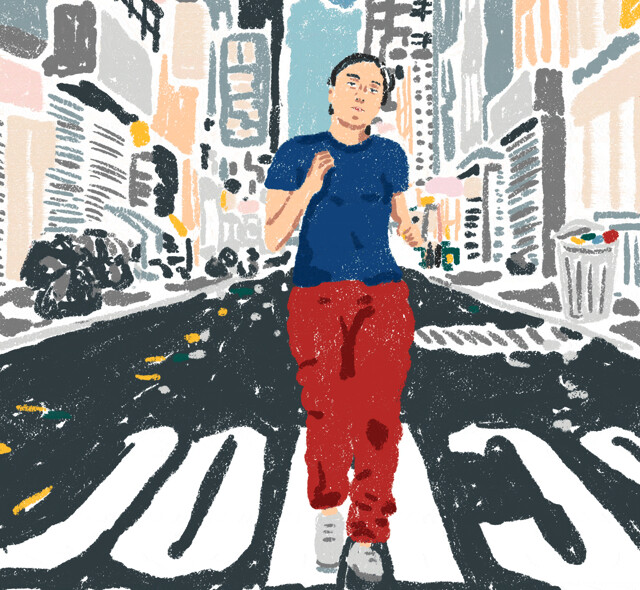
It turns out, a lot of runners don’t love the actual running part of their sport. Running can conjure up memories of pain and punishment from high school sports. It can feel like a chore. Even avid runners who love the sport have had periods where their motivation wanes. One popular search on Google: “How do you start running when you hate it?”
Brendan Leonard, an outdoor adventure writer who runs ultramarathons, said that when strangers learn he’s a distance runner, they often tell him that they hate running, to which Leonard replies, “I hate running, too, man. It’s not that fun.”
And yet, running is one of the most popular forms of exercise with nearly 8 million people around the world signing up to compete in races each year. Running can be cathartic, and people who do it often feel a sense of accomplishment.
The Washington Post asked readers, “Do you hate running but want to do it anyway?” More than 100 people responded with stories of their love-hate relationship with running. Here’s their advice.
Go slower. You can even walk sometimes.
You don’t have to go fast. You don’t even have to run the whole time.
Cody Townsend, a 39-year-old professional skier, found running boring and painful. His endurance coach, Sam Naney, told him to slow down and alternate jogging for 30 seconds and walking for 30 seconds — a run-walk-run training method popularized by Olympian Jeff Galloway.
Townsend ran-walk-ran for 20 minutes several times a week for about four to six weeks. In the beginning, that meant he was running a 12- to 13-minute mile pace.
“If you can run and have a conversation with someone, then you're at the correct pace,” Townsend said. “And once I learned that, that’s what was the key catalyst to improving and then learning to love running.”
Expect the struggle. Embrace the boredom.
The struggle of running is a shared experience with every other runner, from beginner to elite marathoner.
In his book, “I Hate Running and You Can Too: How to Get Started, Keep Going, and Make Sense of an Irrational Passion,” Leonard recommends giving yourself permission to struggle. Running takes time. It requires practice. You need the proper shoes and gear, which can be found at specialty running stores.
Another common refrain from people who don’t like running is that it’s boring. Leonard, 43, agrees. But to him, “Boredom is fertile. It’s a great place to put yourself to actually think, as opposed to something that’s commanding your attention every few seconds.”
Make a game out of it
Mika McDougall, who is married to Christopher McDougall, the best-selling author of “Born to Run: A Hidden Tribe, Superathletes, and the Greatest Race the World Has Never Seen,” realized that she needed extra motivation to run during the frigid winter days of Lancaster County, Pa.
She noticed that in a nearby neighborhood, residents had set up free libraries in their front yards. She started to organize her runs around them. By the end of her runs, she would have a pile of books to take home. She would also drop books off.
“I wanted to vary it up to entertain myself, because you can kind of get into a routine and get bored,” said McDougall, who has since moved to her home state of Hawaii, where the weather is warmer. “It was a fun way to plan the afternoon and get rid of junk around the house.”
Run with a personal coach in your ear
Listening to a running podcast or guided running app during your run is like having a personal coach by your side. You can search for a variety of apps for runners of all levels.
Jess Mullen, 39, an administrative assistant in Philadelphia, says that running is “always a slog.” Listening to the NHS Couch to 5K podcast has helped. The episodes distract her from pain and offer reminders about form and breathing. The podcast is “a completely judgment free, nurturing way into running,” Mullen said.
Mullen’s cousin, 34-year-old Emily Kane, of Philadelphia, runs with Peloton’s guided workouts. “You kind of feel like you’re not by yourself,” she said.
Run with music or entertainment
Music, audio books and podcasts can also serve as entertainment and distraction on a long run. “At low to moderate intensities of running, the reduction in the rates of perceived exertion is around 10 percent” while listening to music, said Costas Karageorghis, a professor at Brunel University in London and author of the book, “Applying Music in Exercise and Sport.”
“It encourages dissociation, which means that runners are not so aware of the fatigue related symptoms from the organs and from the working muscles,” Karageorghis said.
The sweet spot for music tempo is between 120 beats per minute for a low intensity run and 140 beats per minute for a high intensity run.
Look for headphones with “bone conduction technology” and an open-ear design so you can listen to music but still hear traffic and stay aware of your surroundings.
Head to the trails
Trail running allows a change of scenery and an escape into nature. It also gives you “permission to slow down,” said Mike Crowley, 59, of Conshohocken, Pa., who has competed in multiple 100-mile races, including the Eastern States 100 in Waterville, Pa.
“It’s not as monotonous,” Crowley said. “The environment is more appealing and changes through the season. The community of trail runners is very welcoming and a fun group to be a part of.”
The American Trail Running Association (ATRA) lists dozens of trail-running events in the United States every month.
Keep chasing the runner’s high
Not everyone experiences the runner’s high the same way, but research suggests the feeling has to do with endocannabinoids, which are the natural versions of THC and CBD.
“When we say runner’s high, we mean kind of a euphoric effect that some but not all people experience after a bout a physical activity, and also reductions in pain and anxiety and stress,” said Hilary Marusak, an assistant professor of psychiatry and behavioral neurosciences at the Wayne State University School of Medicine. “An acute bout of exercise, whether it’s running or cycling or swimming — or even yoga — was associated with an increase in levels of circulating endocannabinoids.”
Leonard, the outdoor adventure author, starts feeling the runner’s high after 40 to 50 minutes into a run. “It takes a lot of work to get to a point where running is relaxing,” he said.
Practice breathing
A common question beginners ask is how to breathe. Heather Knight Pech, a running coach for McKirdy Trained, said one of the first thing she tells her clients is to slow down their pace.
One breathing exercise Knight Pech recommends to warm up before running is box breathing — inhaling and pausing for three to five seconds before exhaling through the mouth and pausing for three to five seconds. The 60-year-old competitive marathoner practices it before running and going to bed.
While running, Knight Pech suggests inhaling through the nose and mouth but exhaling deeper out of the mouth. The key is slowing it down and avoiding short and shallow breathing. “You do not want to be breathing short,” she said. “And if you are breathing short, that probably means you’re in some sort of stress.”
Find your running community
A number of runners noted that the running community — during training and at race day events — can make running more fun. The Road Runners Club of America offers a comprehensive list of U.S.-based running groups.
Matt Lindner, a 39-year-old Chicago marketing manager, ran high school cross-country and tried to get back into the sport at various points in his adult life with little success. “For me, there was just no point going out on a run when I could sit at a bar and drink beers,” Lindner said.
On a whim, Lindner signed up to run the 2017 Chicago Marathon for charity. He joined the Chicago Area Runners Association, a nonprofit organization with more than 11,000 members. Lindner credits the group for keeping him accountable and reigniting his passion for running.
Pick a fun, weird or quirky race
Running doesn’t have to be all business. In France, runners can sign up for the Marathon du Médoc, a 26.2-mile race through scenic vineyards with over 20 wine-tasting stops along the way. In San Francisco, the Bay to Breakers 12K race routinely draws tens of thousands of participants, many of whom are in costume. Every January, Walt Disney World in Orlando hosts a marathon weekend that includes a 5K, 10K, half-marathon and marathon.
Instead of signing up for a prestigious, big city race, 35-year-old Alex Quevedo of Irvine, Calif., chose the Star Wars Half Marathon in 2015. He wore a Stormtrooper tank top with white shorts for the race.
“There was a casualness to it,” he said. “There was more community.”
(10/15/2022) ⚡AMPWhy Your Local Running Store Matters
If you run, you're a runner.
It doesn't matter what pace you run or how long you go, but it does matter where you buy your running shoes.
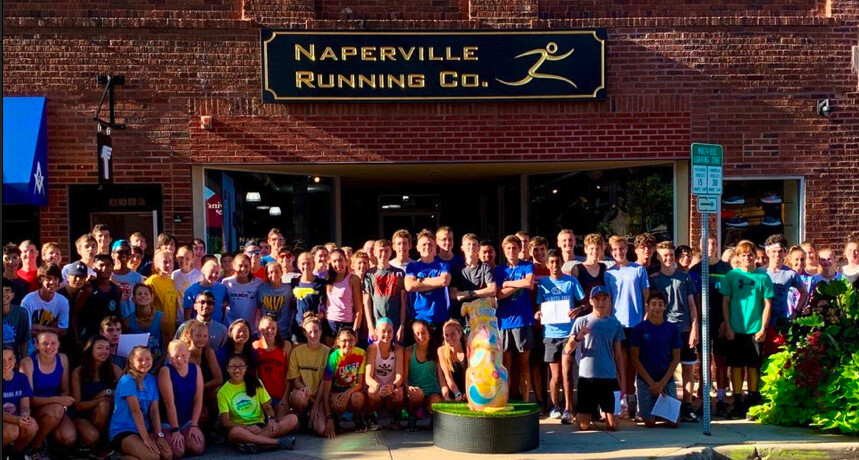
There are a lot of places to buy running shoes nowadays-at a big sporting goods shop, at a mall chain store, at an online retailer, at a discount website or at a running specialty store. The best way to buy your next pair of running shoes is to walk into your local running specialty shop and spend a half hour trying on shoes with a knowledgeable shoe-fitter who knows how different shoes fit, feel and ride and what models might be best for the size and shape of your feet and the idiosyncrasies of your running gait.
Not only will you be amazed at how the different shoes feel on your feet, but you're bound to feel energized about your own running. It doesn't matter if you're a young, fast runner, someone who's been jogging forever, a middle-aged back-of-the-packer or a complete newbie to this thing we all love to do almost every day.
That includes Gina Kutz, a Fitchburg, Wisconsin, resident, who decided to go all-in during the peak of the COVID-19 pandemic in the spring of 2020 because she needed to exercise at a time when gyms were closed.
She admits she didn't know anything about running shoes when she walked into a locally owned Fleet Feet store and was fitted for her first pair of running shoes by store owner Jessica Anderson. Kutz learned why some runners need more support and stability from their shoes, why it's best to have a different pair of shoes to run trails or speedier workouts and that most shoes have a lifespan of 300 to 400 miles.
"At that point, I wasn't a runner, so I needed all the help I could get," Kutz recalls. "I was intimidated going into the store the first time, but Jessica made me feel welcome and calm. She not only helped me find my first real pair of running shoes, but helped me start my journey as a runner."
Kutz has since run a marathon, two half marathons and more than a dozen 5ks. She's been back to her local running shop to buy more shoes, sports bras, running apparel and accessories. The more she visited, the more she realized it was less about the gear and more about the vibe.
"It's one of those places you walk into and you're immediately inspired," Kutz says. "It's not about buying stuff, but you just feel good about being around active runners and people who are there to help you with whatever you need."
America's Best Running Stores
Last month, the 50 Best Running Stores in America were announced by a running industry organization that puts on The Running Event trade show in Austin, Texas, every fall. The winning stores will be honored at an industry celebration on December 1, when the 2022 Running Store of the Year will be announced.
"Our team evaluated hundreds of store submissions and had the pleasure of learning about the races, clubs, charitable efforts, employees, and overall culture that make each run specialty shop a true force for good," said Christina Henderson, executive director of The Running Event. "The industry is comprised of extremely passionate and dedicated retailers, and our team knows there are many incredible stores not represented on the list. These winning stores have proven commitment to their customers, employees, community, and growth of the sport that brings us together: running."
The roughly 900 running specialty shops around the U.S. have been the lifeblood of the sport for recreational running for more than 40 years, providing a sense of community and spreading their knowledge and passion to all levels of runners. Yes, many have had a runner-geek quirkiness to them, but the expert shoe-fitters are there to help every runner find their next pair of running shoes.
You can buy bread, milk, vegetables and ground beef at a chain superstore and your local gas station, but you're probably better off going to a bakery, a butcher shop or traditional grocery store for those items. If you're looking for quality and service, you get what you pay for, and the expert shoe-fitting and customer service (not to mention the running smarts, inspiration and encouragement) you'll get at a running specialty store far outweigh the benefits of buying shoes at a discount and getting them shipped free to your doorstep two days later.
"If you don't have a good fit, you don't have anything," said Kris Hartner, owner of Naperville Running Company in suburban Chicago, which has won the Running Store of the Year honors twice. "It's an individual process because every shoe brand and model will fit slightly differently. The best way to find out what works is to try on several models."
In addition to knowledgeable and personal shoe-fitting service, most running stores offer some type of running gait analysis, a great range of models than most online sites, mall shops or big box stores, plus apparel and accessories and loads of inspiration, too.
Big Things Come in Small Stores
Small, independent running shops have always been the heart and soul of running. They're all about community; not only do they support and encourage local runners, but they also assist local schools, races and training programs. Plus, most can point you to local medical professional who can properly diagnose any running-related aches and pains you might have quickly and effectively.
Those are all of the things that Josh and Kara Levinson focused on as they developed the collection of Charm City Run running specialty stores in Maryland and made it one of the running industry's biggest success stories of the past two decades. They opened their first community-based shop in Timonium north of Baltimore in 2002 and saw it thrive based on good customer service and a friendly local vibe.
They replicated that experience and opened new shops around the state with great success, earning national recognition as the Running Store of the Year in 2016. When the Covid-19 pandemic hit, they adapted with improved online sales that allowed them to impart their shoe-fitting expertise, local knowledge and top-level customer service, not to mention free home delivery.
As the pandemic waned, the noticeable increase in recreational running was apparent and the store thrived - a testament to the community connections the stores and its staff had worked so hard to build for years, but also because of how much effort they gave to their local community when adversity struck.
"There was a huge uptick in business," Levinson said. "It was partly that we were offering more to our customers, but I think people really doubled down on local. Nobody wants to see a lot of local businesses go away, but it's not easy to survive. Local stores aren't just going to stay around. They need to be supported. I am proud of our employees and that we have persevered."
(10/15/2022) ⚡AMPby Trail Runner Magazine
I Run With Nothing But Coffee In My Stomach. Is That Destroying My Insides?
Question: I run super early in the morning and only slug a cup of caffeinated coffee before my run. No food. Is that bad for my stomach?
Caffeine is a hot topic in the world of sports nutrition, and there has been so much research in the recent past about its benefits on exercise and performance. Caffeine is a natural stimulant and can be an effective performance enhancer when consumed by athletes in low to moderate dosages. For both strength and endurance athletes, it may increase muscular strength and power, increase aerobic endurance, increase jumping, sprinting and throwing performance, and enhance alertness. It can also spare glycogen sources, allowing your body to utilize fat as its main fuel source.

But, before we get into running with caffeine, what does drinking a cup of coffee on an empty stomach do? Let's talk about that.
If you're like me, that cup of coffee in the morning jumpstarts your day, in more ways than one. Research has shown that caffeine may stimulate your urge to poop by increasing contractions in your intestines and anal spinchter. These contractions make your digestive tract more active by pushing contents towards your rectum. Caffeine also raises the production of hormones cholecystokinin and gastrin, which have been linked to increased colon activity.
Okay, so we know that coffee may increase your likelihood to poop. Great. But does that mean it is harming your digestive tract at the same time?

The Bitter Truth
Research shows that the bitterness of coffee may be the thing that stimulates the production of stomach acid. Many people believe that this increase in stomach acid can irritate your stomach and cause heartburn, ulcers, nausea, acid reflux, and indigestion.
Some people believe that drinking coffee on an empty stomach can further exacerbate these problems since there is no food in the stomach to help prevent the acid from harming your stomach lining.
However, other research debunks these myths and has shown that the increase in stomach acid doesn't actually appear to cause digestive issues for most people, regardless of whether you drink it on an empty stomach.
So what to do?
First, it's important to pay extra attention to how your body responds to drinking coffee on an empty stomach. While there's no strong correlation between coffee and digestive issues, that doesn't mean that you may not experience these issues. Caffeine affects everyone differently. Some people may even benefit from adding milk to their coffee, as milk helps to increase the pH level, making it less acidic. If you experience stomach discomfort or digestion issues, try pairing your morning cup of joe with some food or a little milk, to see if that helps relieve some of your symptoms. Eating in the morning can be a challenge for some people, so I encourage you to find something that is simple and sounds good, like a piece of toast with nut butter or even last night's leftover pasta.
And this brings me to the most important part: drinking only coffee and not eating before your run.
Should You Run Fasted?
This can be considered fasted running, which involves running on an empty stomach in a depleted state. I am not a fan of fasted running, and I am not afraid to say that loud and clear for all the world to know. Because many people prefer to run in the morning, many runners might be running fasted, even if by accident. This can be dangerous, as energy deficits and low energy availability can cause major health issues.
Many studies have found that even moderate depletion can lower performance in training. Not only that, but food restriction can be a slippery slope for our mental health and may lead to the development of other physical health issues down the line, such as disordered eating, increased likelihood of injury, or hormone imbalance. Caffeine can also suppress appetite, too, which is something athletes need to be aware of. It may indirectly lead to energy deficits if athletes are strictly relying on their hunger cues to fuel.
Remember: Food is fuel. It gives us the energy we need to do the things we love. That's indisputable. Drinking coffee on an empty stomach and then going for a run may not be destroying your insides, but it may destroy your health and performance in the long term, from an energy availability standpoint.
Drinking coffee on an empty stomach and then going for a run may not be destroying your insides, but it may destroy your health and performance in the long term, from an energy availability standpoint.
Here's what I recommend: If going on a morning run, pair your coffee with something for breakfast, even if that something is basic - a piece of toast, a small granola bar, a piece of fruit. If you enjoy drinking coffee with milk, you can add some of that, too, to reduce the acidity.
Pairing a cup of coffee with a carbohydrate-rich breakfast can be a great way to provide a person with all of the energy they need for a run.
As with all things in life, if you enjoy coffee and it doesn't produce any unwanted gastrointestinal distress, then it can be a great part of your morning routine. It may even increase your performance during your morning run.
(10/15/2022) ⚡AMPby Trail Runner Magazine
Isuzu to release limited-edition Eliud Kipchoge vehicle
he world’s fastest marathoner, Eliud Kipchoge, has teamed up with the Japanese auto company Isuzu to release a limited edition “Eliud Kipchoge 1:59 Isuzu D-Max” double cabin pickup truck in honour of the two-time Olympic champion.The name of the vehicle comes from Kipchoge’s run at the INEOS 1:59 Challenge in Austria on Oct. 12, 2019, where he became the first man in history to run a marathon in under two hours, covering the Vienna course in 1:59:41.
The special limited edition of the vehicle will see a symbolic 159 units produced to celebrate Kipchoge’s achievements. Kipchoge will have the honour of driving out the first of the special edition vehicle bearing plate number 001.

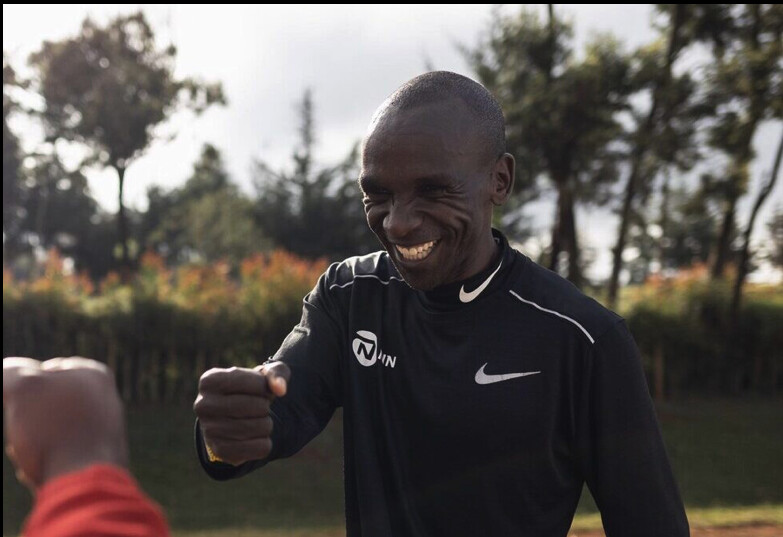
Kipchoge broke his previous (official) marathon world record two weeks ago at the Berlin Marathon, running 2:01:09 to take the win in the German capital.According to Isuzu East Africa managing director Rita Kavashe, the company has seen an increase in market share by 50 per cent with their single-cabin pickup truck in eastern Africa since beginning their partnership with Kipchoge in 2017. “Isuzu embraced me before all these achievements.
They have been with me all this time in training,” Kipchoge said to the Nation.Although the Isuzu D-Max is still under production, proceeds from vehicle sales will support the Eliud Kipchoge Library in his hometown of Kapsisiywa, Kenya.
(10/15/2022) ⚡AMPby Running magazine
New York City Marathon: Kenyan Peres Jepchirchir out, Keira D’Amato in
Olympic champion Peres Jepchirchir withdrew from defending her New York City Marathon title on Nov. 6, citing an unspecified injury.
Keira D’Amato, the second-fastest American female marathoner in history, was also added to the field in Friday’s announcement.
Jepchirchir, 29, is the only person to win the Olympic, Boston and New York City Marathons in a career, doing so in a nine-month span in 2021 and 2022. She won New York City last November in 2:22:39, prevailing by five seconds over countrywoman Viola Cheptoo.
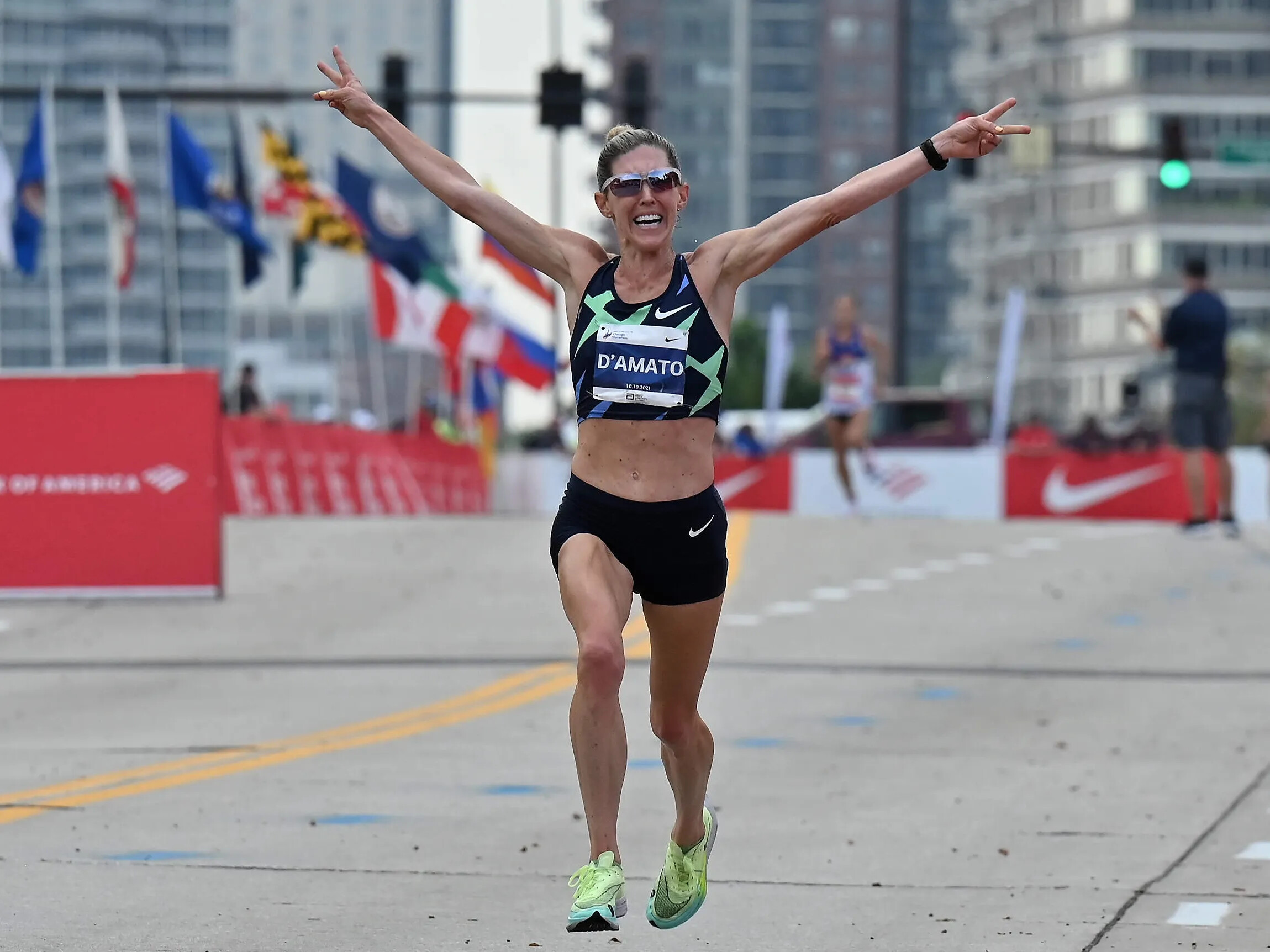
D’Amato, a 37-year-old mother of two, broke a 16-year-old American record in the women’s marathon on Jan. 16 by clocking 2:19:12 in Houston. Emily Sisson took the record last Sunday in Chicago in 2:18:29.
D’Amato, who went nearly a decade between competitive races after a middle-distance stint at American University, will make her New York City Marathon debut six weeks after running the Berlin Marathon in 2:21:48.
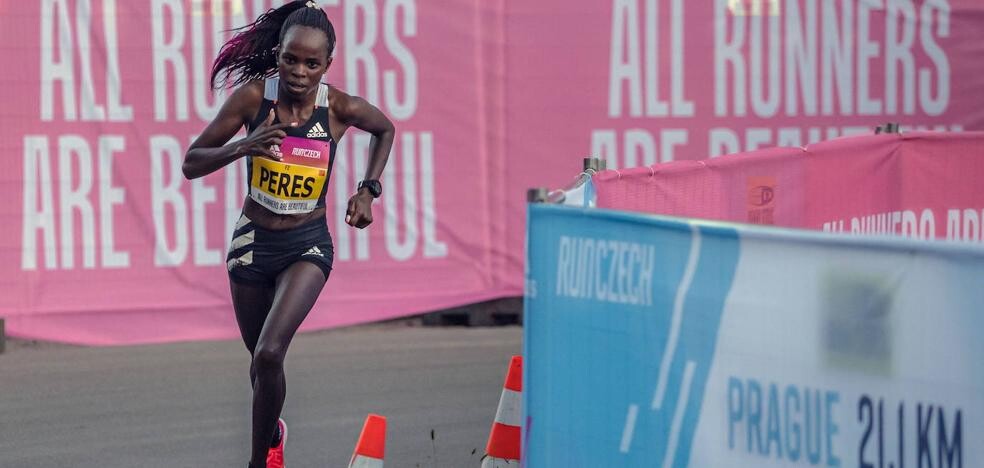
Elkanah Kibet also withdrew from the Nov. 6 race, a year after he was the top finisher among American male runners in fourth place. Kibet, a lieutenant in the U.S. Army, received orders to report overseas, according to the New York Road Runners.
Other race headliners include: 2018 Boston Marathon winner Des Linden and world champions Gotytom Gebreslase of Ethiopia and Edna Kiplagat of Kenya for the women. And two-time Olympic medalist Galen Rupp, defending champion Albert Korir of Kenya, reigning Boston Marathon champion Evans Chebet, Olympic silver medalist Abdi Nageeye of the Netherlands and 2020 London Marathon winner Shura Kitata for the men.
(10/14/2022) ⚡AMPby Olympic Talk
TCS New York City Marathon
The first New York City Marathon, organized in 1970 by Fred Lebow and Vince Chiappetta, was held entirely in Central Park. Of 127 entrants, only 55 men finished; the sole female entrant dropped out due to illness. Winners were given inexpensive wristwatches and recycled baseball and bowling trophies. The entry fee was $1 and the total event budget...
more...

